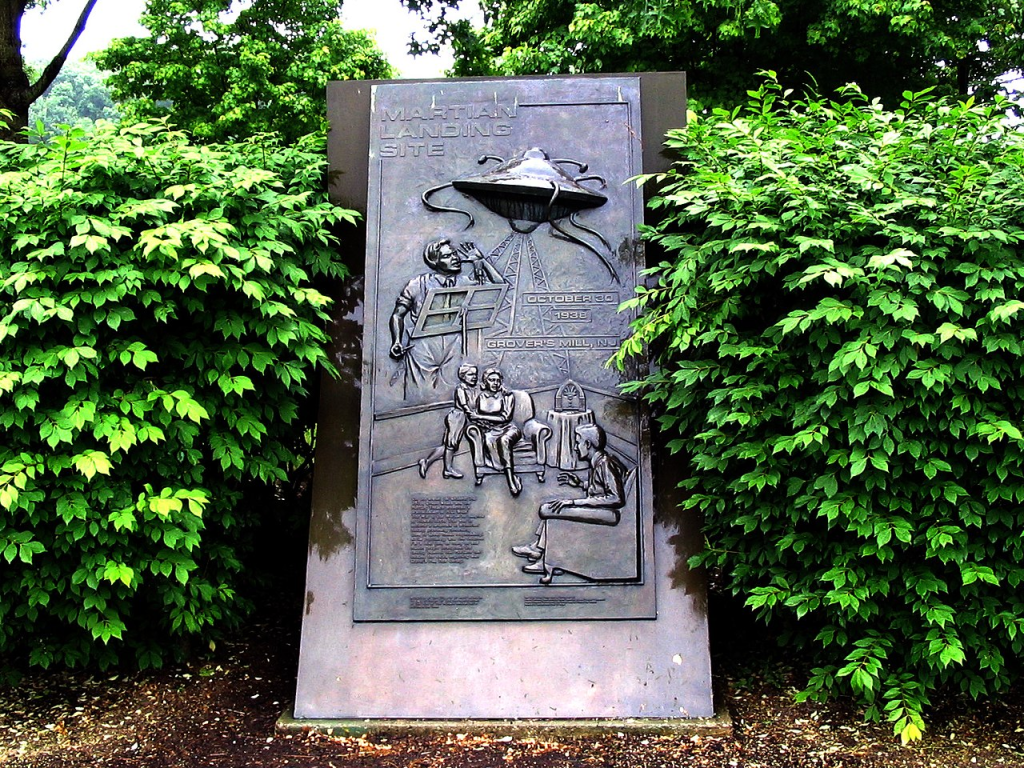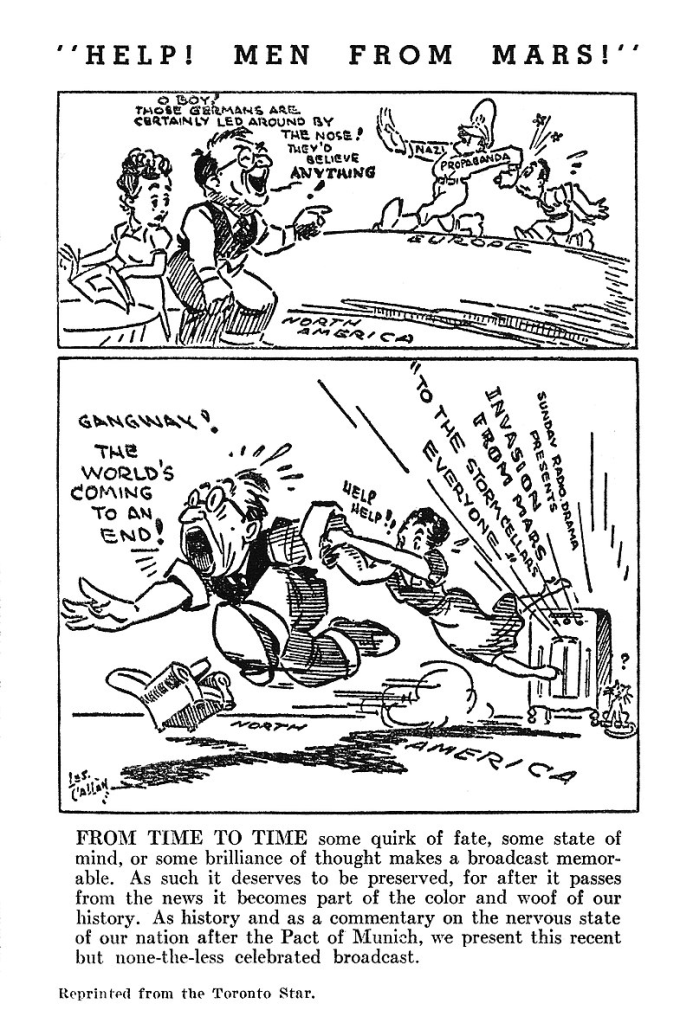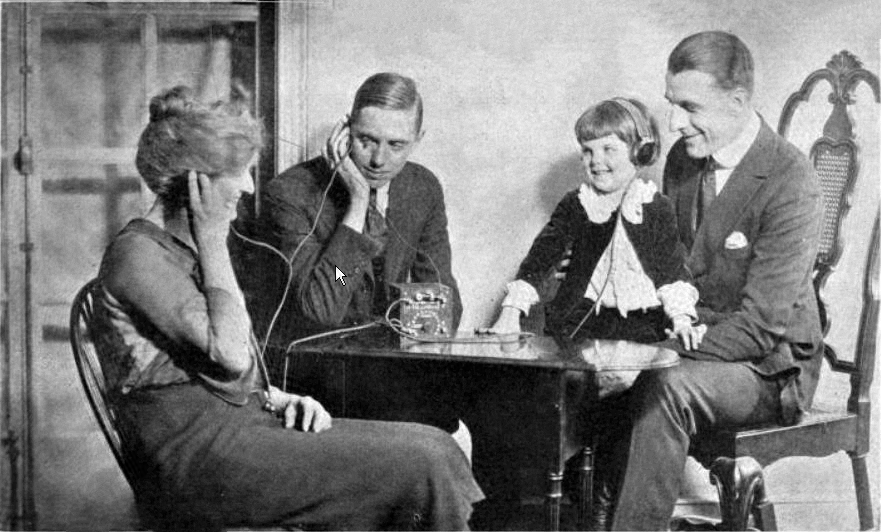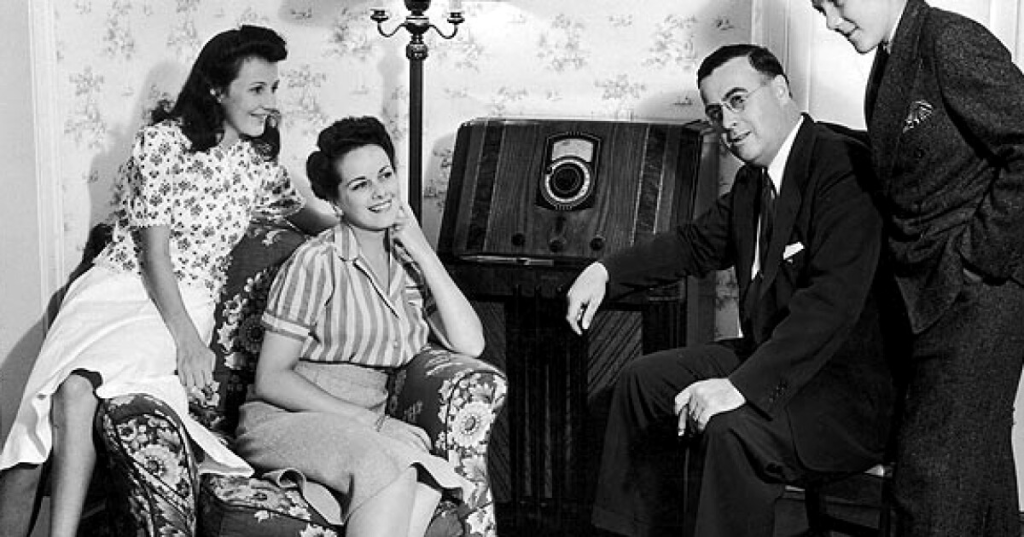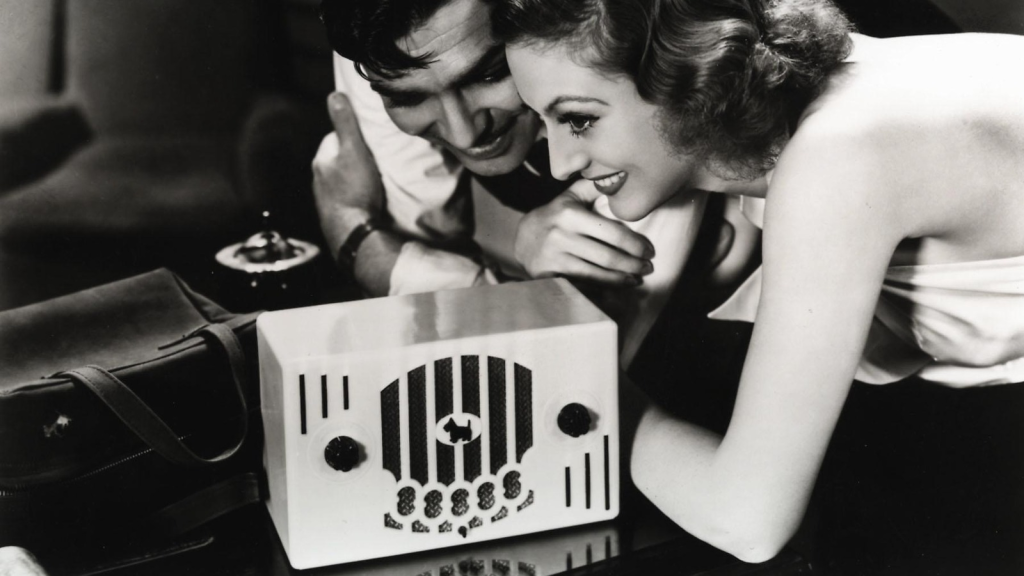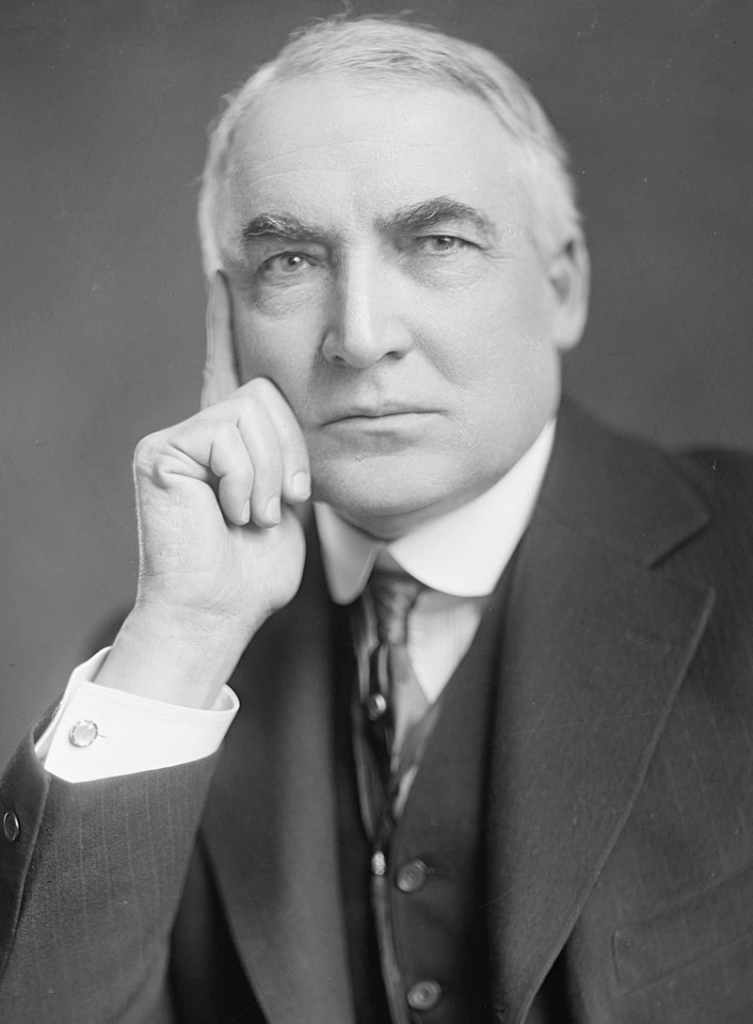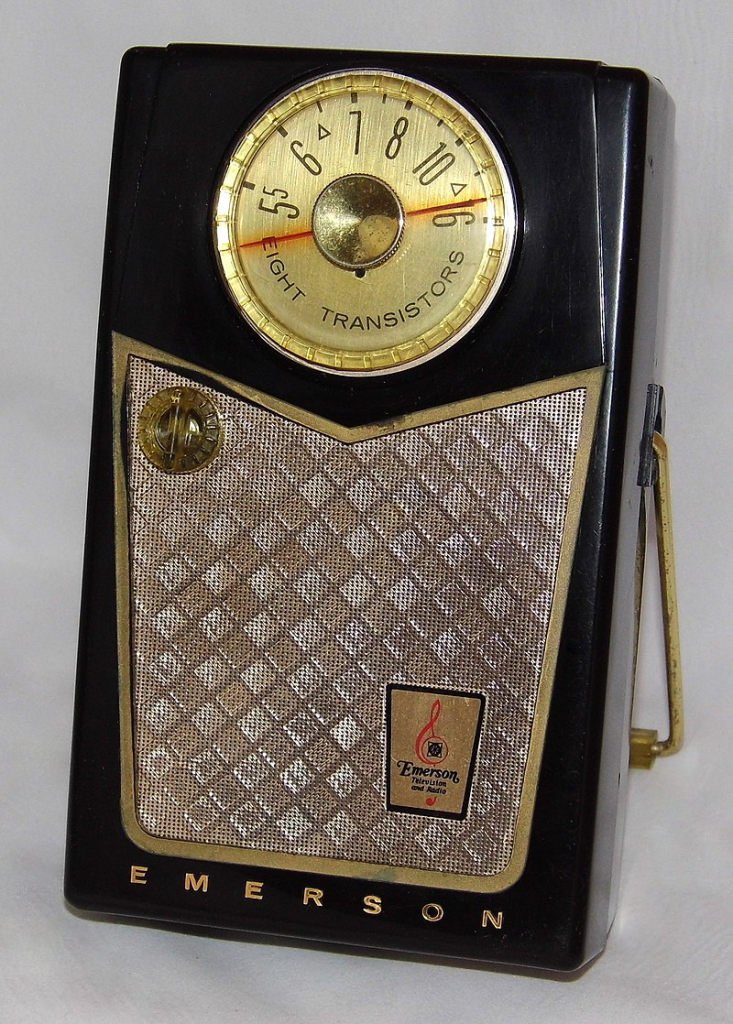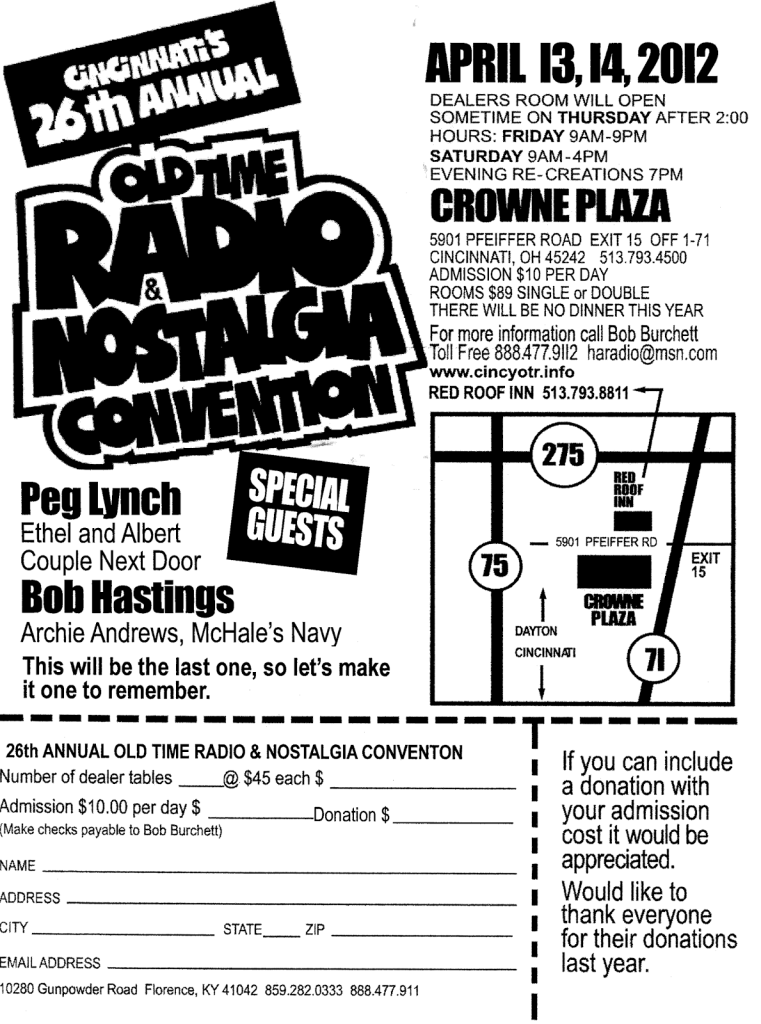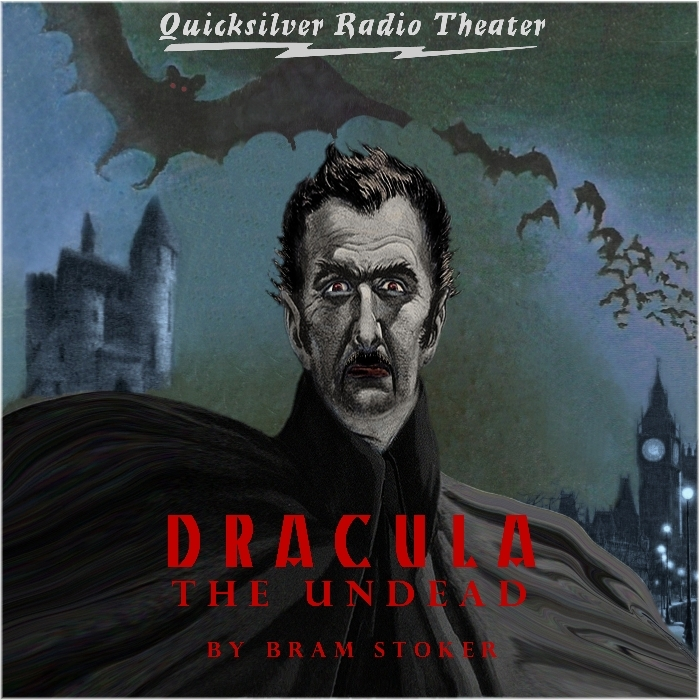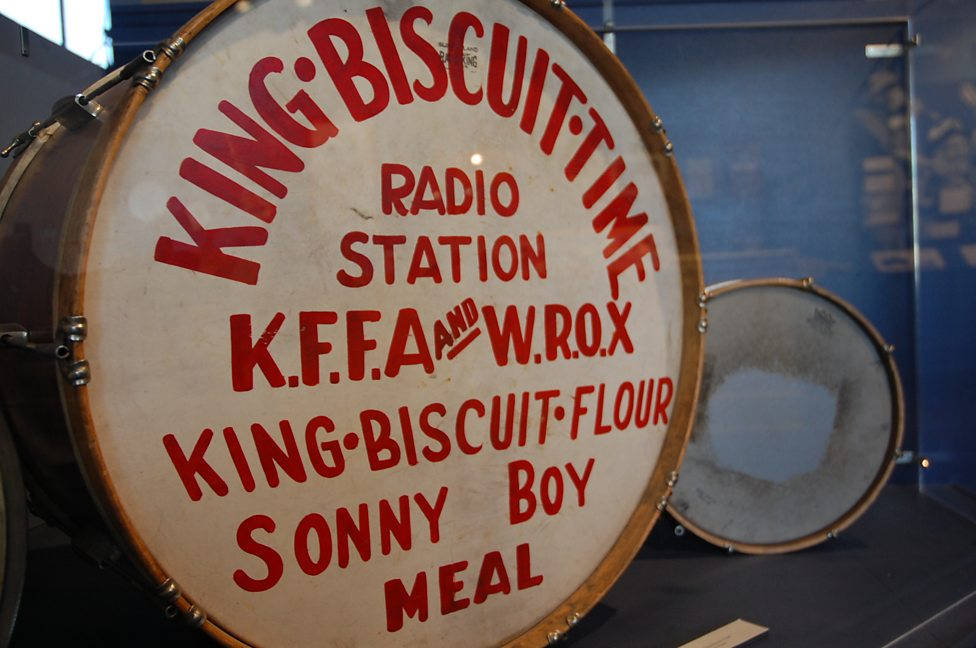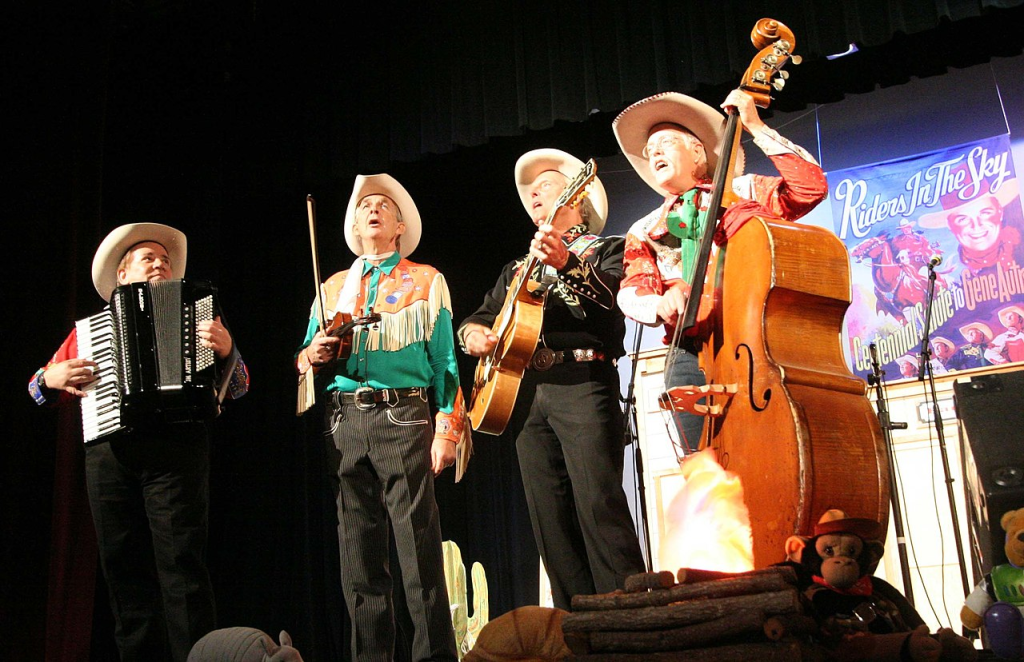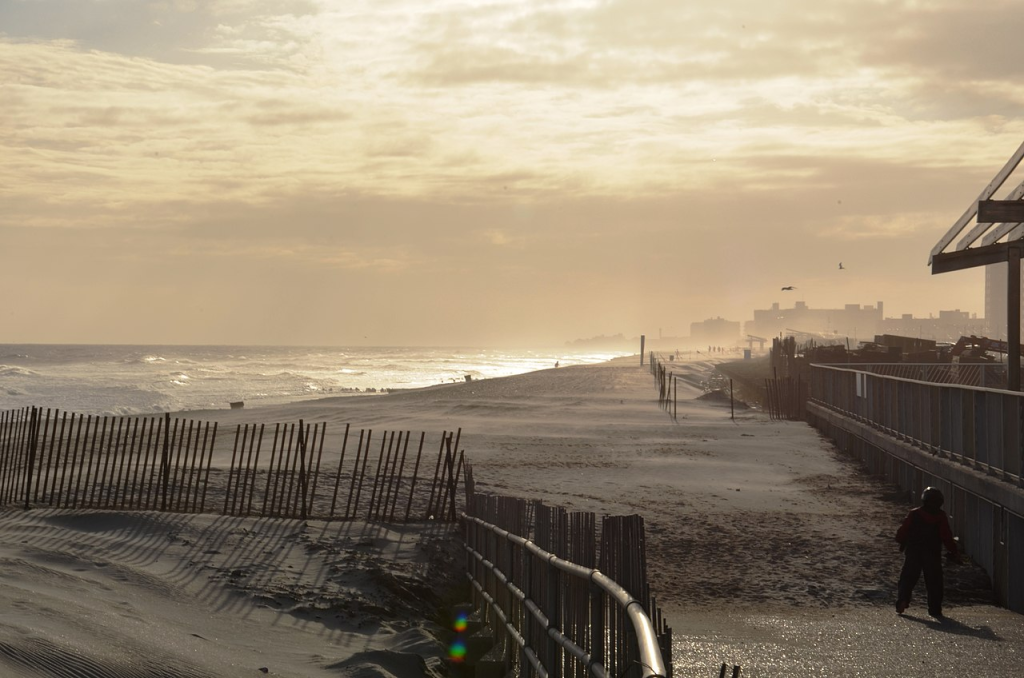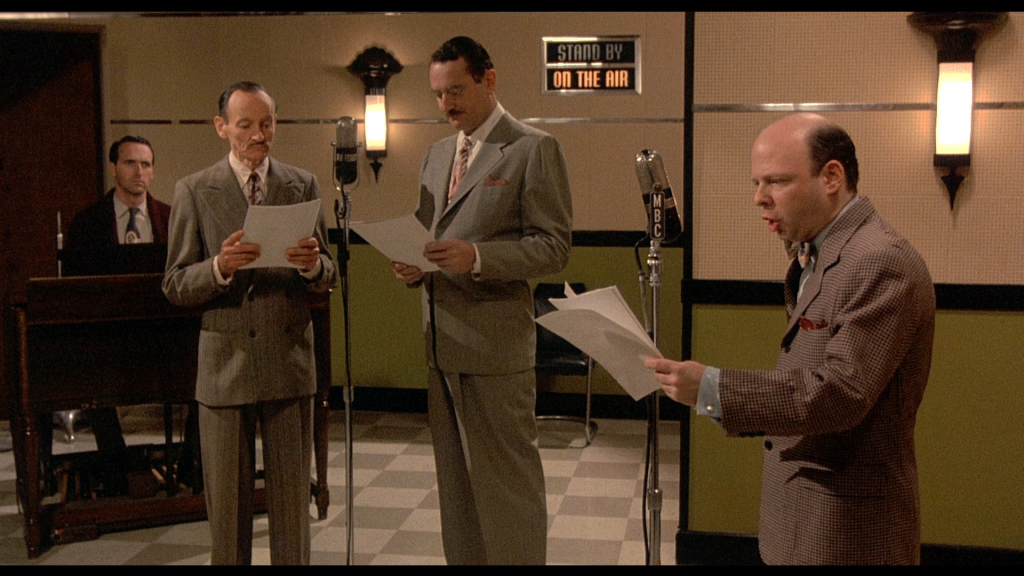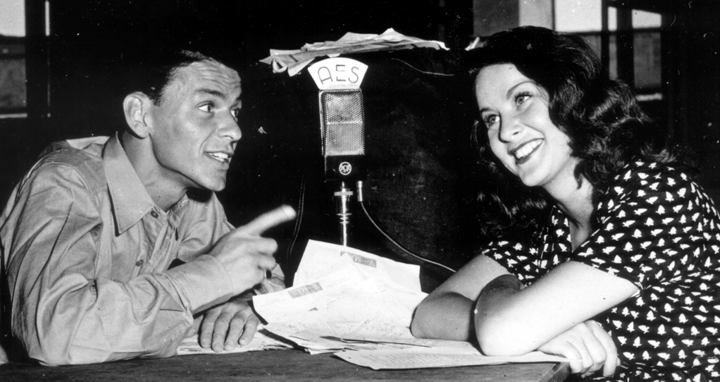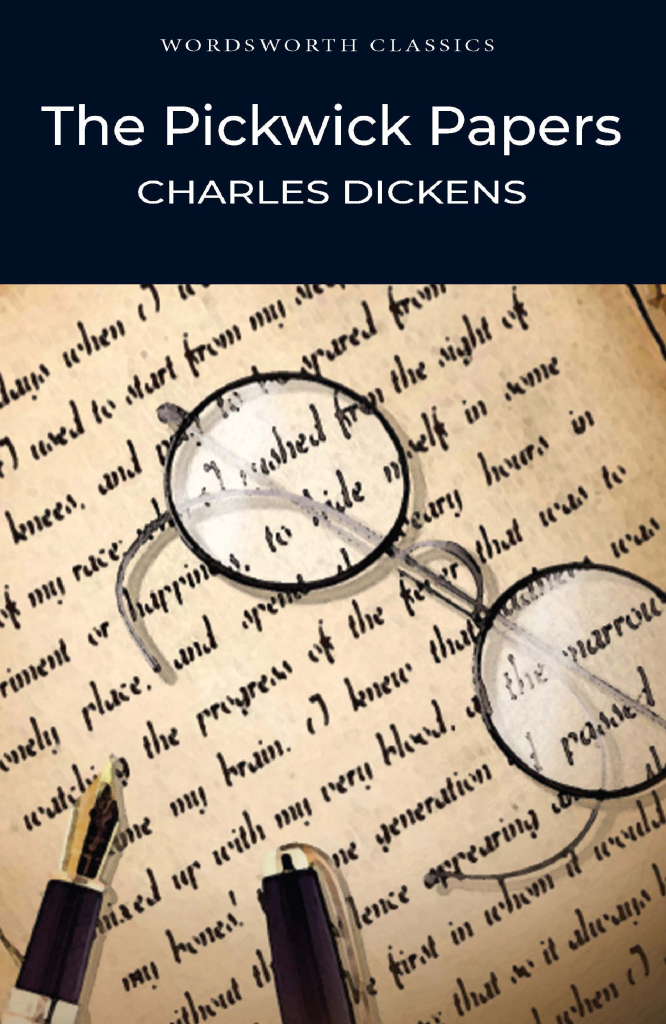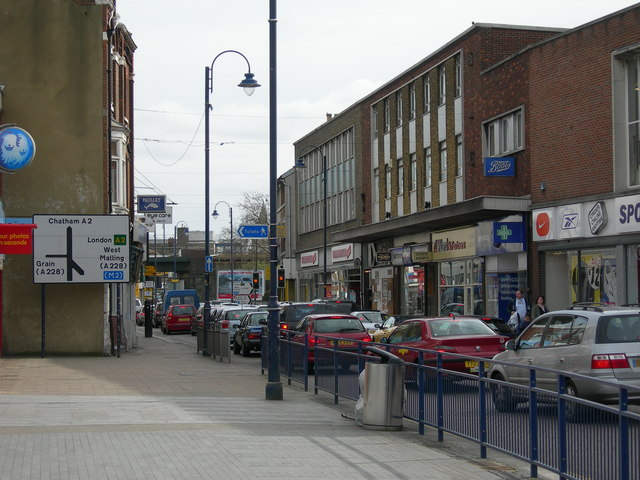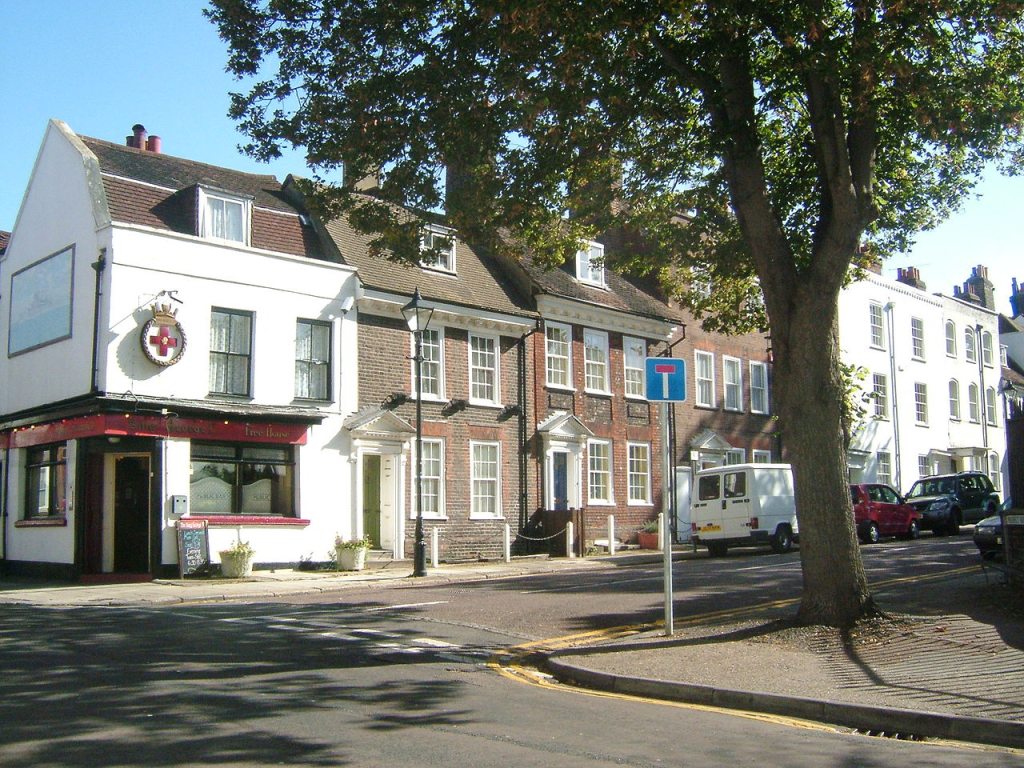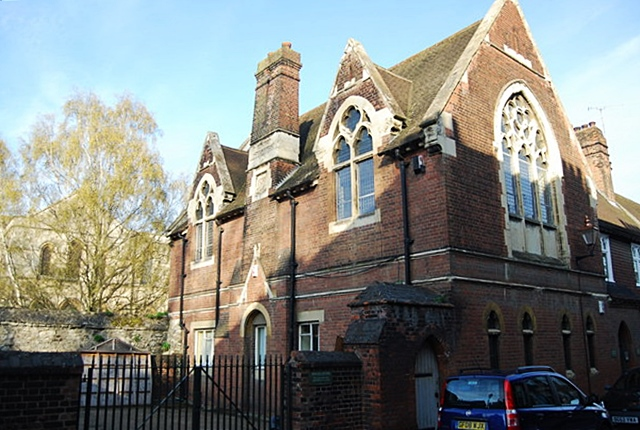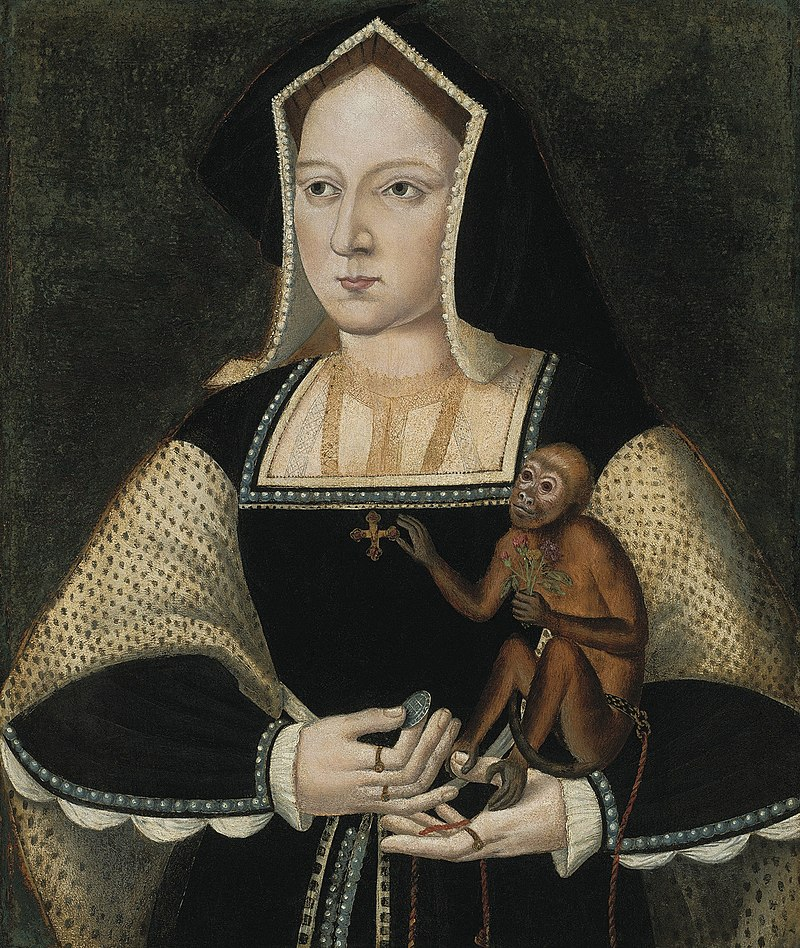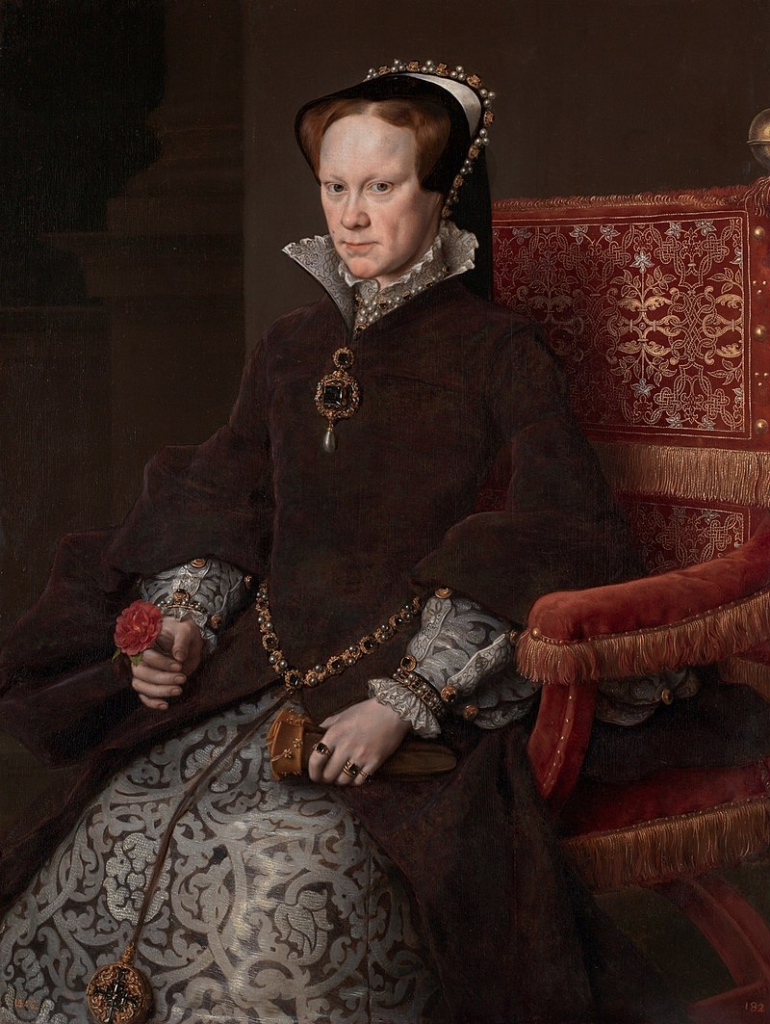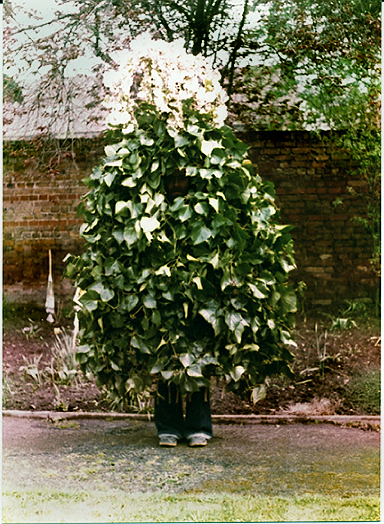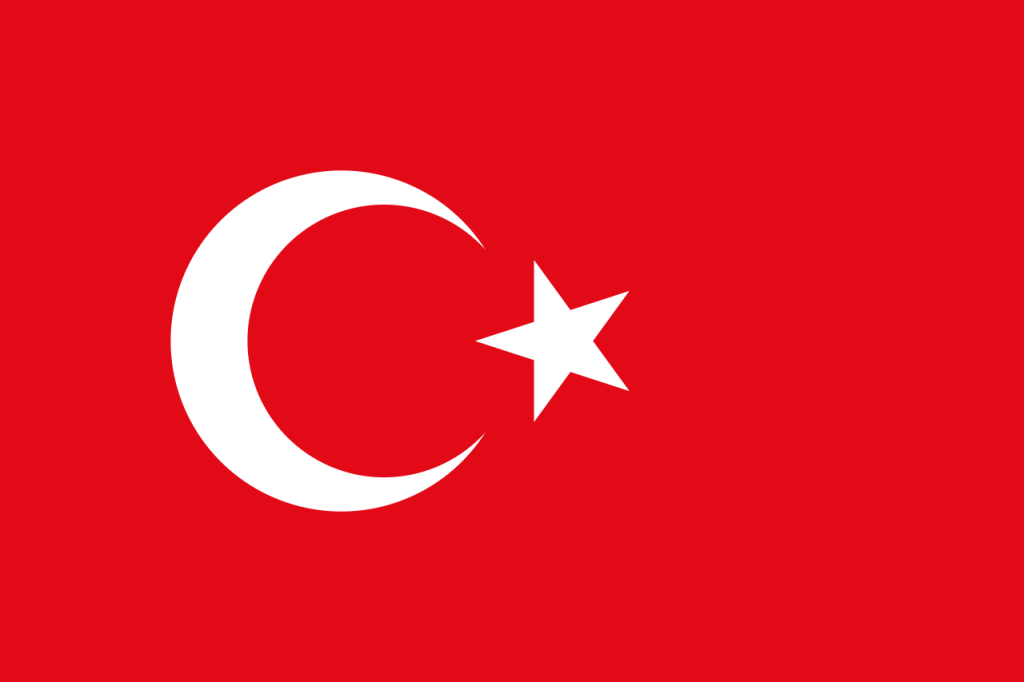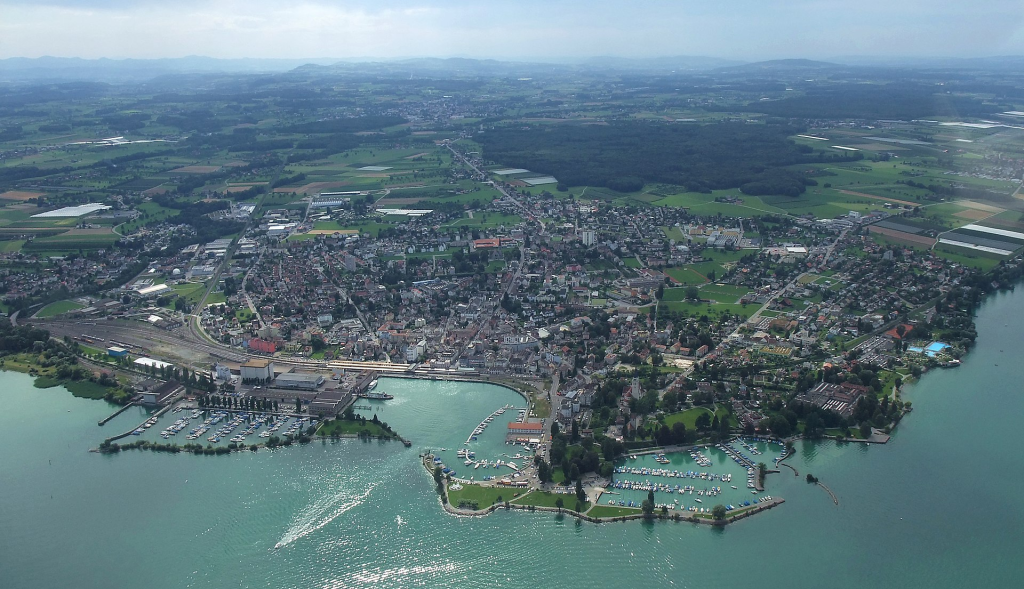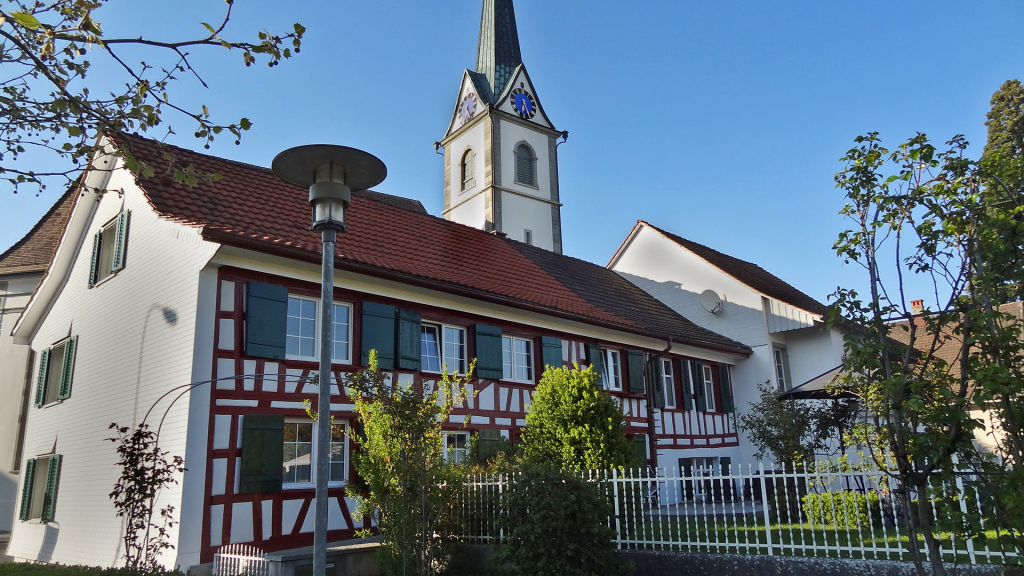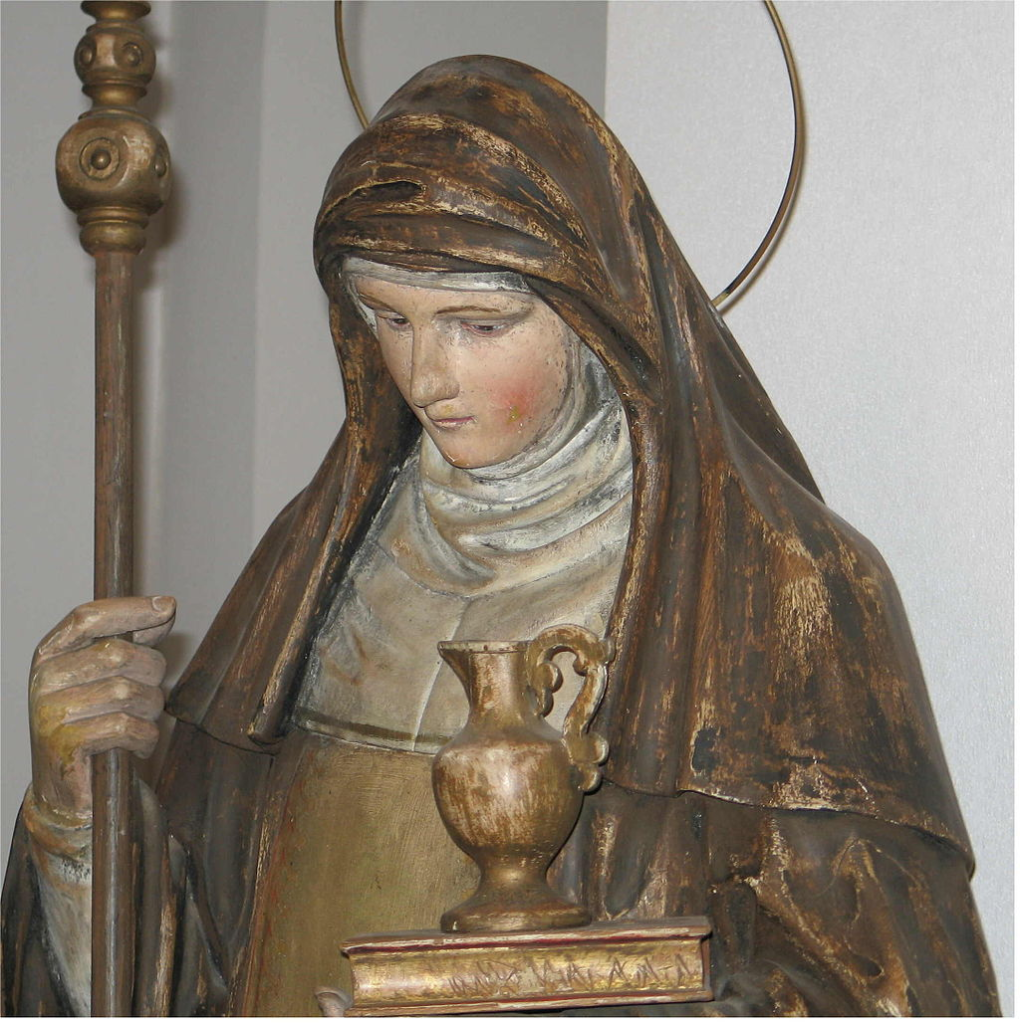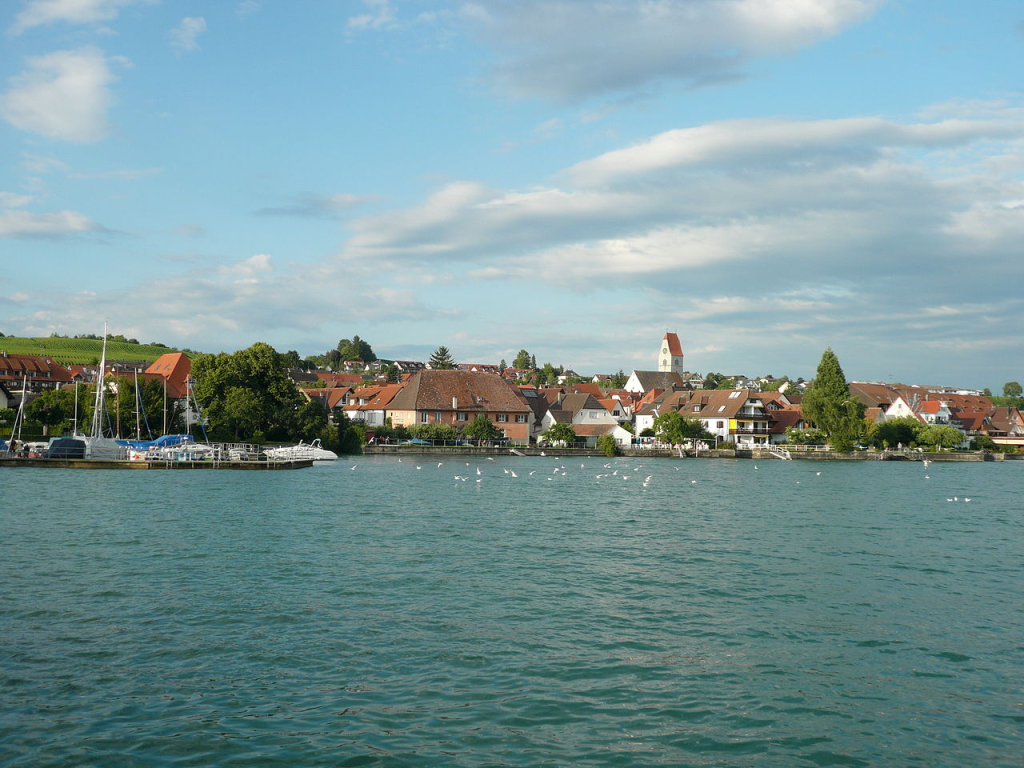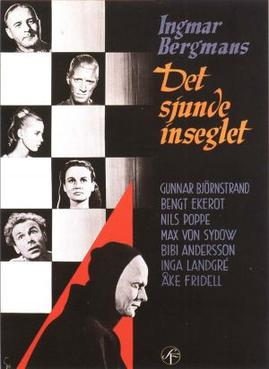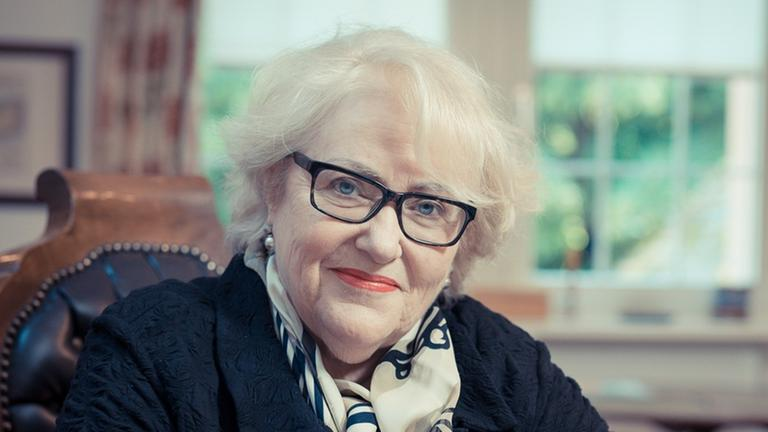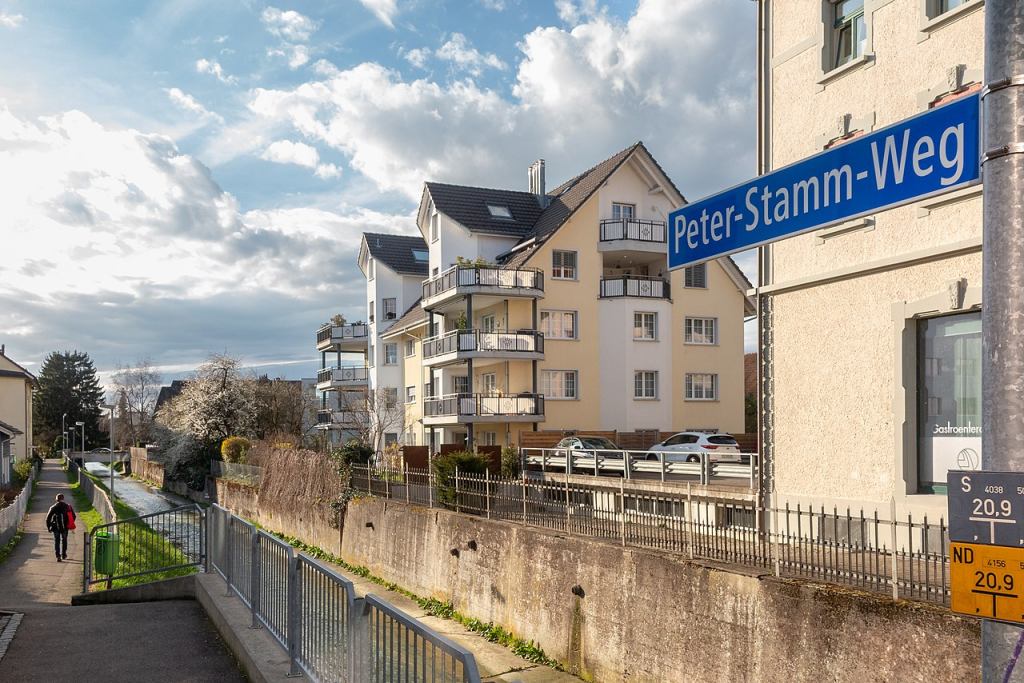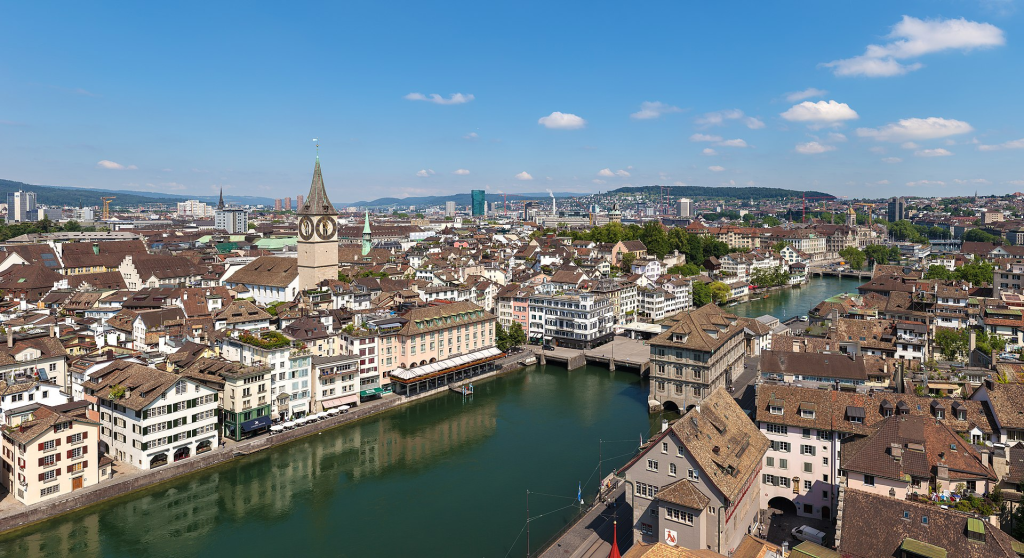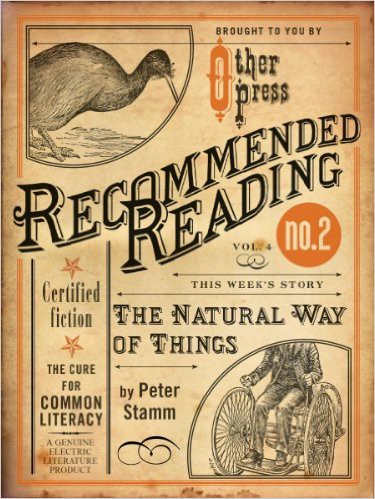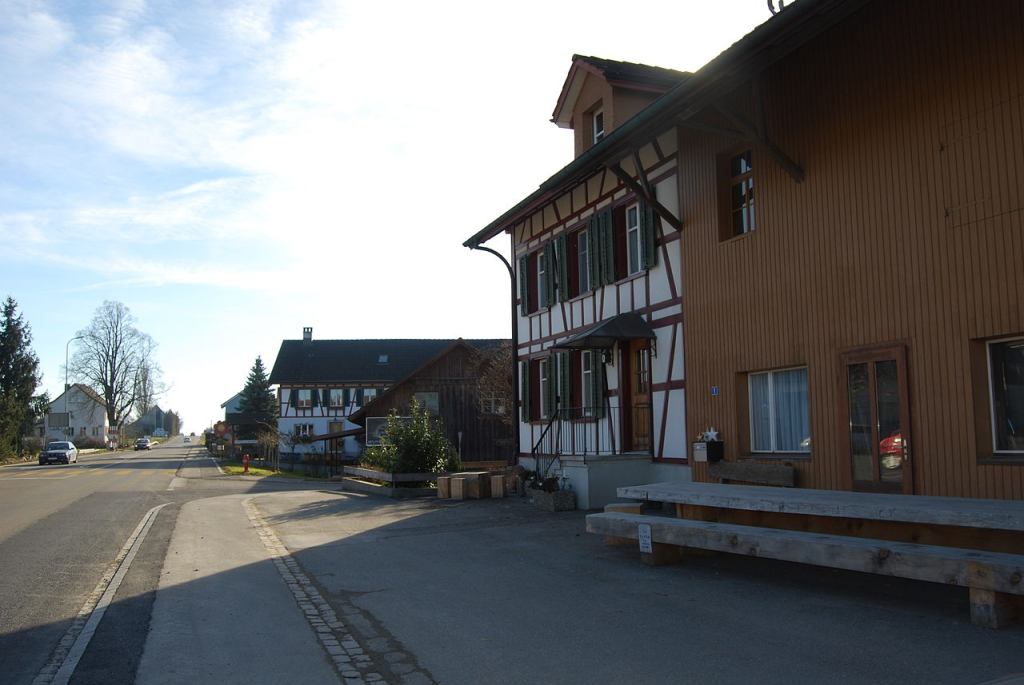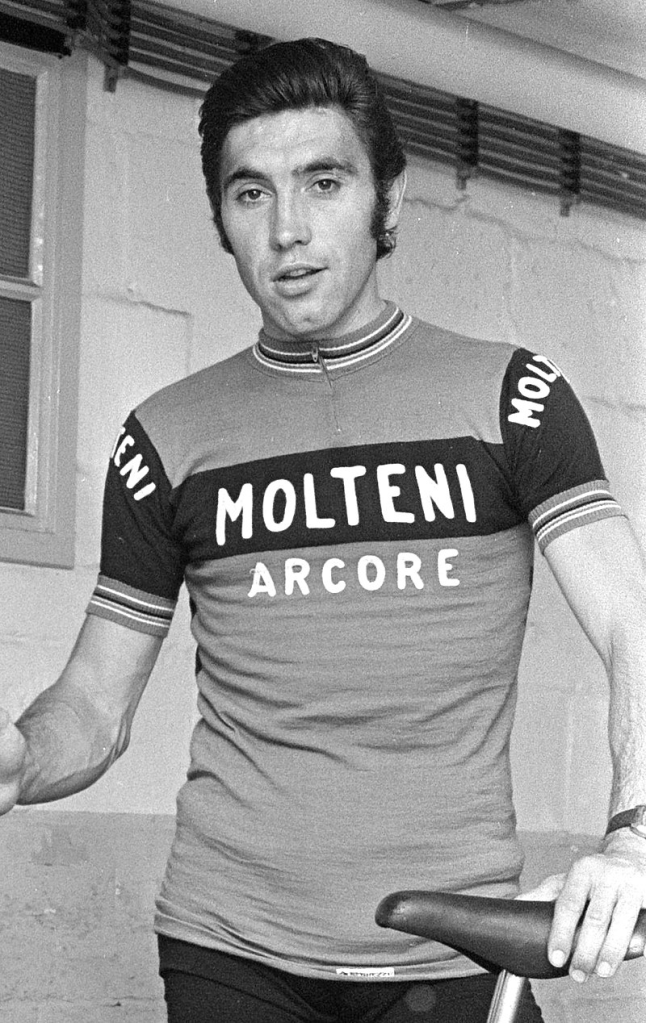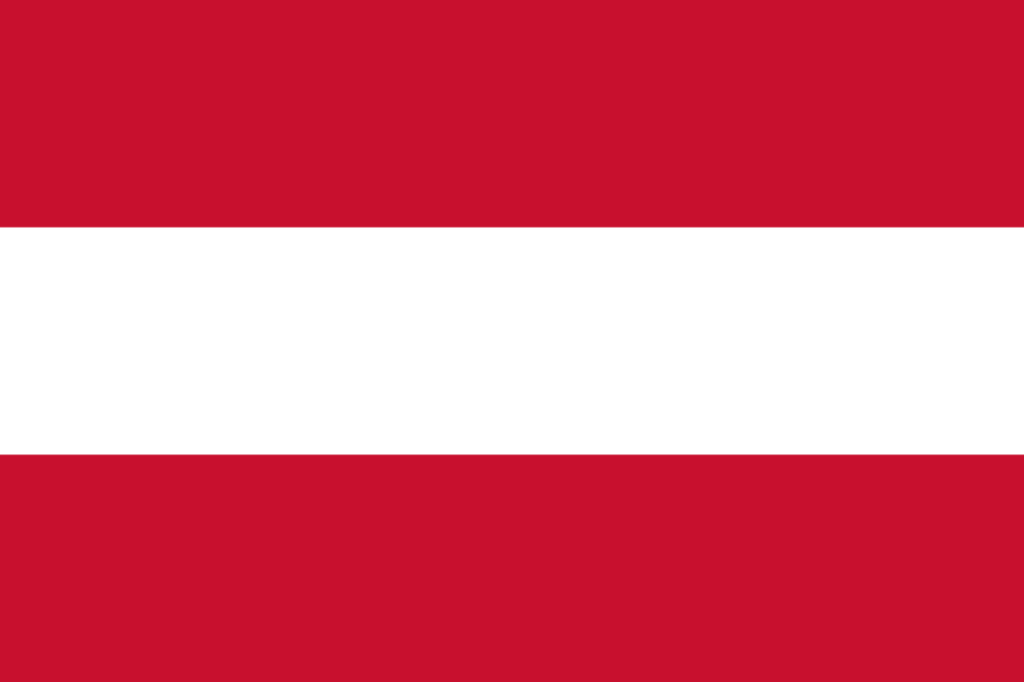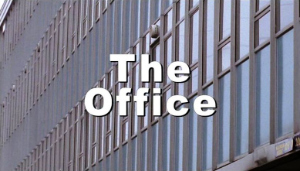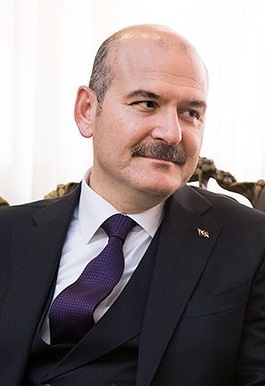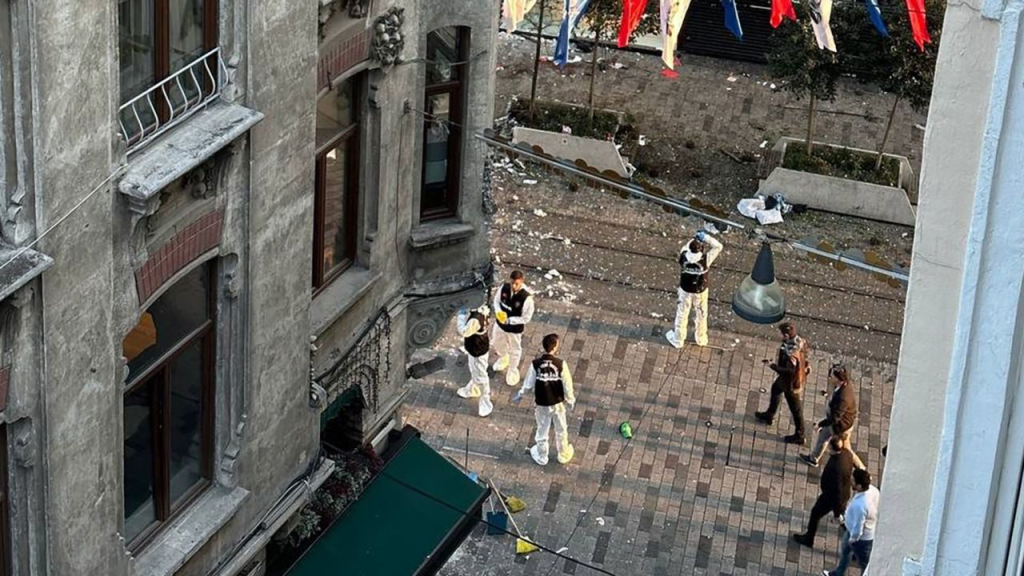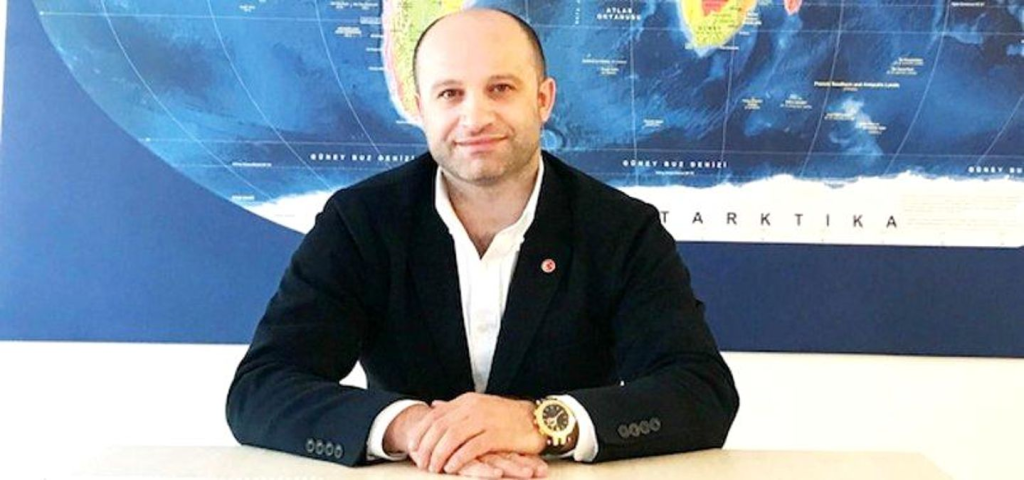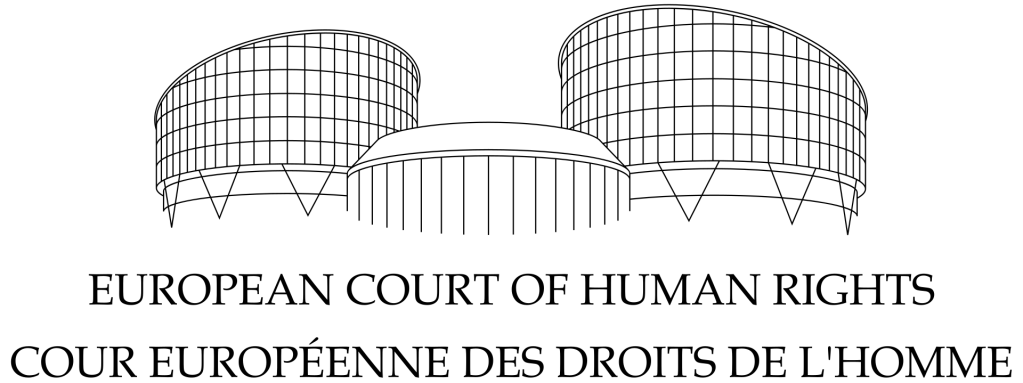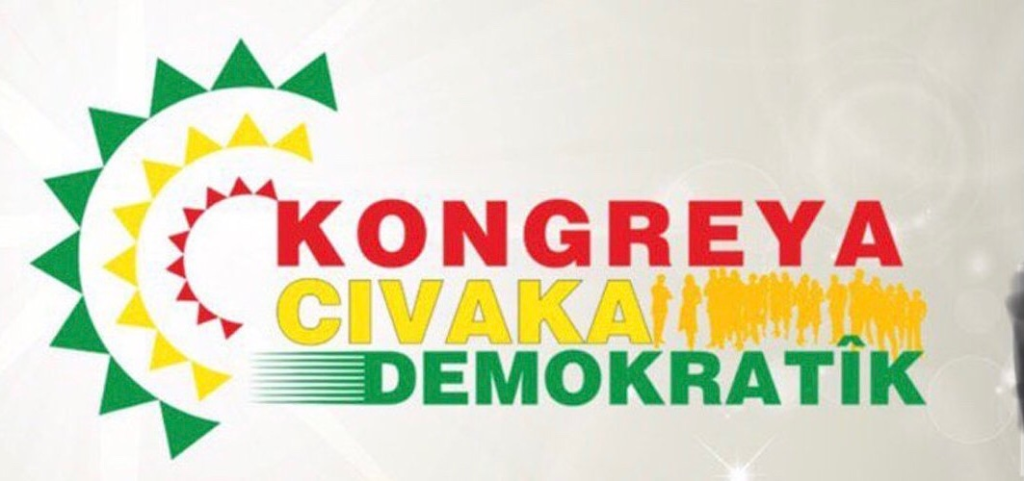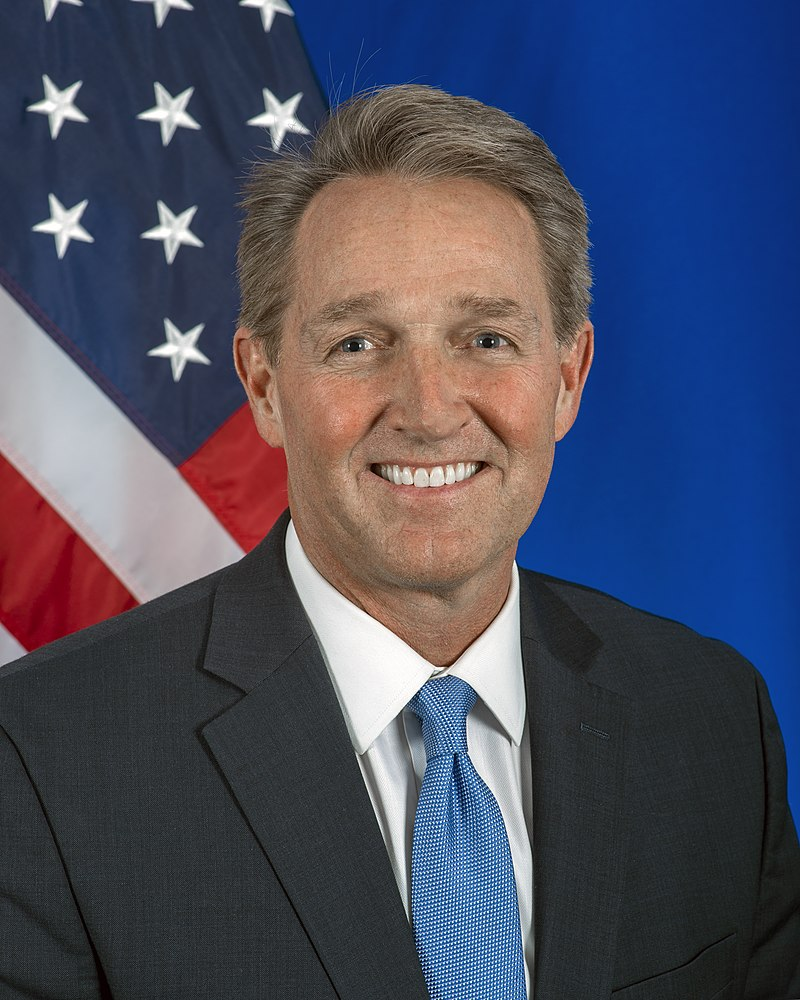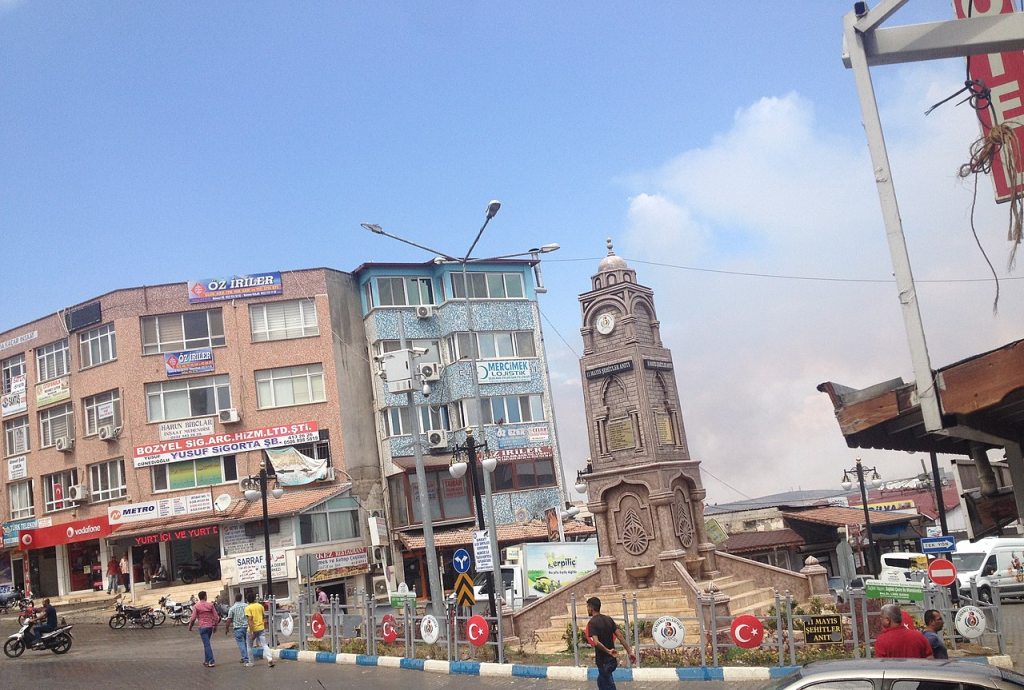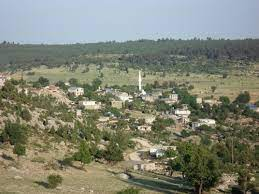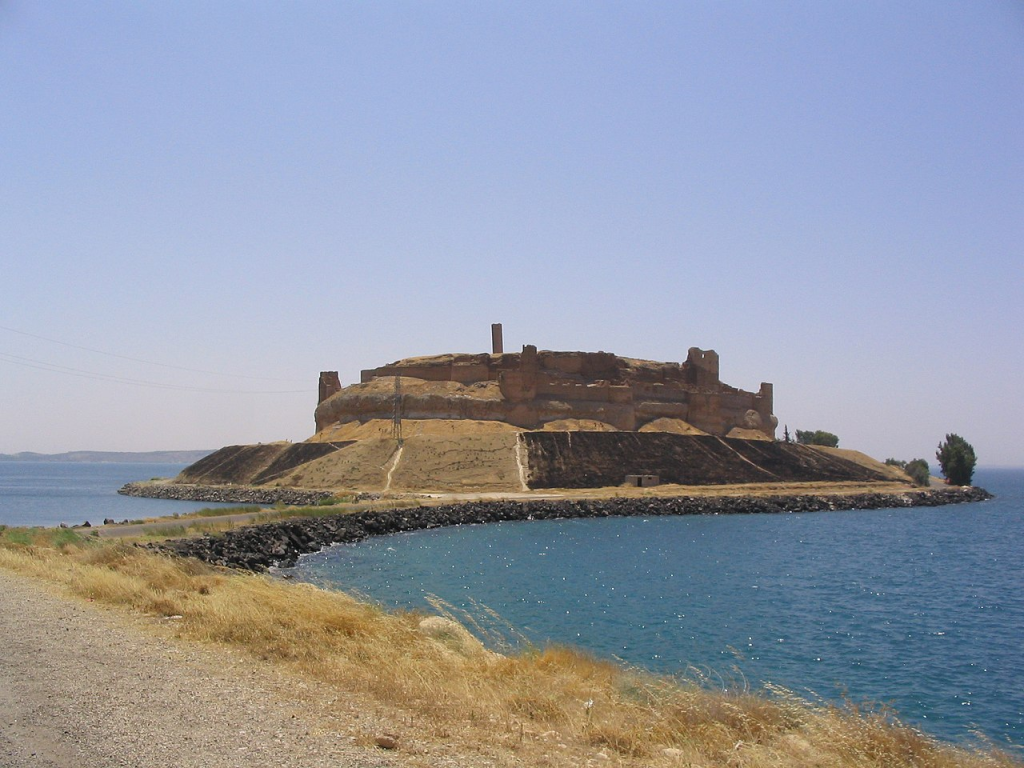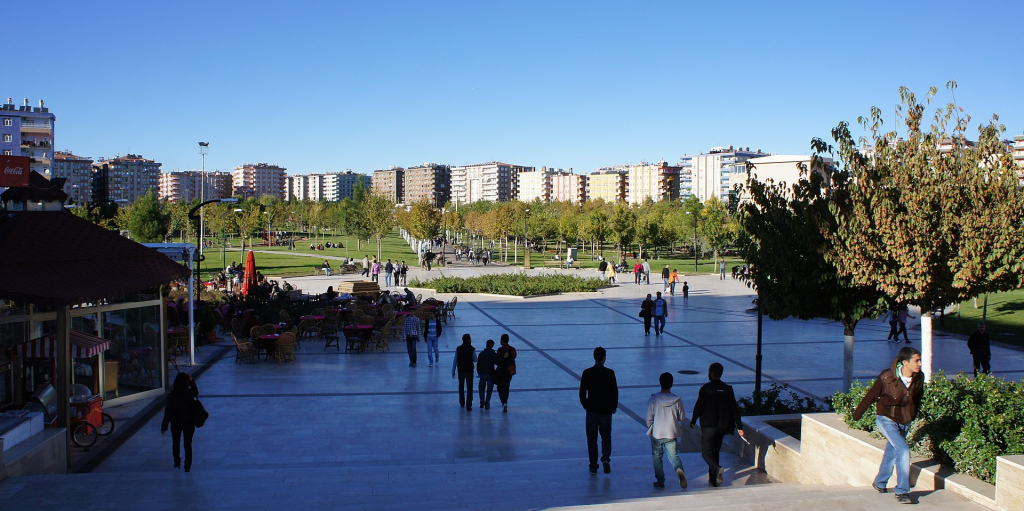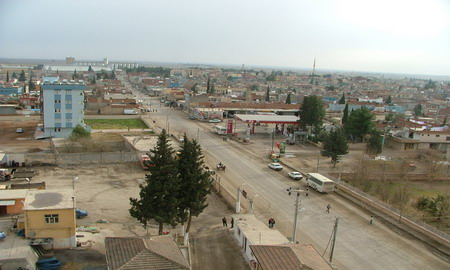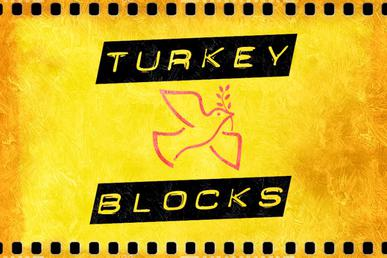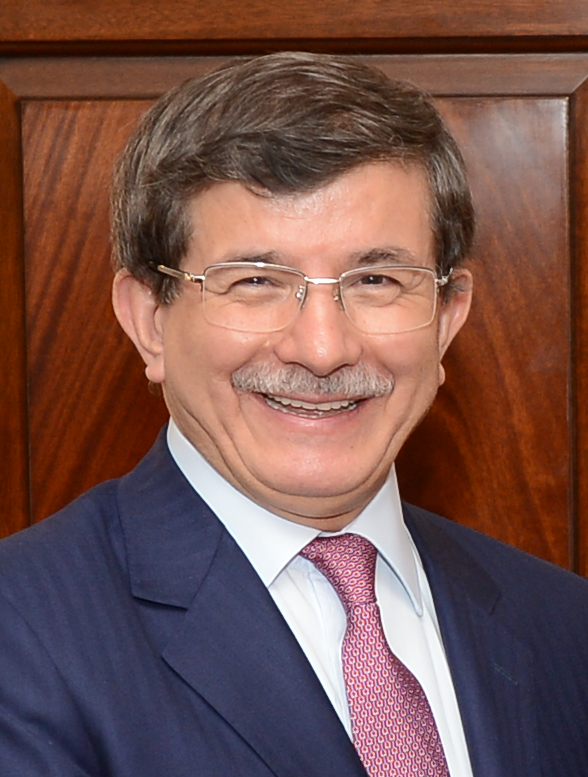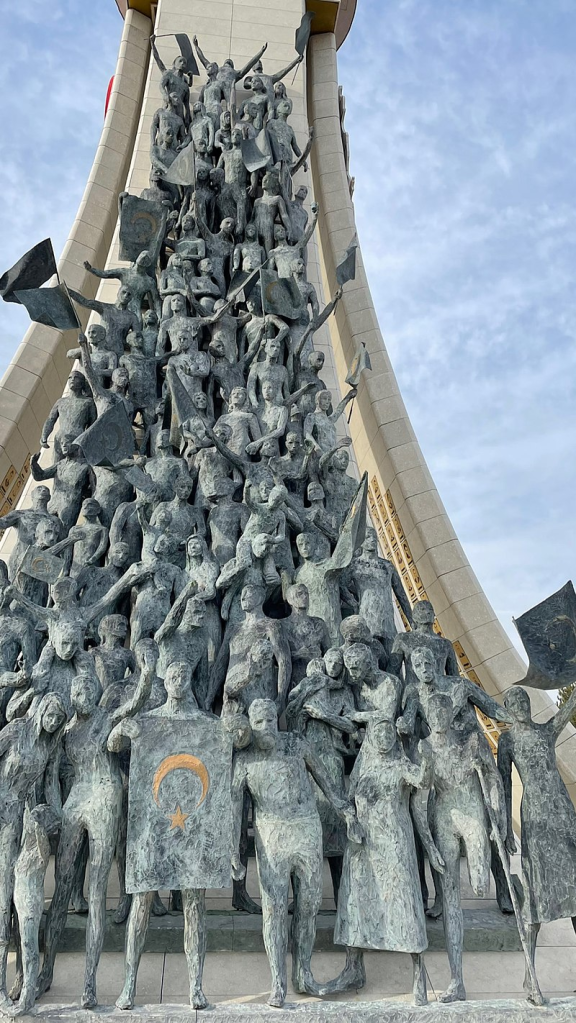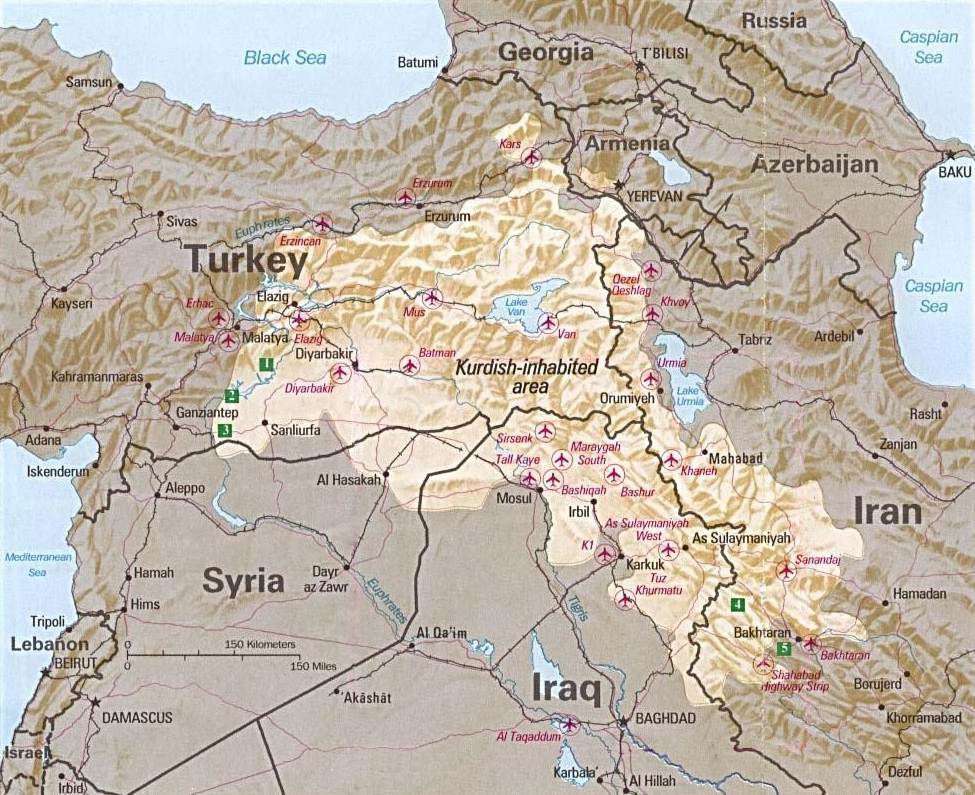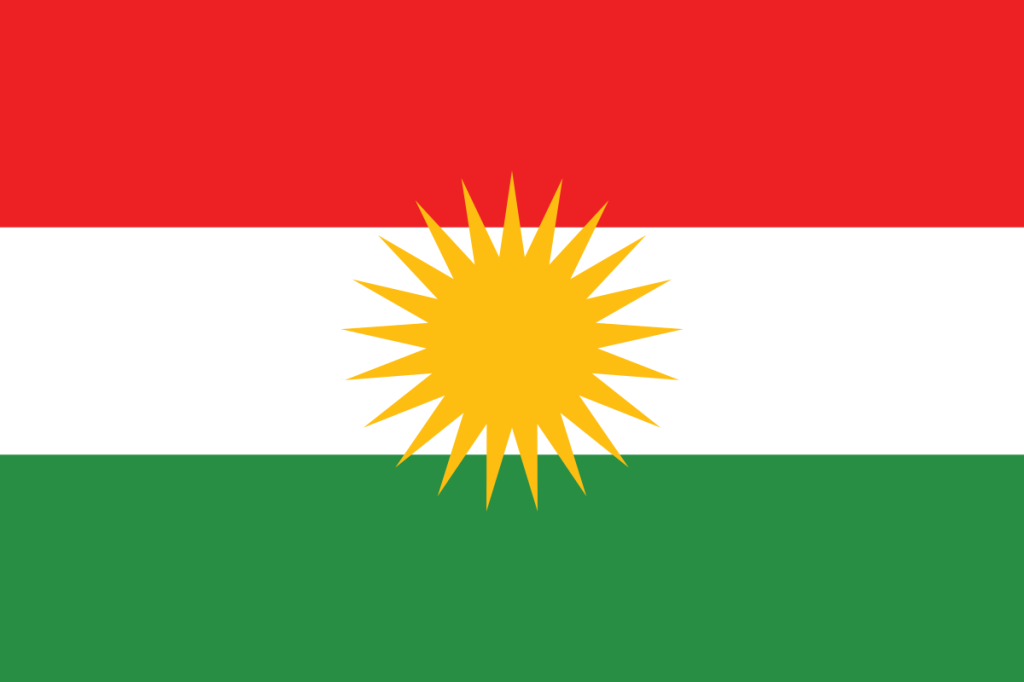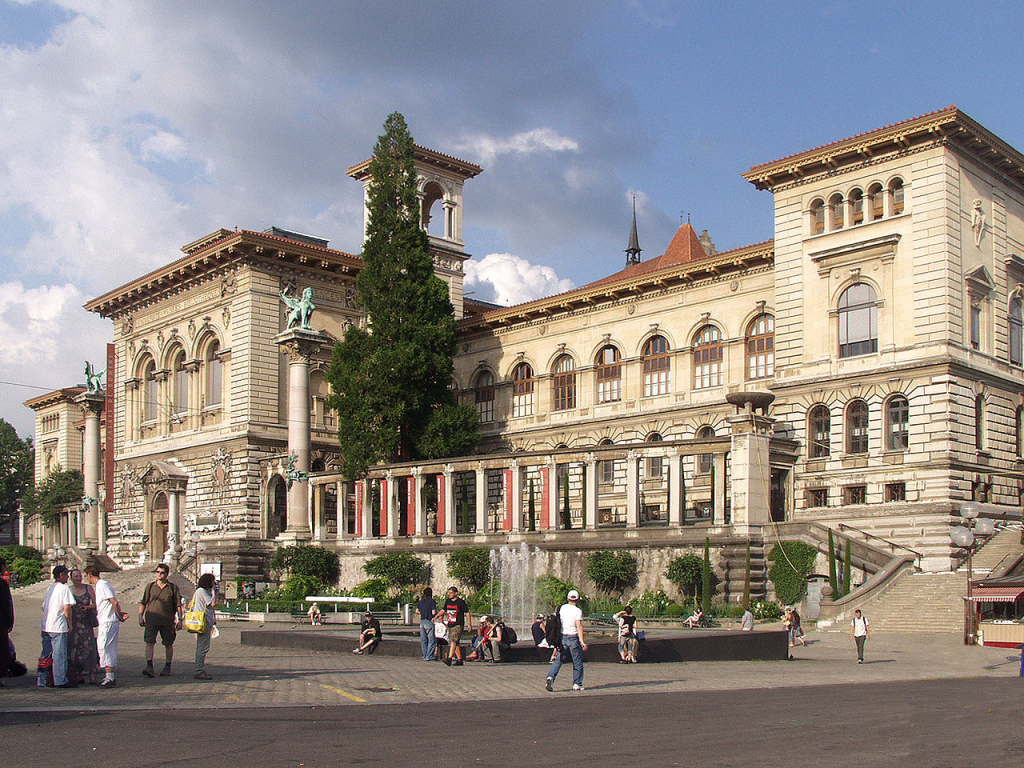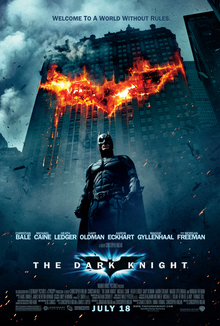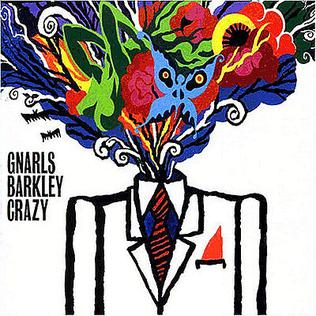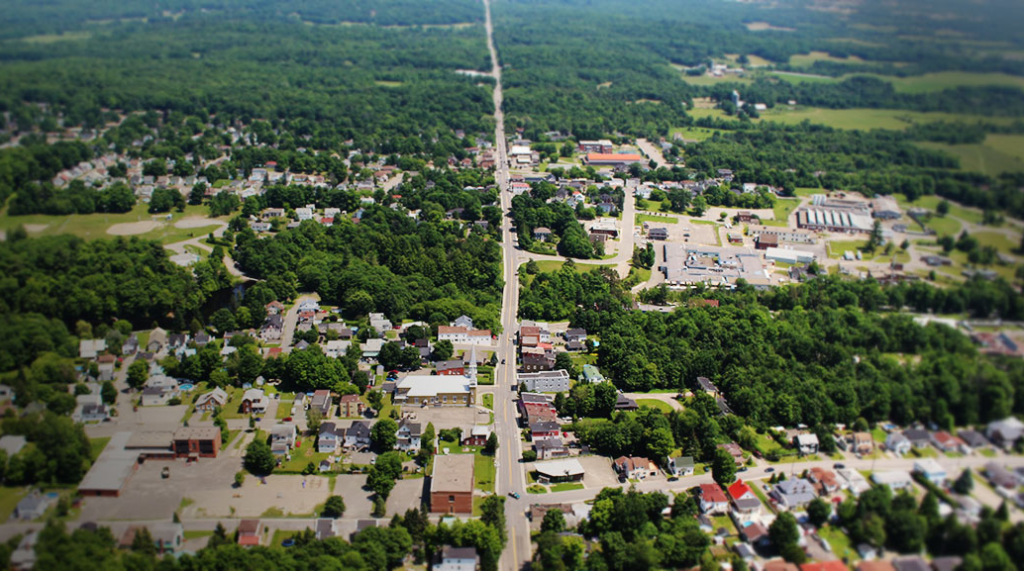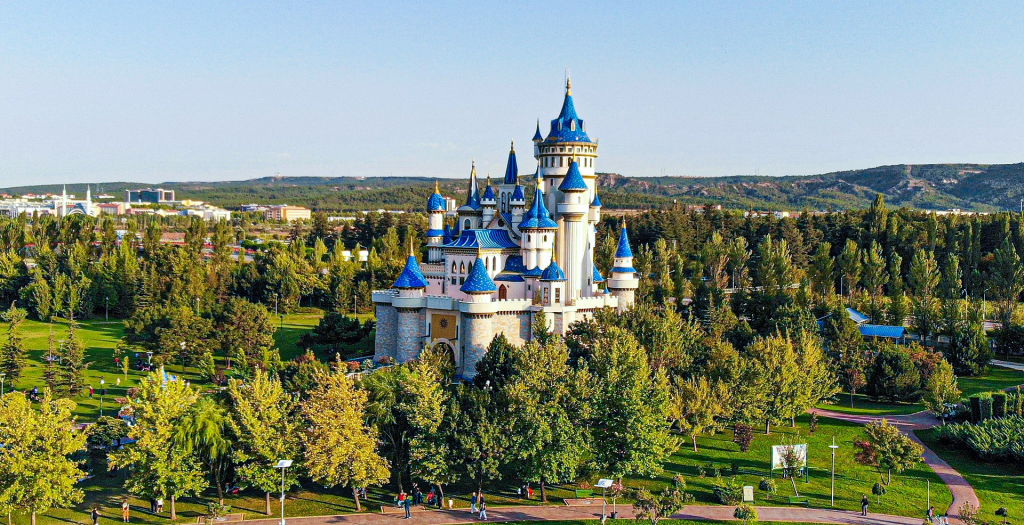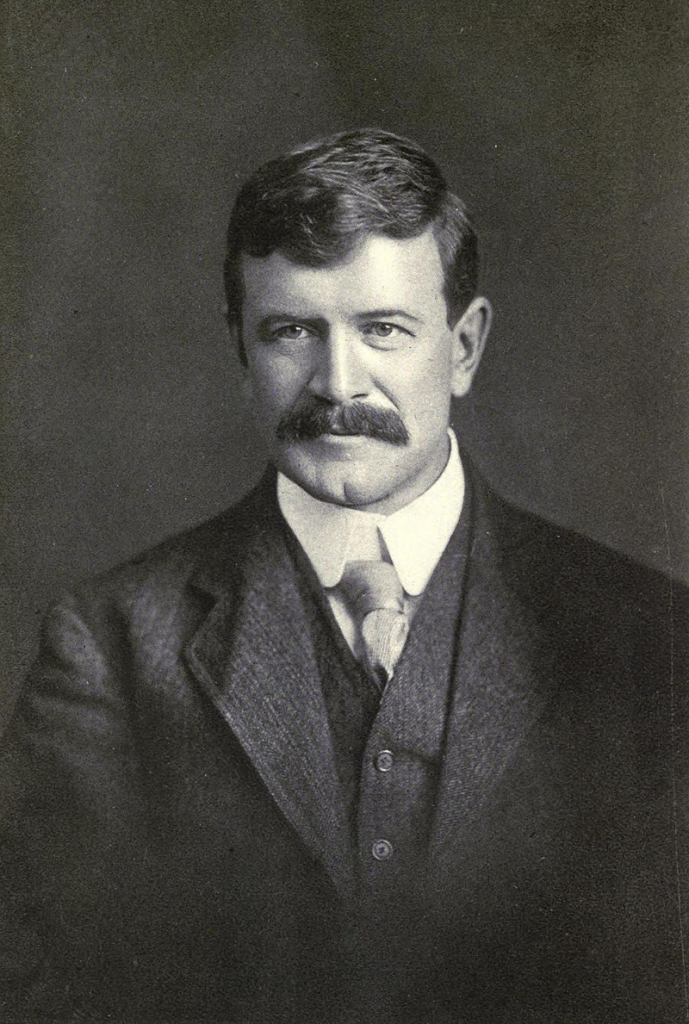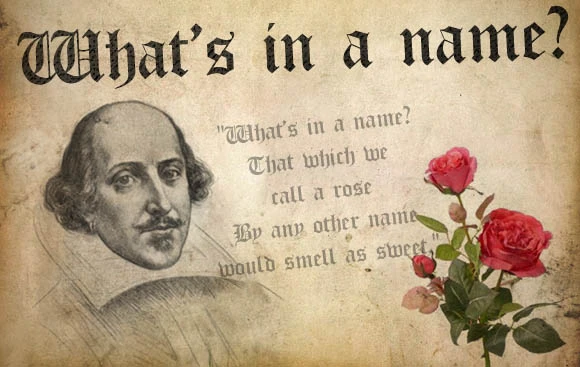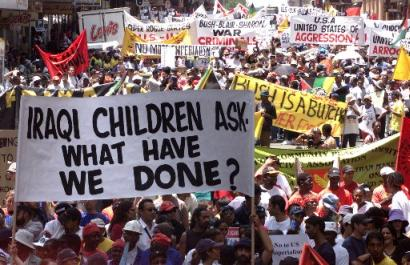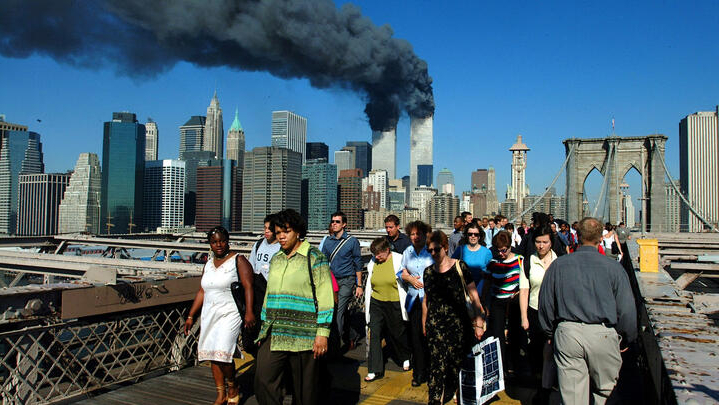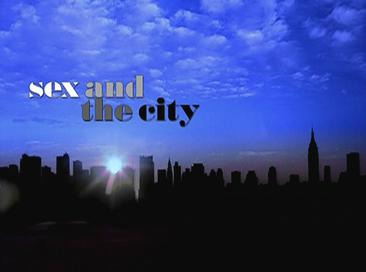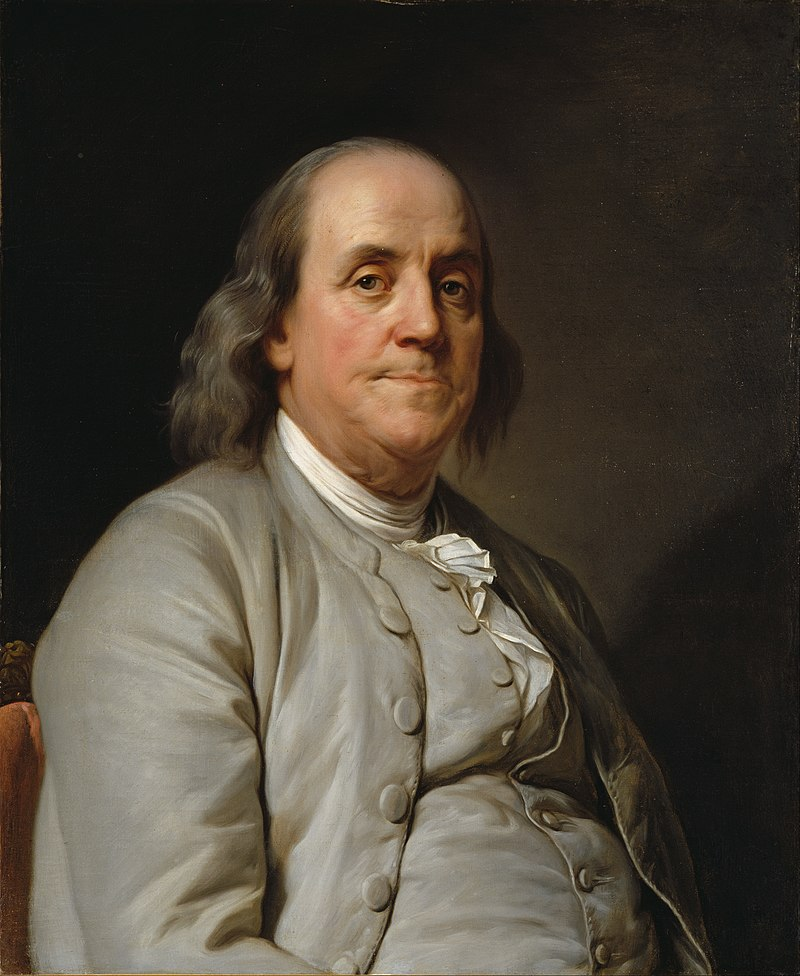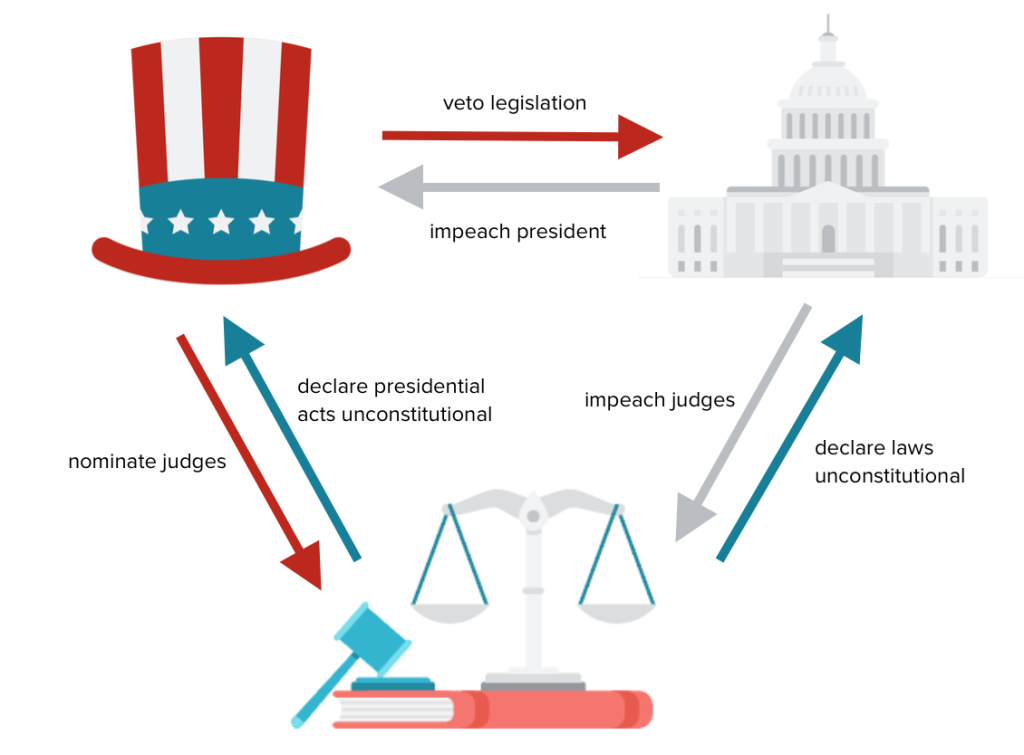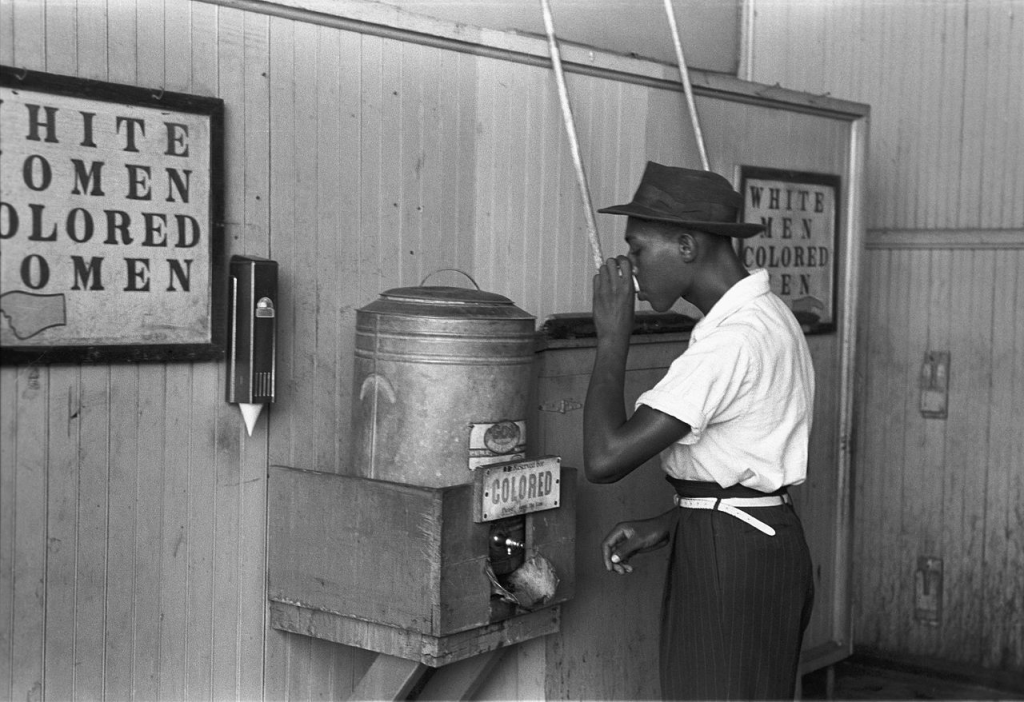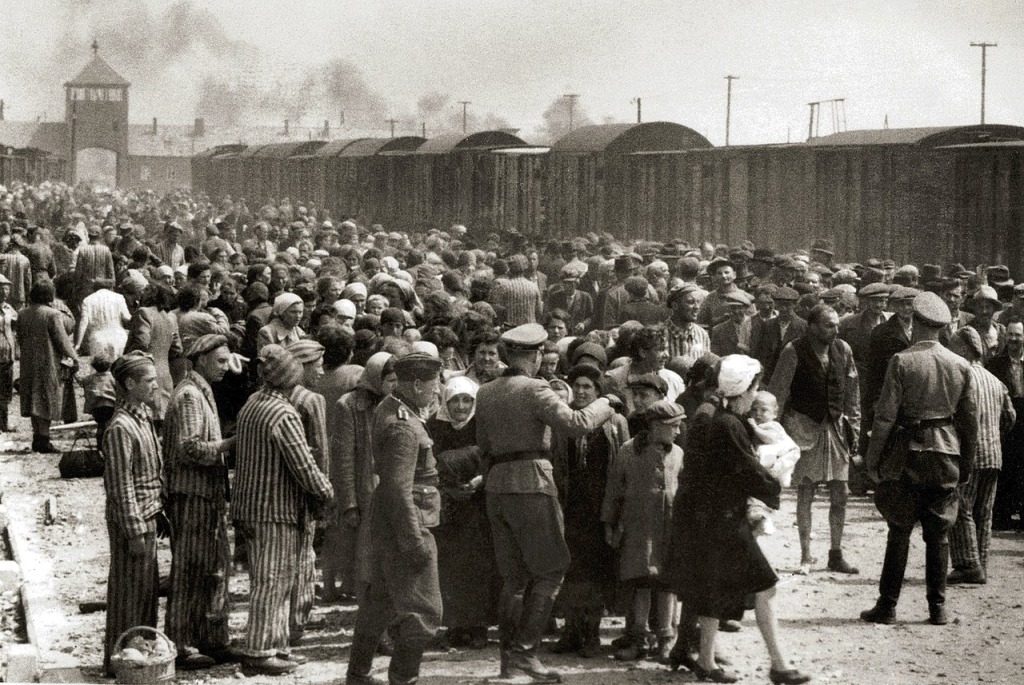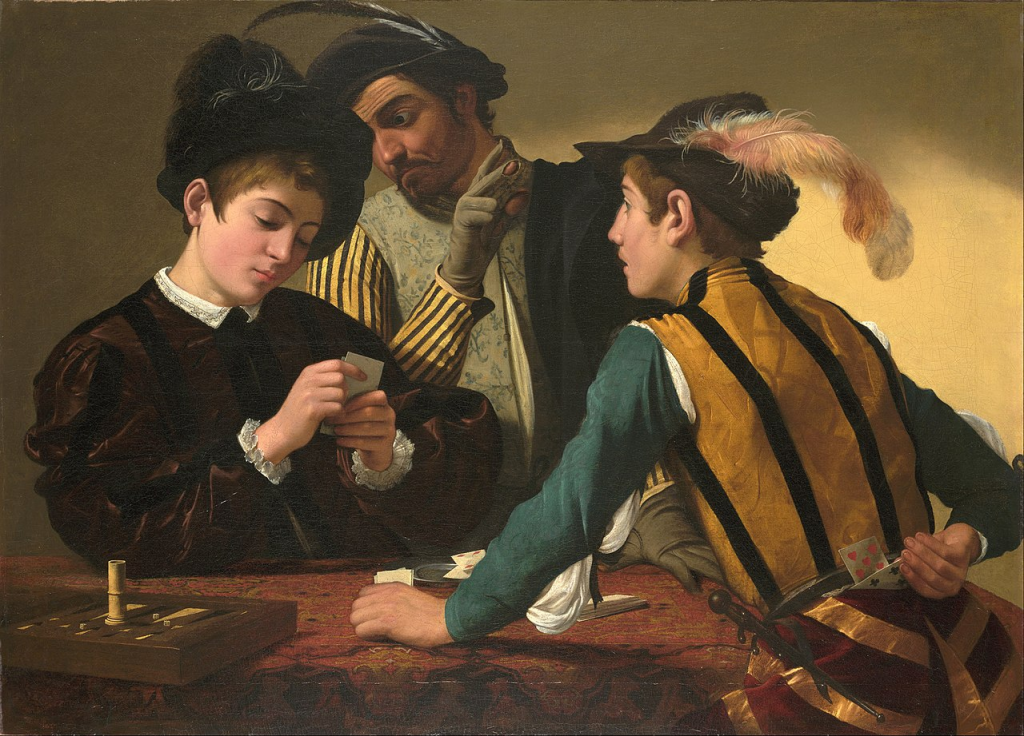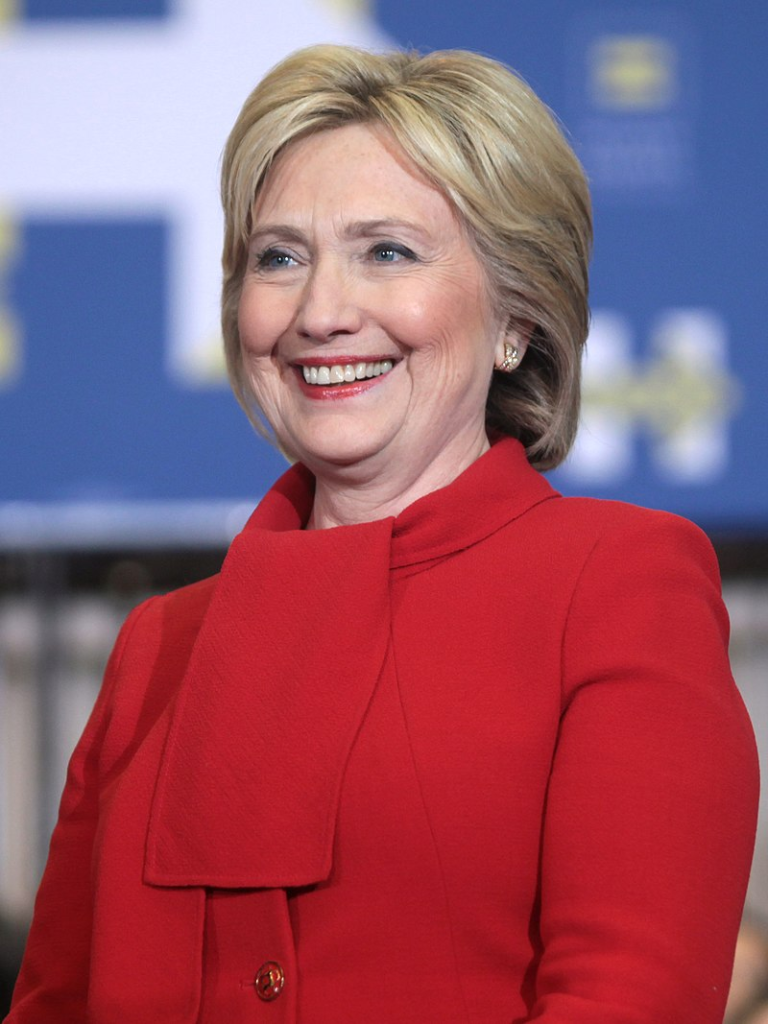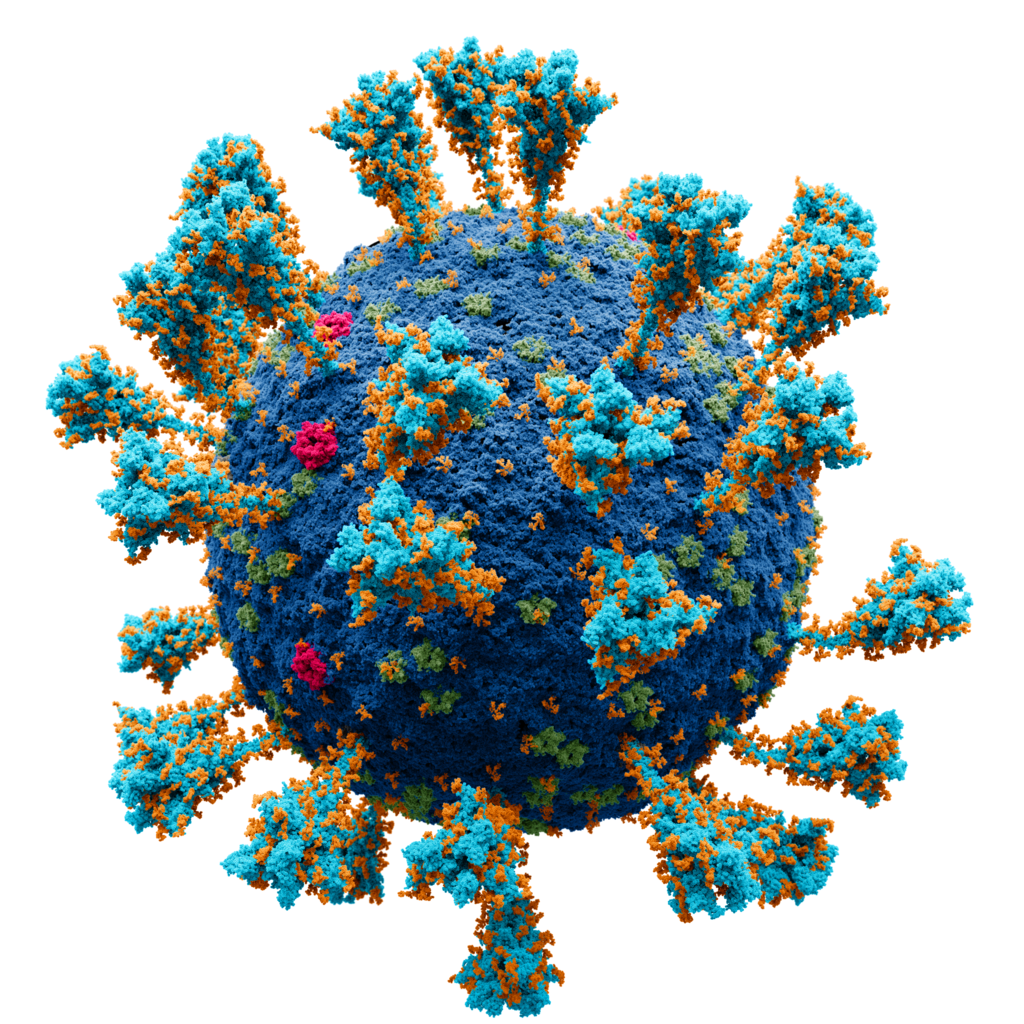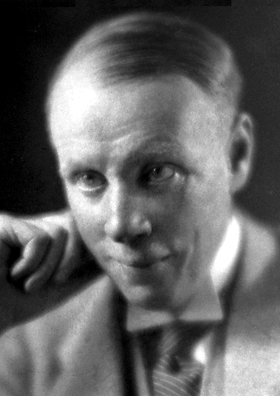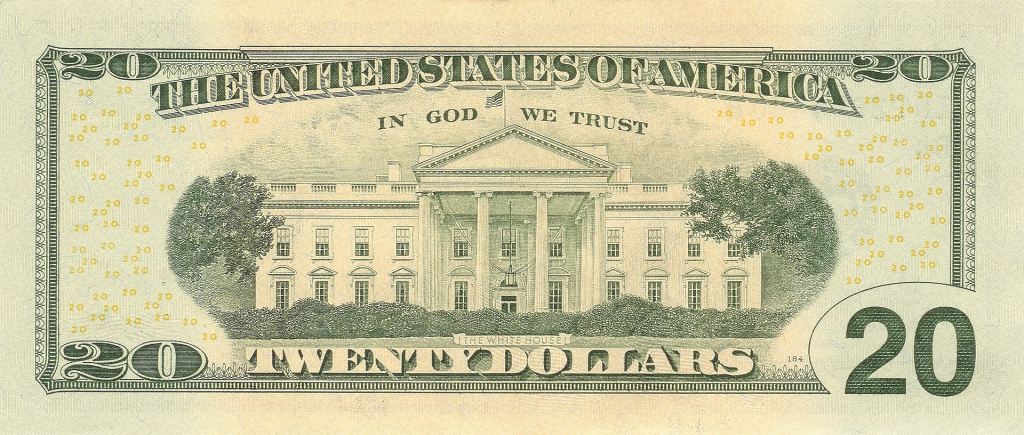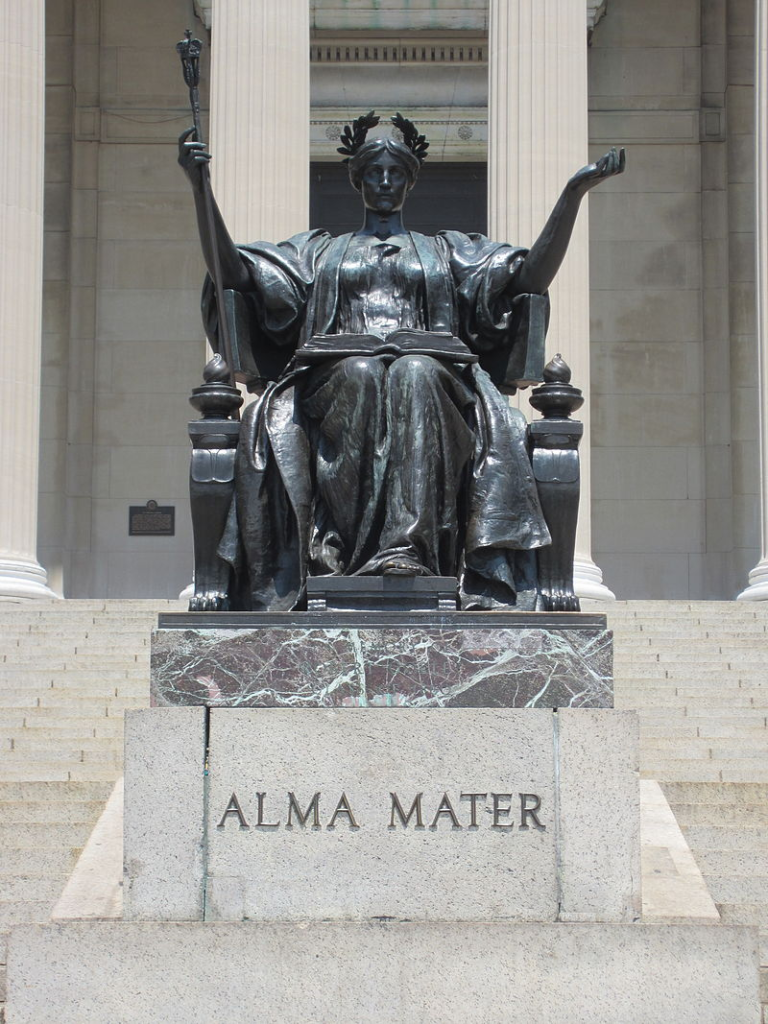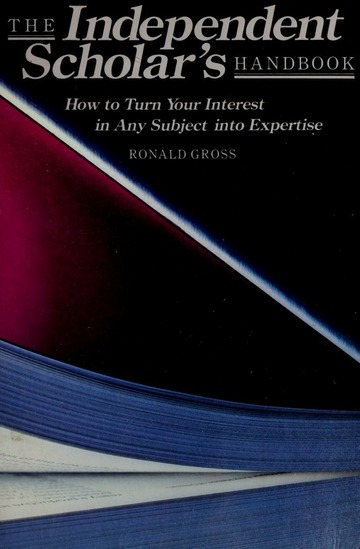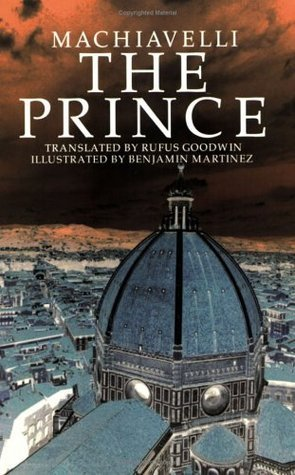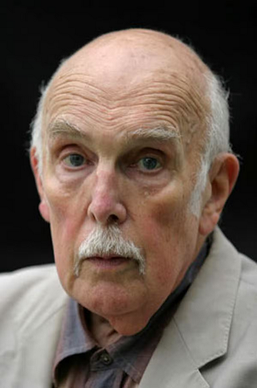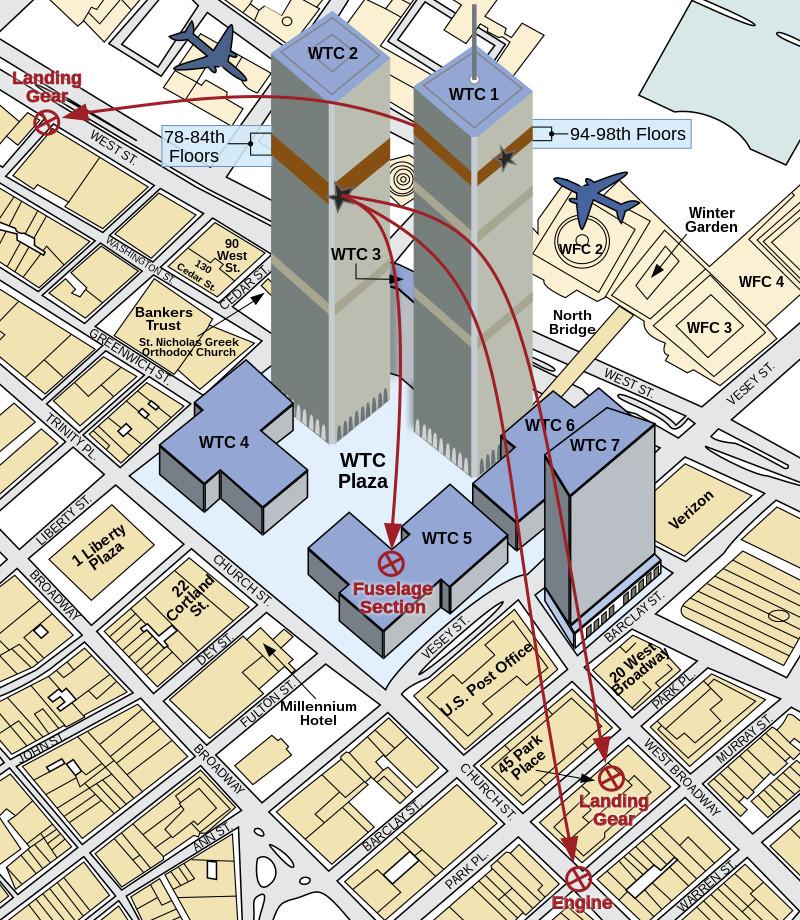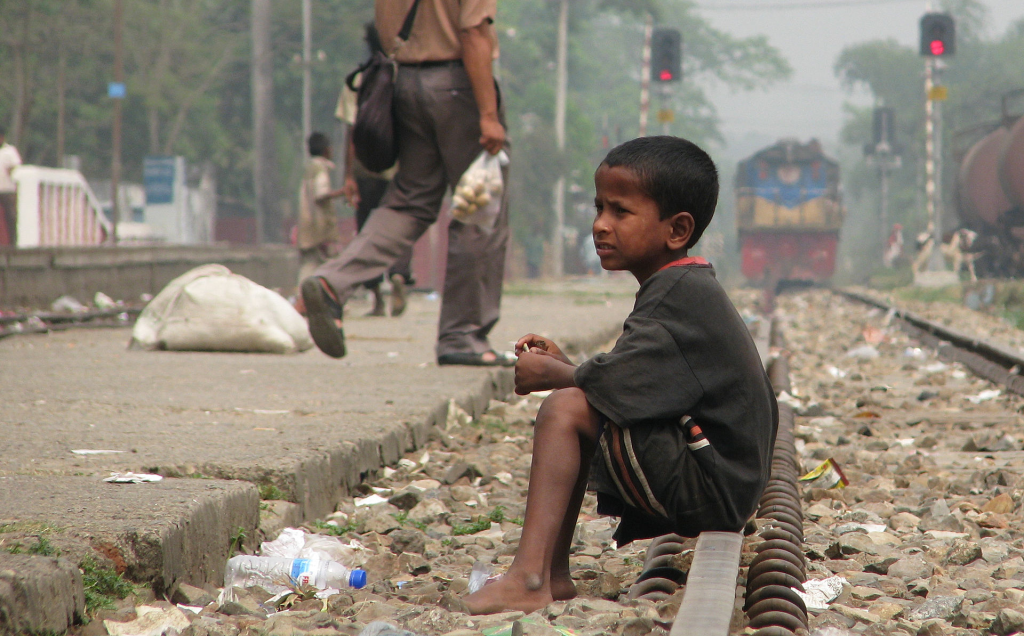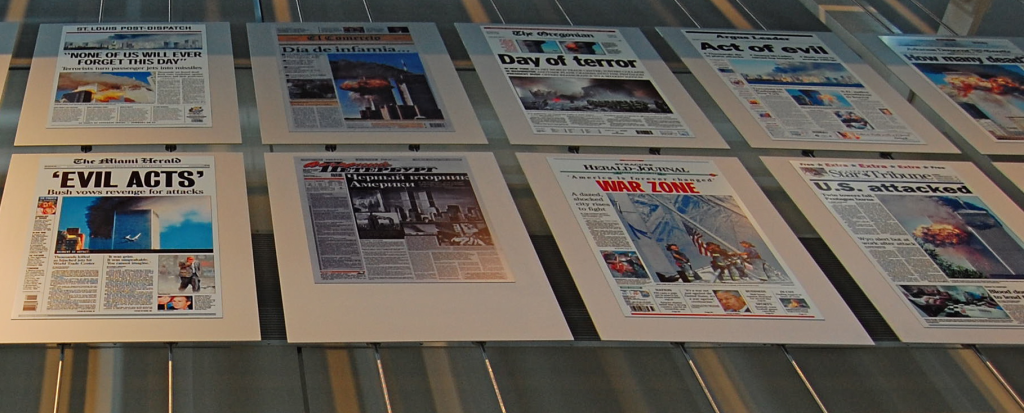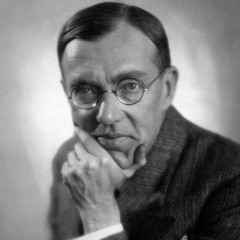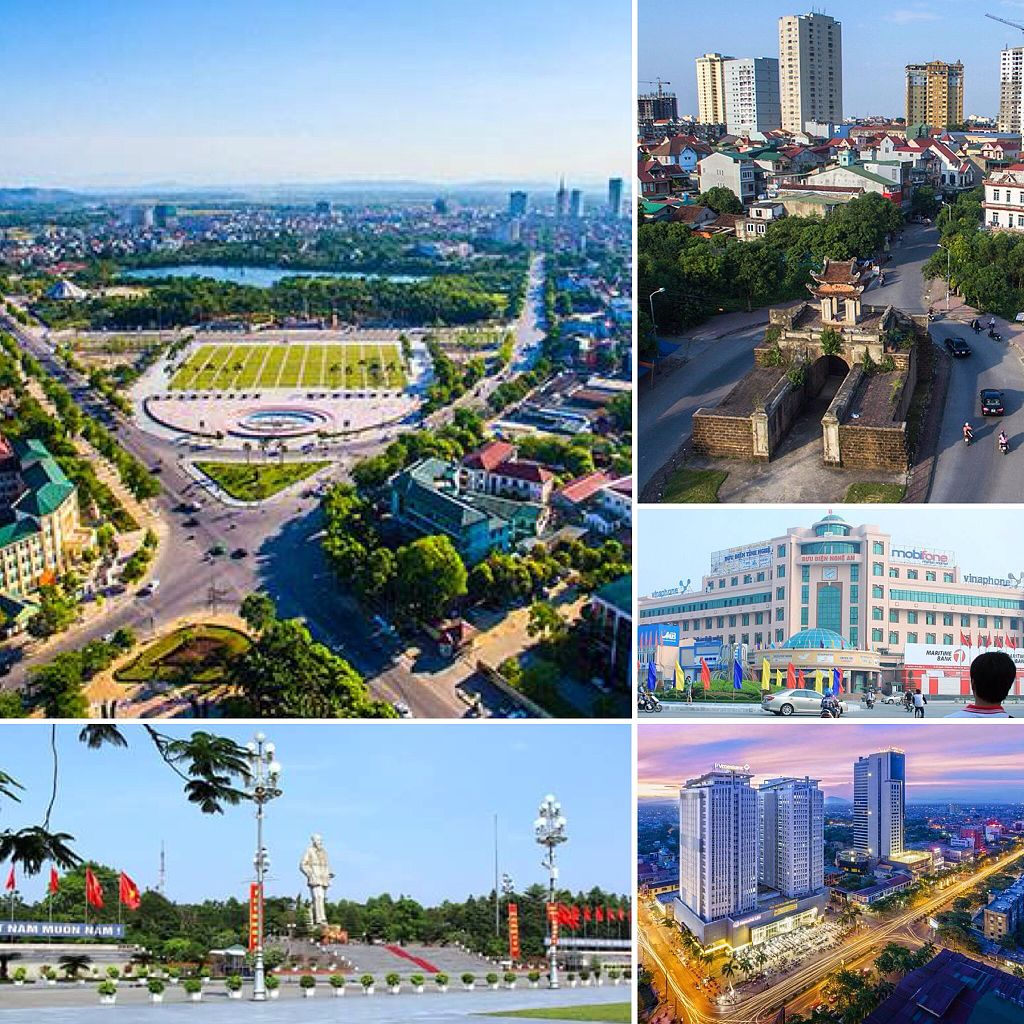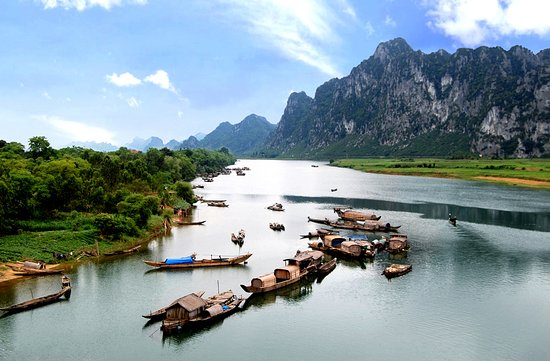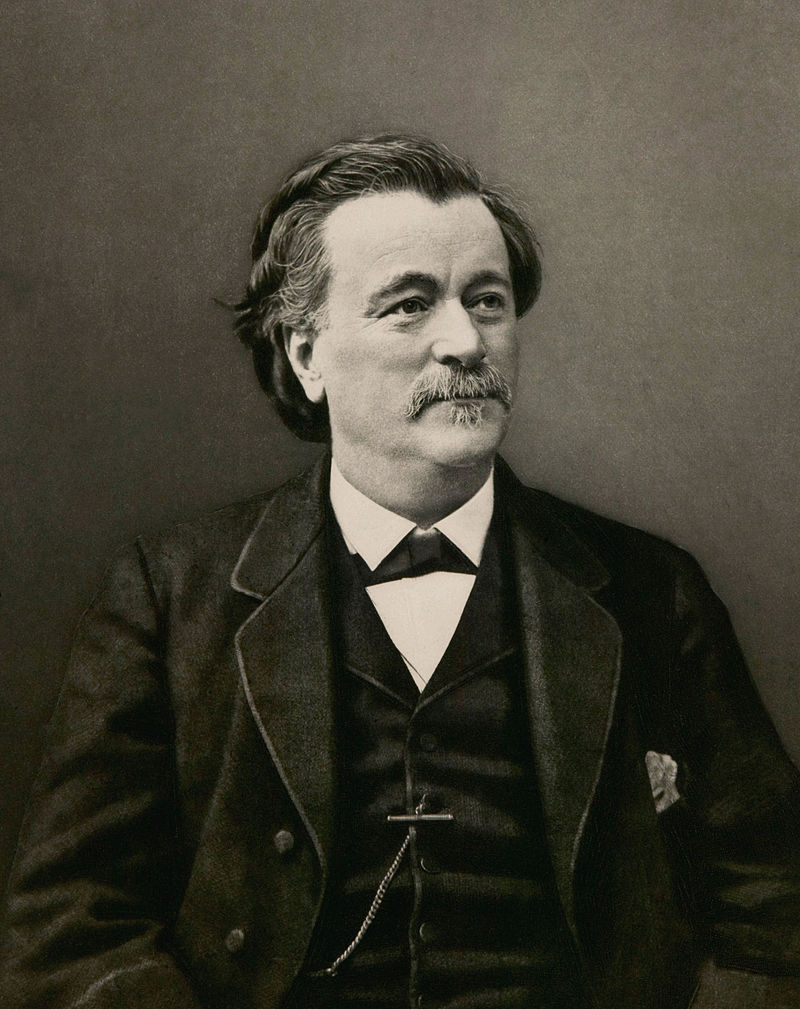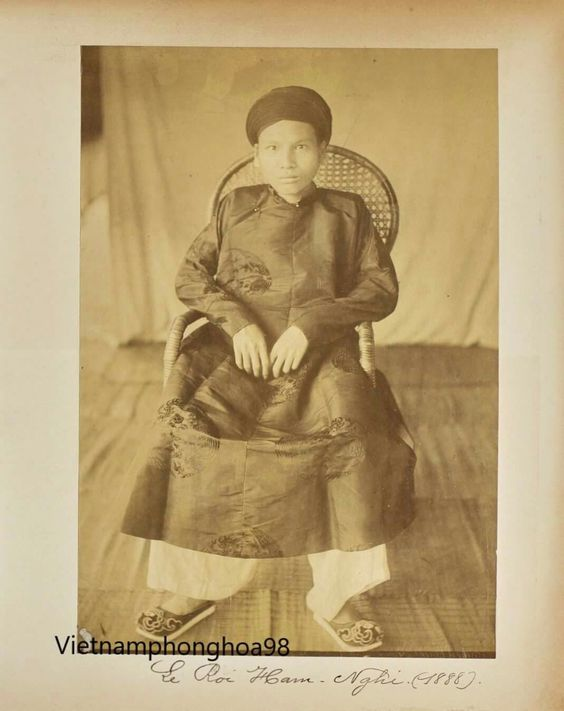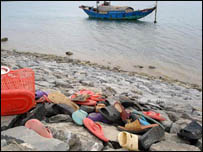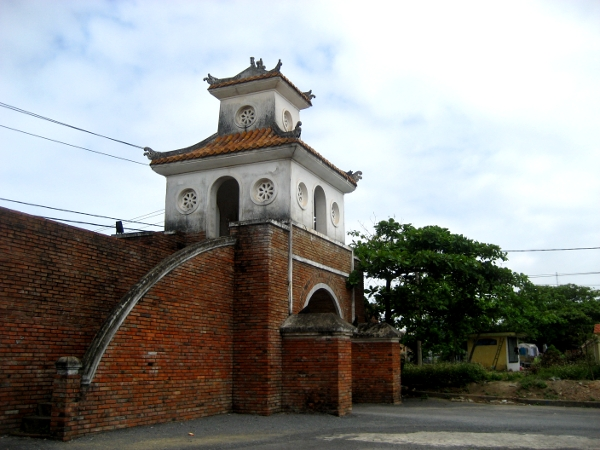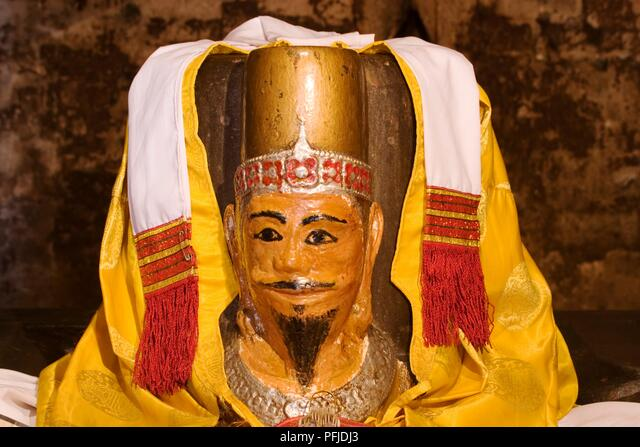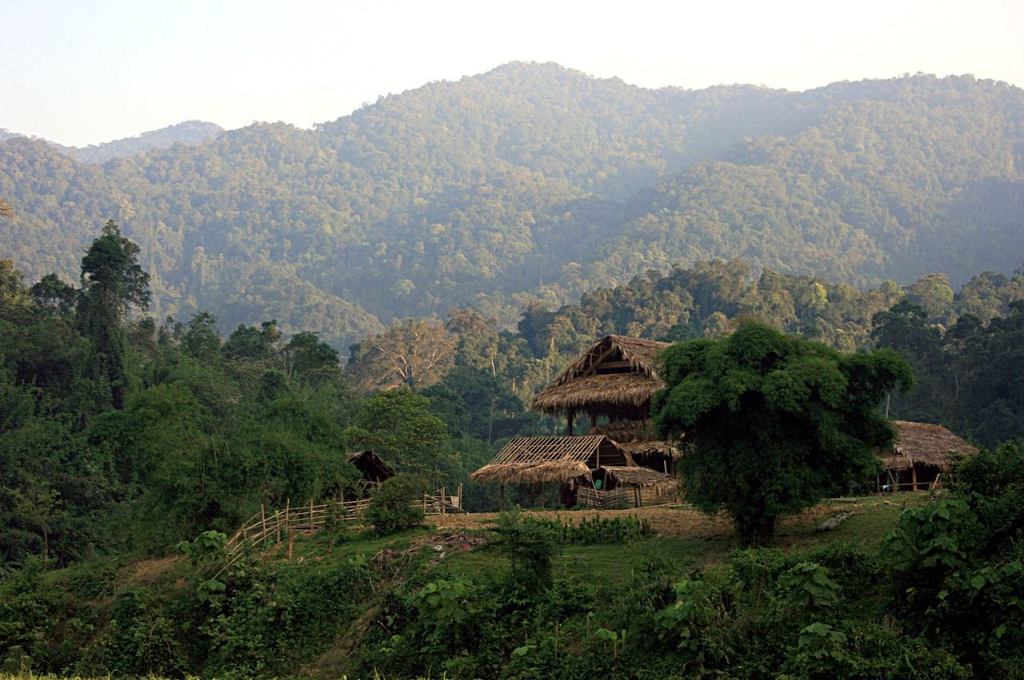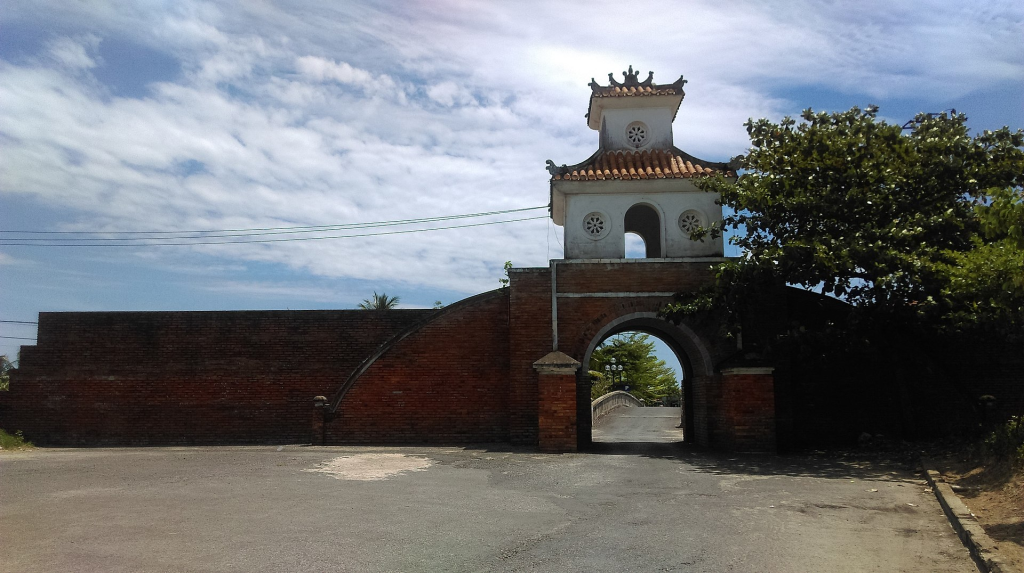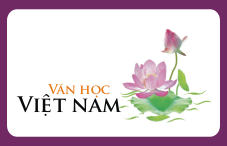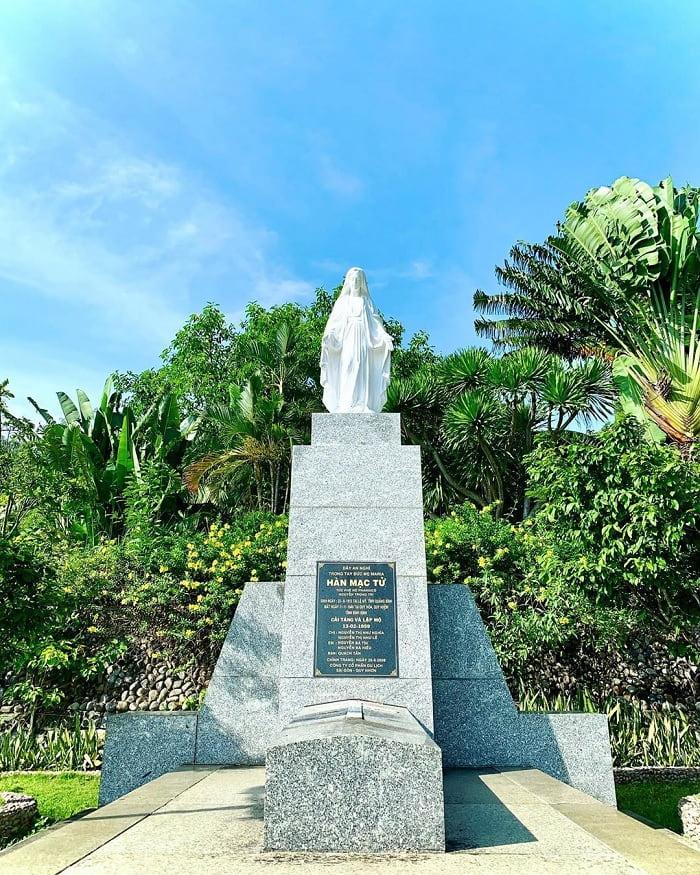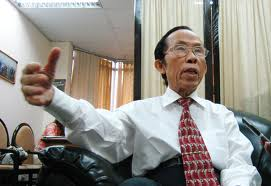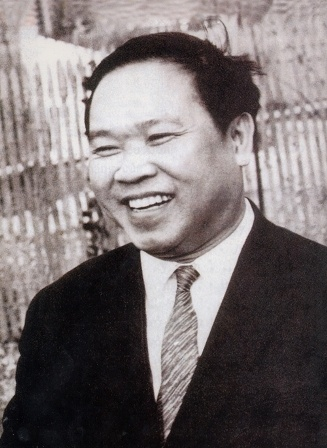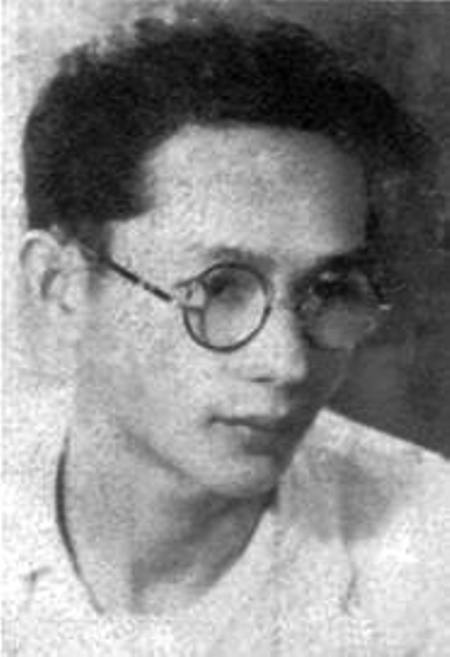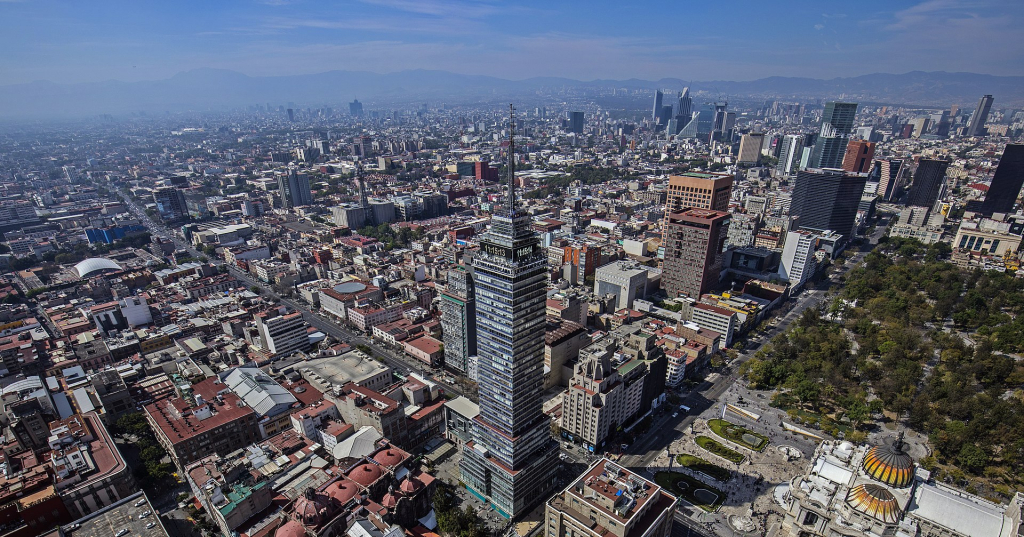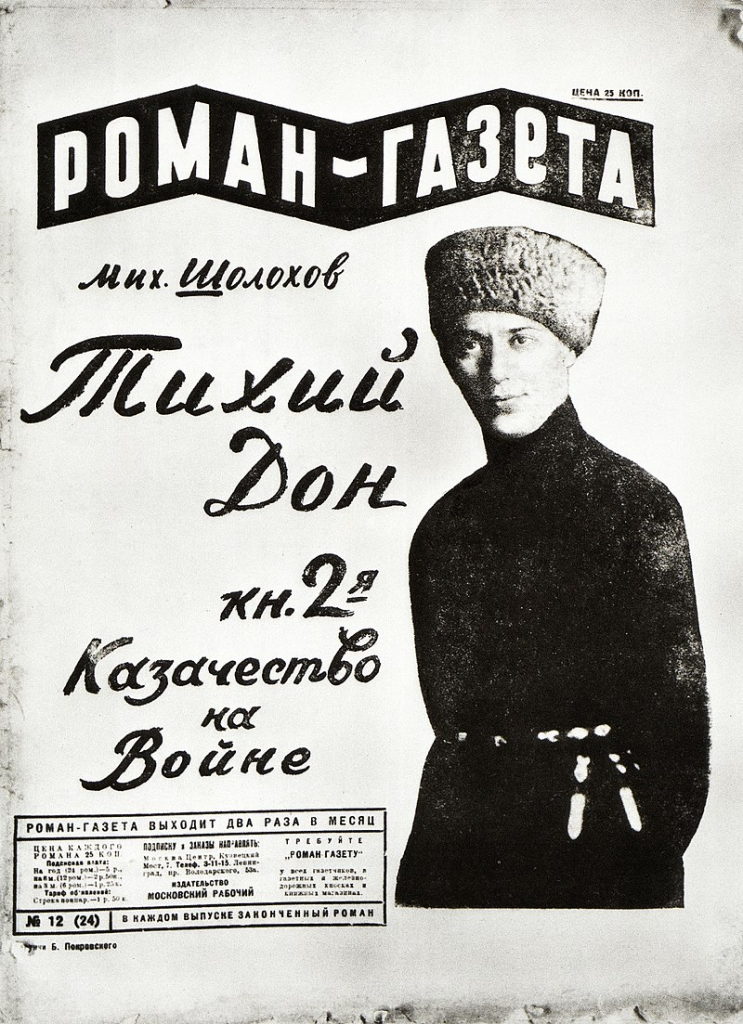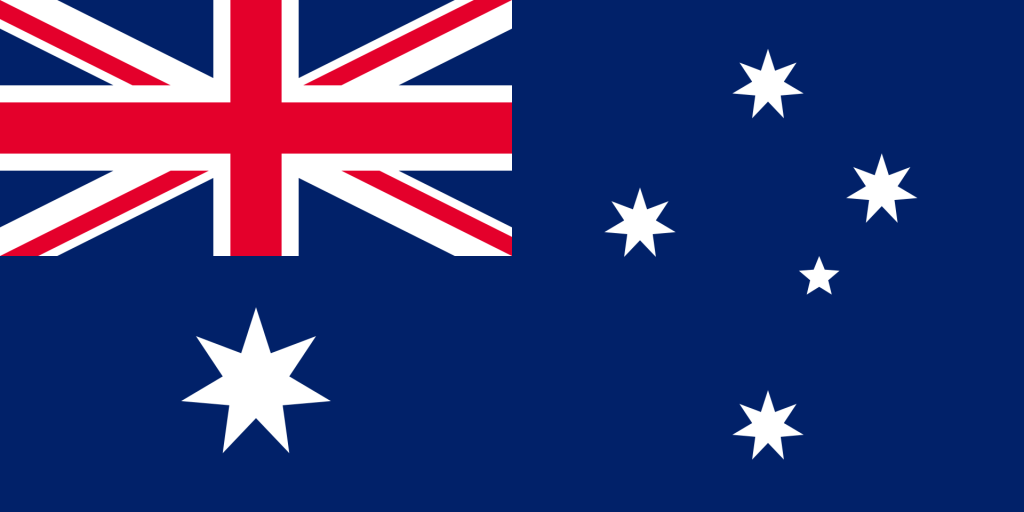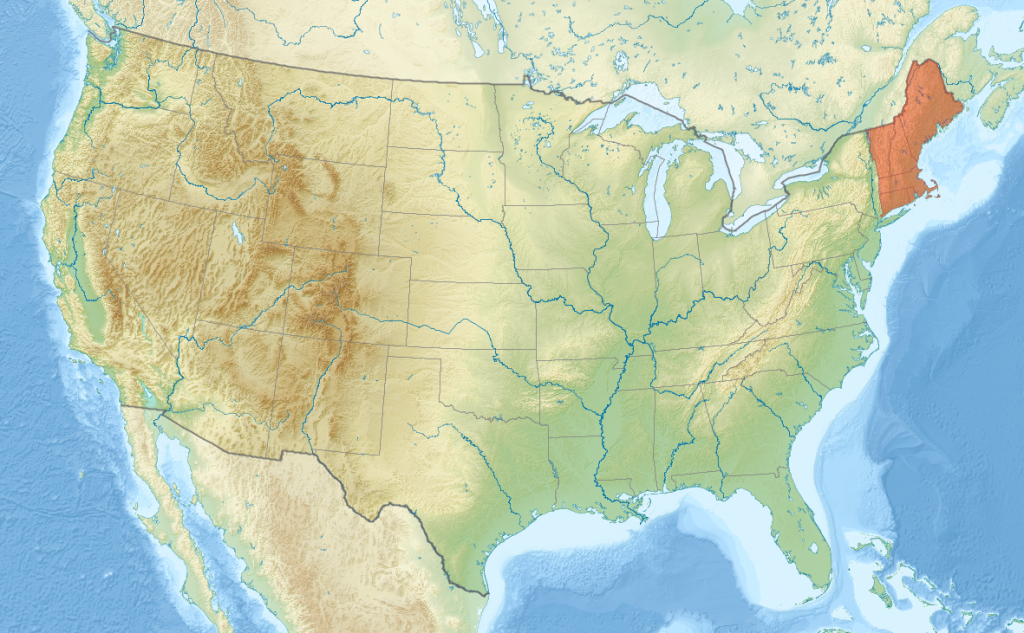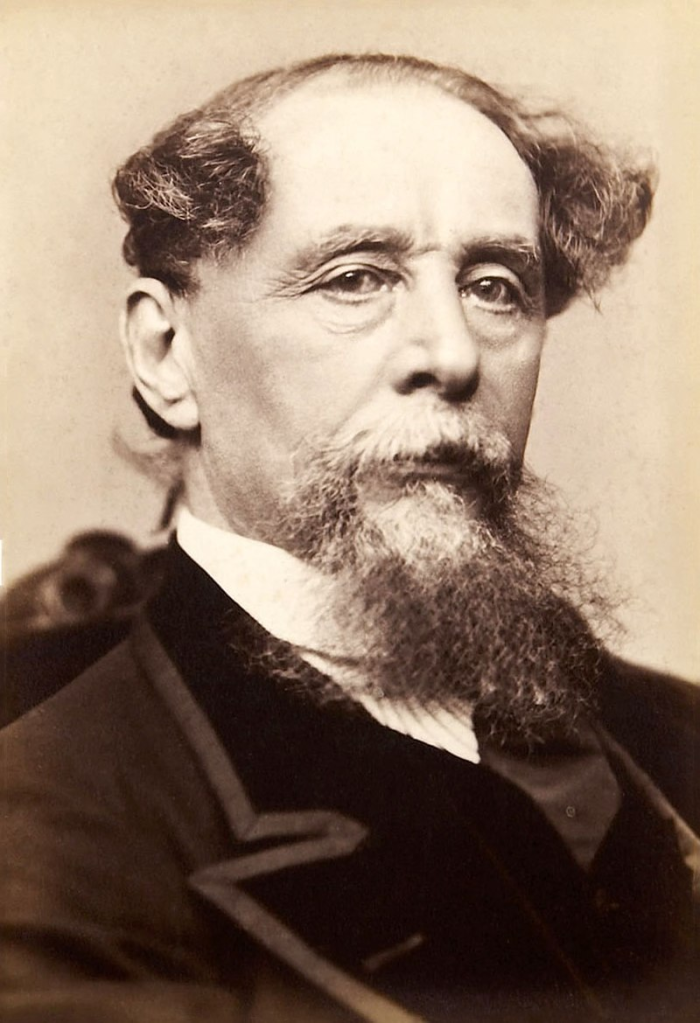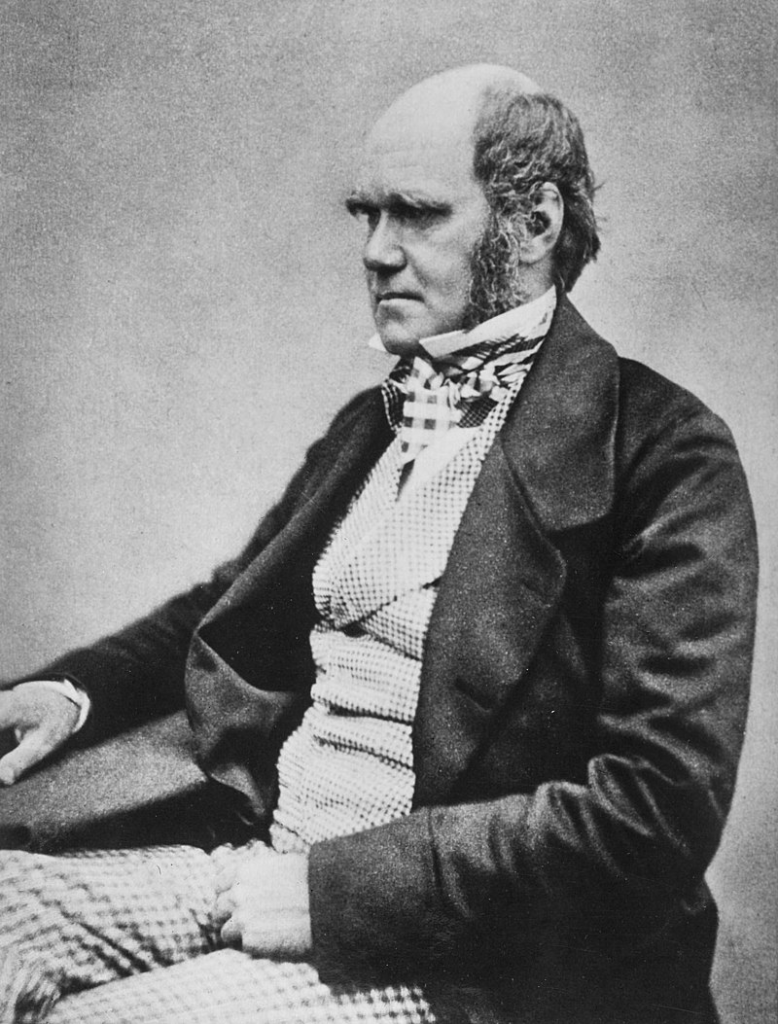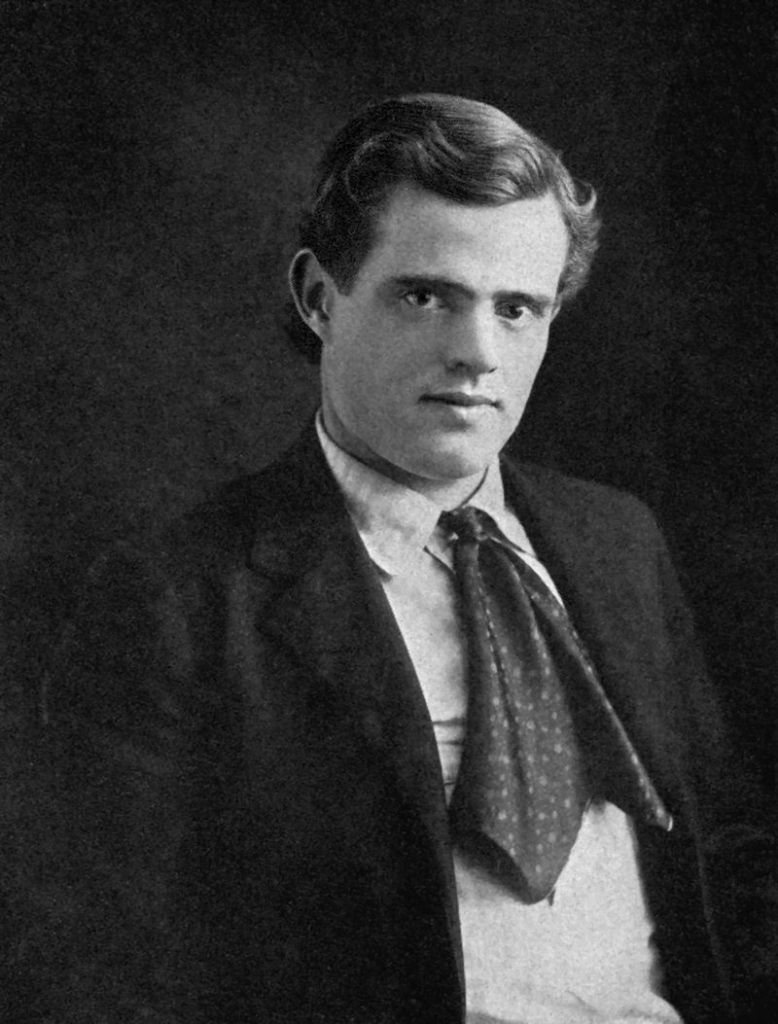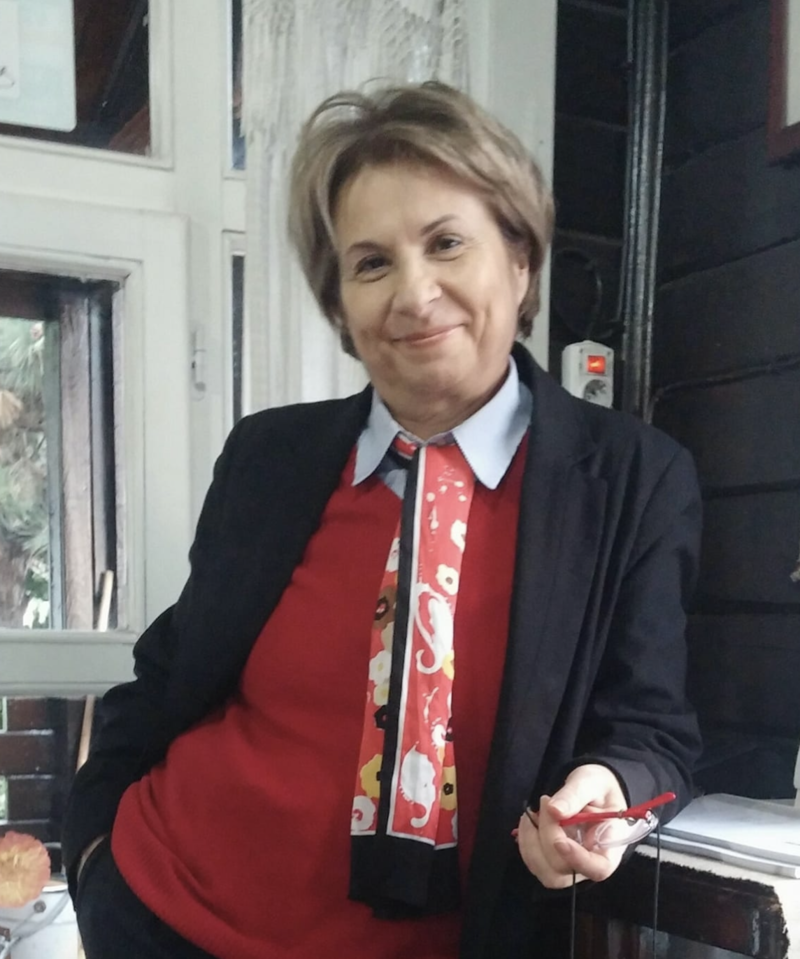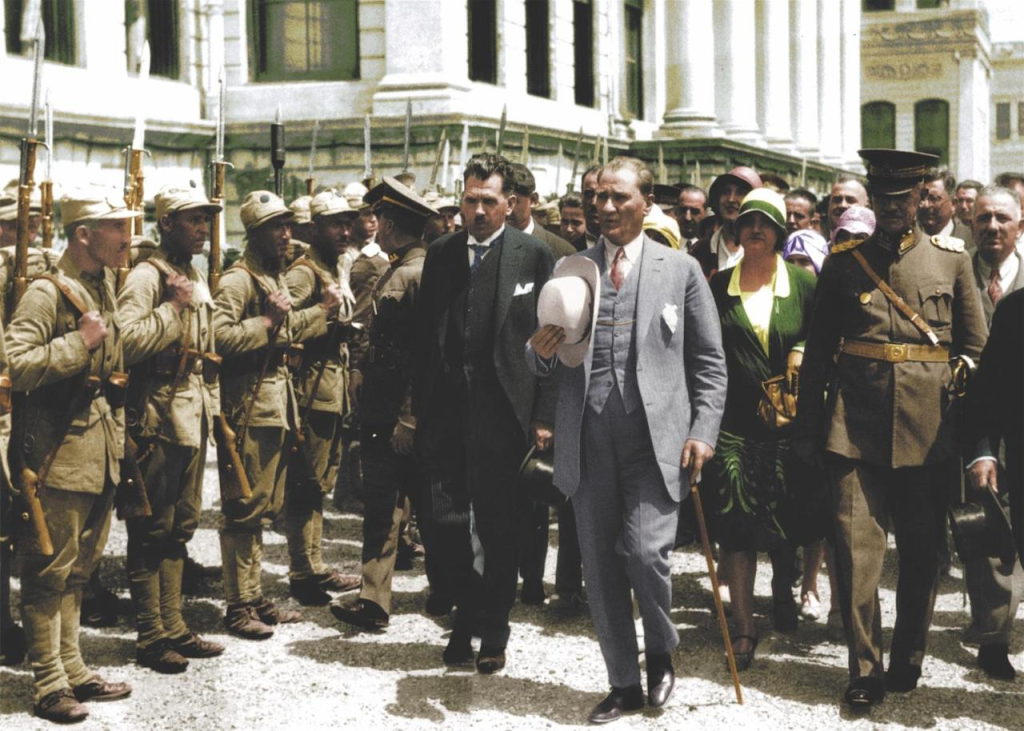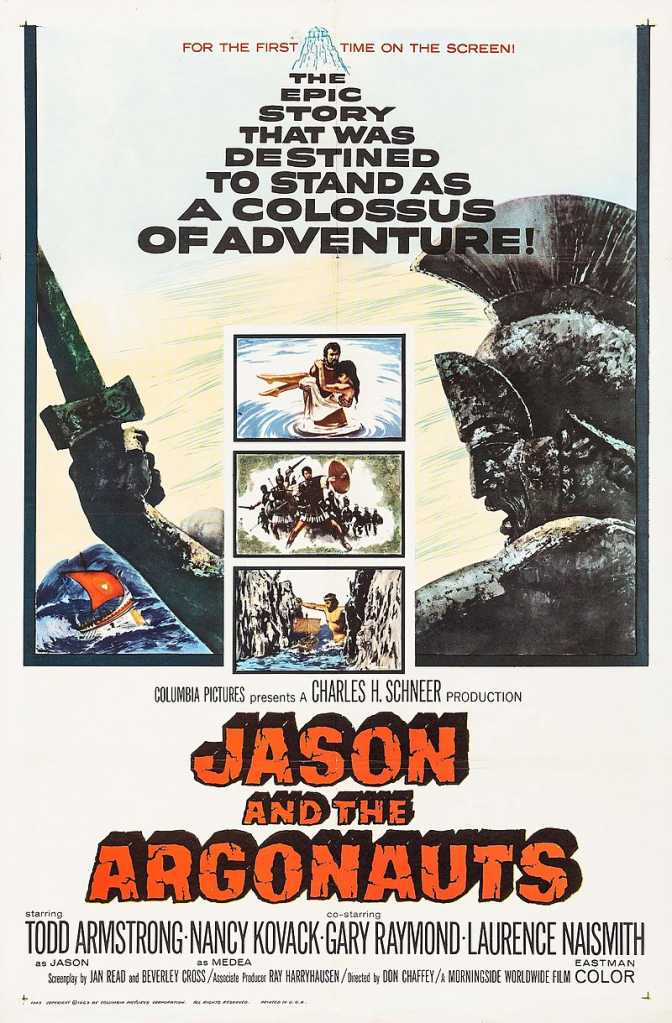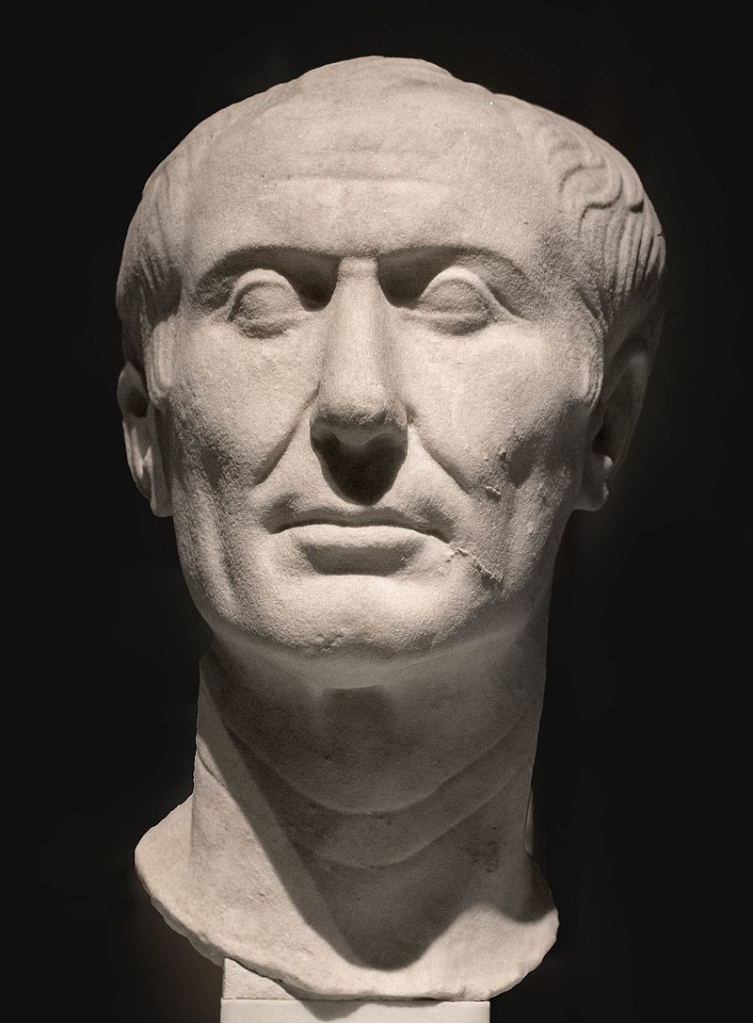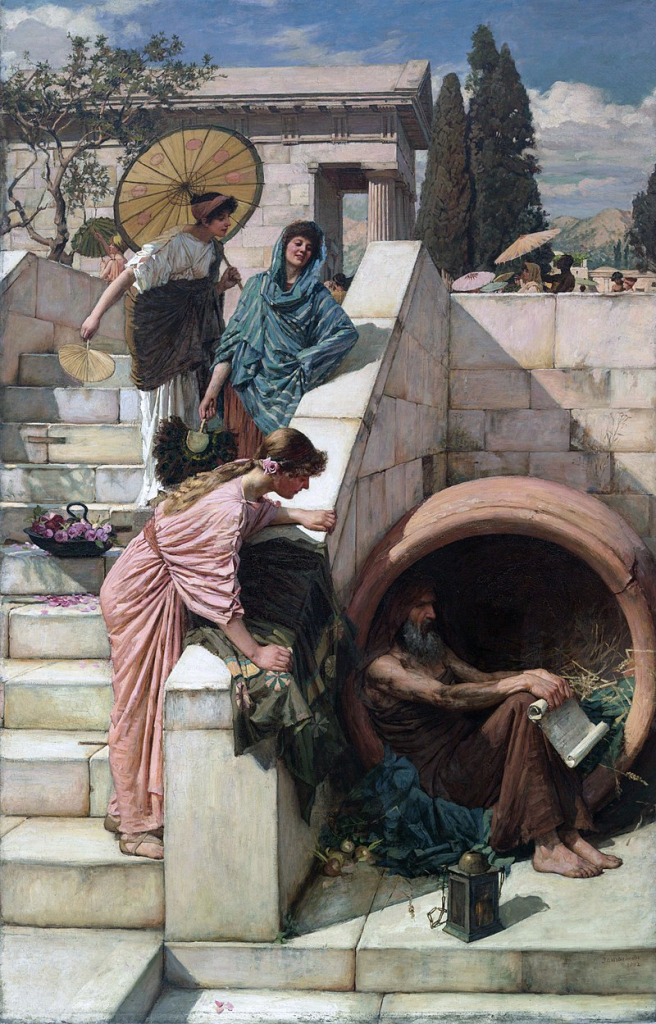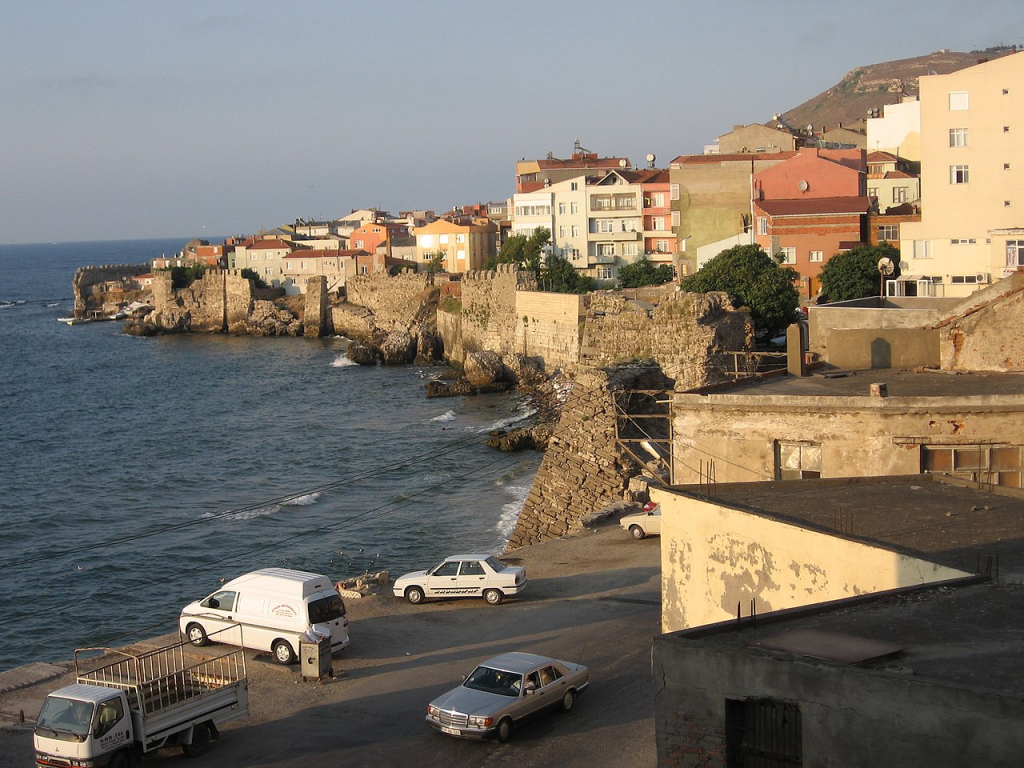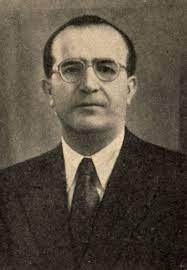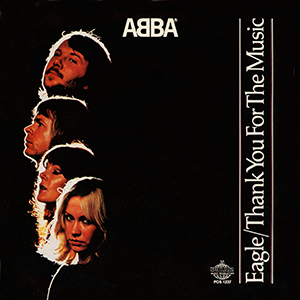Swiss Miss and the Road to the DMZ
Eskişehir, Türkiye, Sunday 27 November 2022
A half a century has passed since the events I am about to describe took place half a world away.
This description is made more complex as neither Heidi Ho nor myself are either Vietnamese or from nations that they have struggled against.
Add to this the complication that Heidi as a tourist and I as a scholar are merely observers of Vietnam.
Complete comprehension, due to lack of experience of the history and lives of all involved in the events that follow below, may not be possible here.
All that being said and as painful as the past can be, whether personal or political, sometimes we cannot learn the lessons of the past without perusing it properly.

Above: Flag of Vietnam
My speculations of Vietnam began when I was a mere lad of 18.
It was October 1983 when I moved into Dorothy O’s boarding house in Sainte-Foy, Québec.

Above: Coat of arms of the City of Sainte Foy, Québec, Canada
Her home should have been named “Little Lachute” for I was joined by fellow LRHS alumni Erick VH and David H.

Above: Rue Principale, Lachute, Québec, Canada

Above: Logo of Laurentian Regional High School, Lachute, Québec, Canada
I cannot look back at my time in Mrs. O’Brien’s home without feelings of great embarrassment, for I was a young man with some psychological difficulties – unresolved childhood difficulties that would only be quietly dealt with after years of travelling.
Erick and David had their own quirks as well.
Erick was expected to carry on his family’s business which he ultimately rejected.
David was a man seemly without direction, save for his obsessive interest in owning pit bull terriers and his ceaseless study of the Vietnam War.
We all came from Argenteuil County and yet it was if we had all come from three different realities of Lachute.
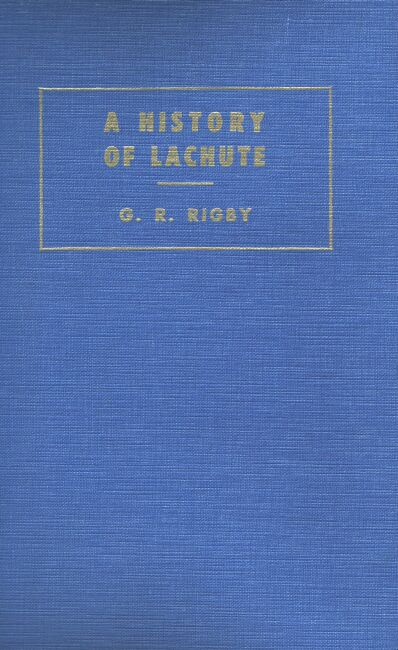
David was nine years my senior and he had decided to return to his postsecondary studies.
History was his passion and he intended to study at Carleton University after completing his degree at St. Lawrence College in Ste-Foy, a suburb of Québec City.

Above: Logo of Carleton University, Ottawa, Ontario, Canada

I did not know what I would do with my future, save that I sought to continue my education in the English language in the province of Québec in a location as far away as possible from Lachute as I could get.

Above: Flag of the Province of Québec, Canada
That choice was Québec City, a choice further desired because photos I had seen of the place made me think of Europe, which I thirsted to see one day.

Above: Images of Québec City, Québec, Canada
Erick’s decision-making process was not so clear to me.
And a closeness between Erick and I that was never sought nor found in high school was neither sought nor found at Mrs. O’s, despite our mutual lodgings and origins.

Above: LRHS, Lachute, Québec, Canada
Ultimately, David, Erick and I were men.
Men whose pain is never punctuated with tears and easing laughter.
Stiff-armed and choked, there were no strong brotherly hugs from which to draw strength and assurance.
No mutual support, no comfort, no appreciation.
Massive walking risks, twisted up inside to suppress emotions felt but vehemently denied.
We were not friends.
Perhaps men cannot be friends, at least not in our immaturity.
A subtle and elaborate code governs the humour, the put-downs, the ways in which serious feeling or vulnerability is deflected.
Friends offer a man enormous comfort.
Erick and David and I were never friends.
We were just three guys from the same region and living in the same boarding house and studying at the same college.
And men who lack a network of friends are seriously impaired from truly living our lives.
Friends alleviate the neurotic overdependence on a woman for every emotional need.
A role a woman never seeks nor wants.
Men have issues unique to their gender.
Male friends understand these issues in ways that women possibly cannot.
Other men know how men feel.
Other men help a man learn how to be a man.
So many men lead lives of quiet frustration because they believe that they are exiled in their isolation.
Millions of women complain about men’s lack of feeling.
Men themselves feel numb and confused about what they really want.
Perhaps if men talked to one another more, perhaps we would understand ourselves better.
Perhaps we would then have more to say to women.
Perhaps then our hearts would truly come alive.
Just as men’s voices have a different tone, so do their feelings.
We are still expected to be tough, to control our feelings in a crisis.
But letting those feelings go, even the admission of having feelings of vulnerability, loss and shame, even the acceptance that there is indeed a desire for respect for the pain and endurance that life demands, has left so many men tense and numb.
Even the thought of seeing David and Erick again creates within me feelings of tension and apprehension.
I am a man and like many men I too am a mess.

The few moments that David and I ever really conversed were when he tried to explain his fascination with the Vietnam War.

Above: Images of the Vietnam / American / Second Indochina War (1955 – 1975)
Heidi‘s journey through the DMZ occurred on Saturday afternoon, 27 April 2019, as she and her travelling companion motorcycled from Vinh to Hué along Highway 1.


Above: Images of Vinh City, Nghe An Province, Vietnam
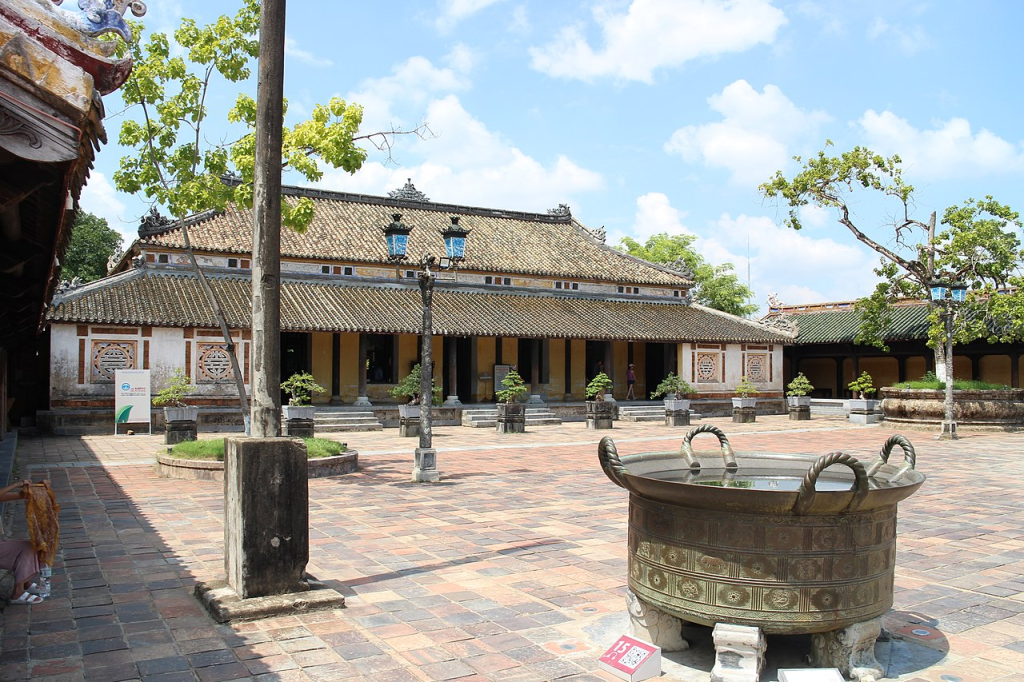
Above: Imperial City, Hué, Thua Thien Hué Province, Vietnam
Vietnam’s Demilitarized Zone, or DMZ, is the area around the former border between North and South Vietnam.
Historically it was a narrow band of terrain extending from Laos to the coast, five km on either side of the Ben Hai River, roughly on the 17th Parallel, north latitude.

Above: Hien Luong Bridge, Ben Hai River, Vietnam
The area saw heavy fighting in the war, and ruins of old American military bases still exist.
Even if you’re not interested in the history, the area has some spectacular mountain scenery and rugged jungles.

Above: 1969 map of the Demilitarized Zone
Heidi is a traveller, an artist, a musician.
The driving distance from Vinh to Hué is 366 kilometers (227 miles), a half-day’s journey without stops.

Above: Signpost of National Route 1 (Quốc lộ 1), Vietnam
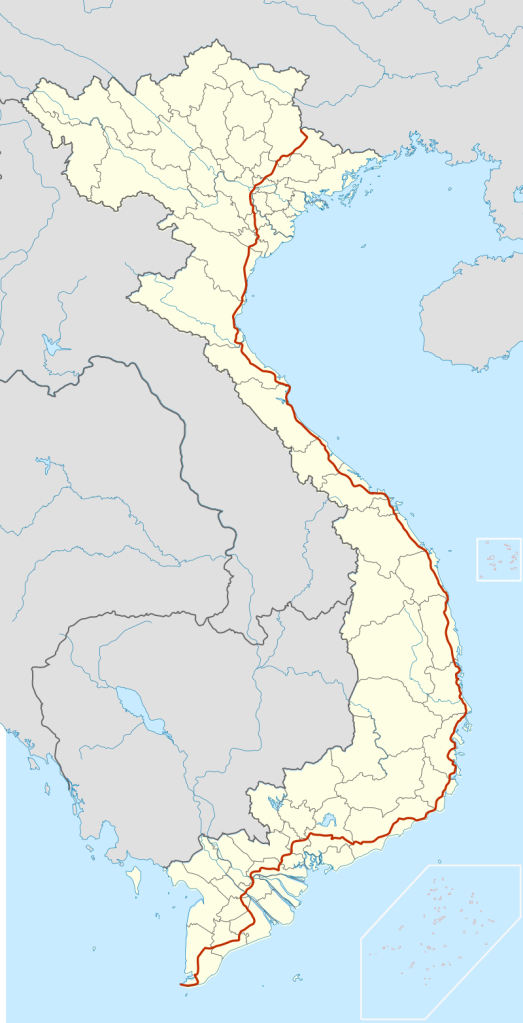
Above: Vietnam National Route 1 map
If I know Heidi at all, I imagine she was more eager to see Hué than to linger over the devastating DMZ.
And why not?
Hué allows an exploration of the past at a leisurely pace with a history too far removed to feel significant today.
It is a city with a meandering river, a walled citadel containing an imperial city, attractive residential streets and prolific gardens, shops and pagodas.
That being said, Hué is not everyone’s cup of tea.
Entrance fees to tourist attractions are expensive and tours annoy some travellers, despite the quality of the DMZ tours available from Hué.

Above: Truong Tien Bridge, Perfume River, Hué, Vietnam
Ride down the coast, overnight in Hué, onwards toward Ho Chi Minh City, that is the plan of many a (wo)man heading south from Hanoi.
I neither condone or condemn this course of action.
I merely seek to comprehend the reasoning behind this decision.

Above: Ho Chi Minh City (Saigon), Vietnam

Above: Hanoi, Vietnam
My current interest in the Vietnam War is triggered by three factors:
- Ongoing accounts of the Russian – Ukrainian War have left me curious as to the nature of war.


Above: Flag of Russia

Above: Flag of Ukraine
- Turkey, where I currently reside, has mandatory conscription of young men into military service – two men with whom I am acquainted with – one who is presently serving, one who will serve soon – have been teaching colleagues of mine at the school in Eskişehir that has employed us.
Turkey is presently not engaged in a full-scale war, but they nonetheless have to live with the knowledge that one day they might be prepared to kill another human being, to experience the actual horror of battle.

Above: Flag of Turkey
The DMZ lies on the road through which Heidi has travelled and whose travels I painstakingly record.

Above: The Vietnamese demilitarised zone (DMZ) from north of the Ben Hai River at the Route 1 bridge crossing.
To the left is a recreated South Vietnamese guard tower, and through the arch in the distance, the six ascending spires are a newly-built monument.
The inscription says “Hồ Chủ tịch muôn năm!” (Long live Chairman Hồ!).
As Canadians (and Heidi as Swiss) of the 21st century, I do not believe we can fully understand the Vietnam War, despite the fact that in the entire recorded history of the human race there has always been a war somewhere on the planet.

Above: Flag of Canada

Above: Flag of Switzerland
Attention is presently focused on the Russian – Ukrainian conflict, but that does not mean that conflict, death and suffering has suddenly ceased elsewhere.
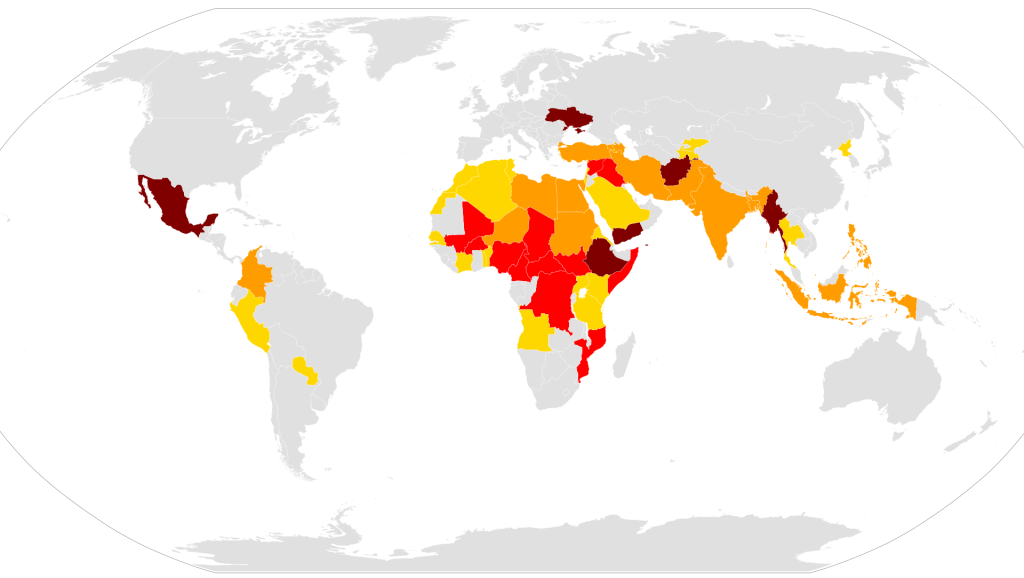
Above: Map of ongoing conflicts around the world – (number of combat-related deaths in current or past year)
(brown) Major wars (10,000 + deaths) / (red) Wars (1,000 – 9,999 deaths) / (orange) Conflicts (100 – 999 deaths) / (yellow) Skirmishes and clashes (1–99)
The list of ongoing armed conflicts includes internal conflict in Myanmar, conflict in Afghanistan, the Mexican Drug War, the Yemeni Civil War, the Syrian Civil War, and civil conflict in Ethiopia.
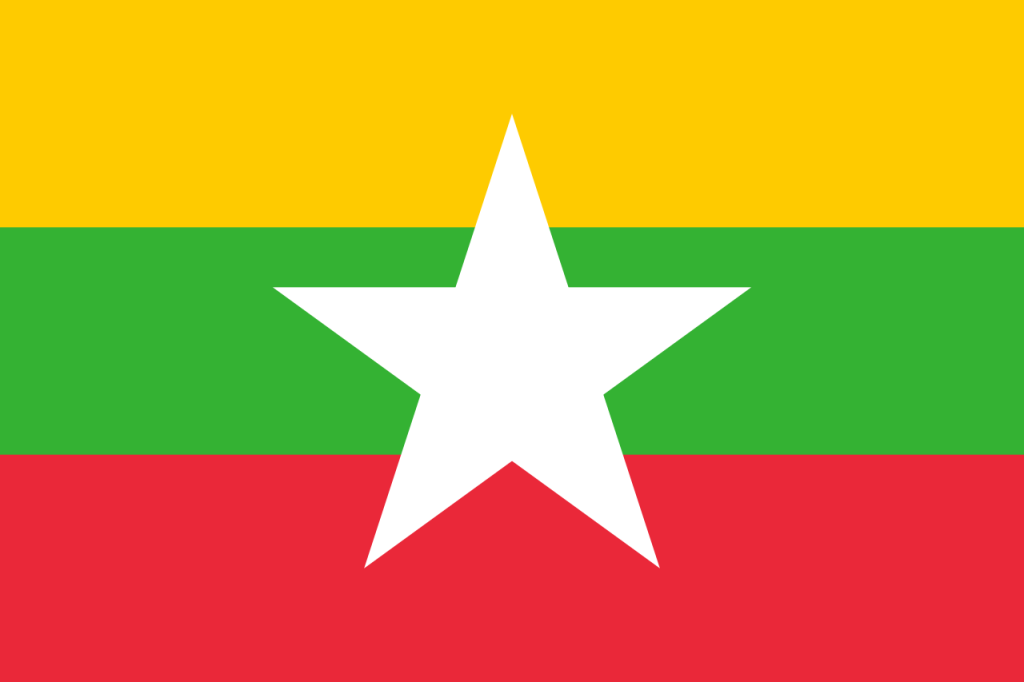
Above: Flag of Myanmar

Above: Flag of Afghanistan
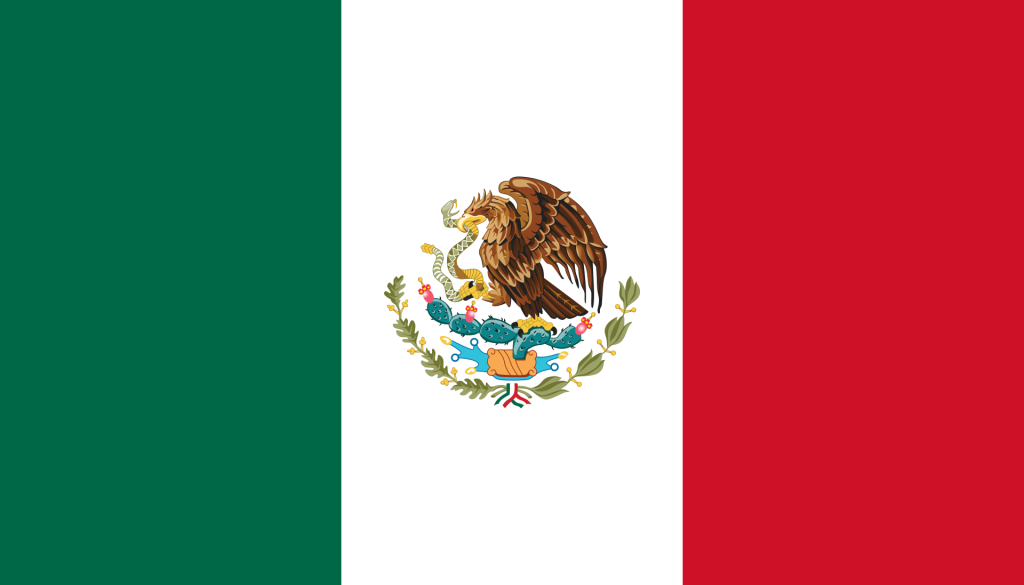
Above: Flag of Mexico

Above: Flag of Yemen

Above: Flag of Syria

Above: Flag of Ethiopia
There are continuing troubles in Colombia, Somalia, the Congo, Nigeria, the Magreb region of North Africa, Iraq, Sudan, Mali, the Central African Republic, East Africa, Iran, Pakistan, Palestine, Indonesia, India, the Philippines, unrest between Armenia and Azerbaijan, conflict in the Niger Delta, troubles in Egypt, Chad and Cameroon, border clashes between Kyrgyzstan and Tajikistan, drug wars in the Philippines and Bangladesh….
The list is incomplete and troubling.

War, huh, yeah
What is it good for?
Absolutely nothing, uhh
War, huh, yeah
What is it good for?
Absolutely nothing
Say it again, y’all
War, huh (good God)
What is it good for?
Absolutely nothing, listen to me, oh
War, I despise
‘Cause it means destruction of innocent lives
War means tears to thousands of mother’s eyes
When their sons go off to fight
And lose their lives
I said, war, huh (good God, y’all)
What is it good for?
Absolutely nothing, just say it again
War (whoa), huh (oh Lord)
What is it good for?
Absolutely nothing, listen to me
It ain’t nothing but a heart-breaker
(War) Friend only to the undertaker
Oh, war it’s an enemy to all mankind
The thought of war blows my mind
War has caused unrest
Within the younger generation
Induction then destruction
Who wants to die? Oh
War, huh (good God, y’all)
What is it good for?
Absolutely nothing
Say it, say it, say it
War (uh-huh), huh (yeah, huh)
What is it good for?
Absolutely nothing, listen to me
It ain’t nothing but a heart-breaker
(War) It’s got one friend, that’s the undertaker
Oh, war, has shattered many a young man’s dreams
Made him disabled, bitter and mean
Life is much too short and precious
To spend fighting wars each day
War can’t give life
It can only take it away, oh
War, huh (good God, y’all)
What is it good for?
Absolutely nothing, say it again
War (whoa), huh (oh Lord)
What is it good for?
Absolutely nothing, listen to me
It ain’t nothing but a heart breaker
(War) Friend only to the undertaker, woo
Peace, love and understanding, tell me
Is there no place for them today?
They say we must fight to keep our freedom
But Lord knows there’s got to be a better way, oh
War, huh (good God, y’all)
What is it good for? You tell me (nothing)
Say it, say it, say it, say it
War (good God), huh (now, huh)
What is it good for?
Stand up and shout it (nothing)

Nevertheless, it is difficult to understand that those who served on either side of the War were patriotic.
The Vietnamese were less concerned with spreading Communism than they were in seeking self-determination for their homeland.

Above: Emblem of Vietnam
American soldiers believed that they were fighting for their country against a global threat, but there were few who didn’t think that the War was a monstruous mistake, that they were sold down the river by a long series of US Presidents and Washington politicians, few of whom ever served, fewer still who let their children serve, and none who ever studied the history of the Vietnamese people nor the story of Vietnam where they chose to send soldiers to bleed and die, because they were afraid to admit they made a mistake.

Above: Flag of the United States of America

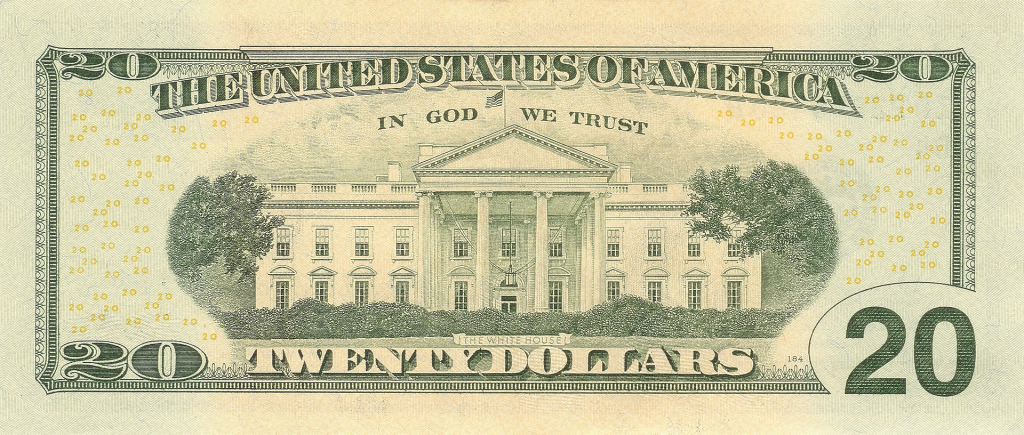
Perhaps this blogpost could be viewed as interesting to those who served in the War or for those who have seen the DMZ and have pondered the folly and the fear, the courage and sacrifice represented by that devastated part of the planet.
But that view is mistaken, for the veterans and the Vietnam visitors who took the time to ponder, they already know the story.
This is intended for a far more important purpose:
This is for those who were never in Vietnam, those who are too young to remember those turbulent times.
This is a story of a troubling time in world history that should never be repeated, but is a scenario always repeated somewhere else.
To understand a war, you need to understand the background of it.
Let us begin.

The first Western visitors to the Vietnamese peninsula were probably traders from ancient Rome who sailed into the ports of the Kingdom of Champa (192 – 1832) in the 2nd century CE.

Above: Senatus Populusque Romanus (the Senate and the People of Rome) (753 BCE – 476 CE)

Above: Tháp Hòa Lai, Ninh Thuận, Vietnam
Marco Polo sailed up the coast up the coast in the 13th century on his way to China.
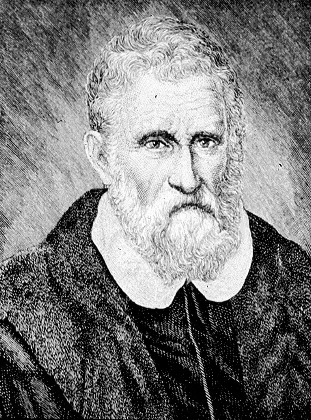
Above: Venetian merchant / explorer Marco Polo (1254 – 1324)

But more significant was the arrival of a Portuguese merchant, Antonio Da Faria, at the port of Fai Fo (Hoi An) in 1535.

The Portuguese established their own trading post at Fai Fo, then one of Southeast Asia’s greatest ports, crammed with vessels from China and Japan.
They were soon followed by other European maritime powers.

Above: Hoi An, Quang Nam Province, Vietnam
With the traders came missionaries, who found a ready audience, especially among peasant farmers and others near the bottom of the established Confucian hierarchy.
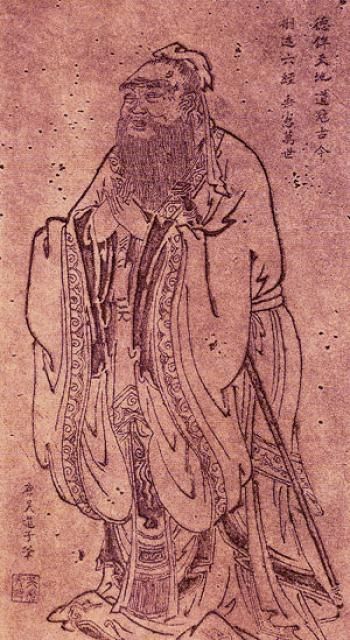
Above: The teacher Confucius (551 – 479 BCE)
It didn’t take long before the ruling elite felt threatened by subversive Christian ideas.
Missionary work was banned after the 1630s.
Many priests were expelled or even executed.
But enforcement was sporadic.

Above: The Church of the Holy Sepulchre (or the Church of the Resurrection), Jerusalem, Israel
By the 17th century the Catholic Church claimed several hundred thousand converts.

Above: St. Peter’s Basilica (the largest Catholic church in the world), Vatican City
At this time Vietnam was breaking up into regional factions and the Europeans were quick to exploit growing tensions between the Nguyen and Trinh lords, providing weapons in exchange for trading concessions.
However, when the civil war ended in 1674 the merchants lost their advantage.
Gradually the English, Dutch and French closed down their trading posts until only the Portuguese remained in Fai Fo.

Above: Flag of Portugal
Towards the end of the 18th century, the remaining Catholic missions provided an opening for French merchants wishing to challenge Britain’s presence in the Far East.
When a large-scale rebellion broke out in Vietnam in the early 1770s, these entrepreneurs saw their chance to establish a firmer footing on the Indochinese peninsula.

Above: Flag of France
As the 18th century progressed, insurrections flared up throughout the countryside.
Mostly were easily quelled, but in 1771 three brothers raised their standard in Tay Son village, west of Quy Nhon and ended up ruling the whole country.
The Tay Son rebellion gained broad support among dispossessed peasants, ethnic minorities, small merchants and townspeople attracted by the brothers’ message of equal rights, justice and liberty.
As rebellion spread through the south, the Tay Son army rallied even more converts when they seized land from the wealthy and redistributed it to the poor.
By the middle of 1786 the rebels had overthrown both the Trinh and Nguyen lords, again leaving the Le dynasty intact.
When the Le monarch called on the Chinese in 1788 to help remove the Tay Son usurpers, the Chinese happily obliged by occupying Hanoi.
At this the middle brother (Nguyen Hue) declared himself Emperor Quang Trung and quick-marched his army 600 km from Hué to defeat the Chinese at Dong Da, on the outskirts of Hanoi.
With Hué as his capital, Quang Trung set about implementing his promised reforms, but when he died prematurely in 1792, aged 39, his 10-year-old son was unable to hold onto power.

Above: Statue of Emperor Quang Trung (1753 – 1792) in the front of the Museum of Quang Trung in Quy Nhơn, Vietnam
One of the few Nguyen lords to have survived the Tay Son rebellion in the south was Prince Nguyen Anh.
The prince made several unsuccessful attempts to regain the throne to the mid-1780s.
After one such failure he fled to Phu Quoc Island where he met a French bishop, Pigneau de Béhaine.
With an eye on future religious and commercial concessions, the bishop offered to make approaches to the French on behalf of the Nguyen.
A treaty was eventually signed in 1787, promising military aid in exchange for territorial and trading concessions, though France failed to deliver the assistance due to a financial crisis preceding the French Revolution.
The bishop went ahead anyway, raising a motley force of 4,000 armed mercenaries and a handful of ships.
The expedition was launched in 1789 and Nguyen Anh entered Hanoi in 1802 to claim the throne as Emperor Gia Long.
Bishop de Béthaine did not live to see the victory or to reinforce the treaty.
He died in 1799 and received a stately funeral.

Above: Father Pierre Joseph Georges Pigneau de Behaine (1741 – 1799)
For the first time Vietnam, as the century was now called, fell under a single authority from the northern border all the way down to the point of Ca Mau.
In the hope of promoting unity, Gia Long established his capital in the centre, at Hué, where he built a magnificent citadel in imitation of the Chinese emperor’s Forbidden City.
The choice of architecture was appropriate:
Gia Long and the Nguyen dynasty he founded were resolutely Confucian.

Above: Meridian Gate, Imperial City, Hué, Vietnam
The new emperor immediately abolished the Tay Son reforms, reimposing the old feudal order.
Land confiscated from the rebels was redistributed to loyal mandarins, the bureaucracy was reinstated and the majority of peasants found themselves worse off than before.
Gradually the country was closed to the outside world and to modernizing influences that might have helped it withstand the onslaught of French military intervention in the mid-19th century.
On the other hand, Gia Long and his successors did much to improve the infrastructure of Vietnam, developing a road network, extending the irrigation systems and rationalizing the provincial administration.
Under the Nguyen, the arts, particular literature and court music, flourished.

Above: Emperor Gia Long (1762 – 1820)
By refusing to grant any trade concessions, Gia Long disappointed the French who had helped him to the throne.
He did, however, permit a certain amount of religious freedom, though his successors were far more suspicious of the missionaries’ intentions.
After 1825, several edicts were issued forbidding missionary work, accompanied by sporadic, occasionally brutal persecutions of Christians, both Vietnamese converts and foreign priests.
Ultimately, this provided the French with the excuse they needed to annex the country.

Above: Great Seal of French Indochina
French governments grew increasingly imperialistic as the 19th century wore on.
In the Far East, as Britain threatened to dominate trade with China, France began to see Vietnam as a potential route into the resource-rich provinces of Yunnan and southern China.

Above: Flag of the United Kingdom of Great Britain and Northern Ireland

Above: (in pink) The British Empire
Not that France had any formal policy to colonize Indochina.
Rather it came about in a piecemeal fashion, driven as often as not by private adventurers or the unilateral actions of French officials.

In 1847, two French naval vessels began the process where they bombarded Da Nang on the pretext of rescuing a French priest.

Above: Han River Bridge in Da Nang, Vietnam
Reports of Catholic persecutions were deliberately exaggerated until Napoleon III was finally persuaded to launch an armada of 14 ships and 2,500 men in 1858.

Above: French Emperor Napoleon III (1808 – 1873)
After capturing Da Nang in September, the force moved south to take Saigon, against considerable opposition, and the whole Mekong Delta over the next three years.

Faced with serious unrest to the north, Emperor Tu Duc signed a treaty in 1862 granting France the three eastern provinces of the Delta plus trading rights in selected ports, and allowing missionaries the freedom to proselytize.
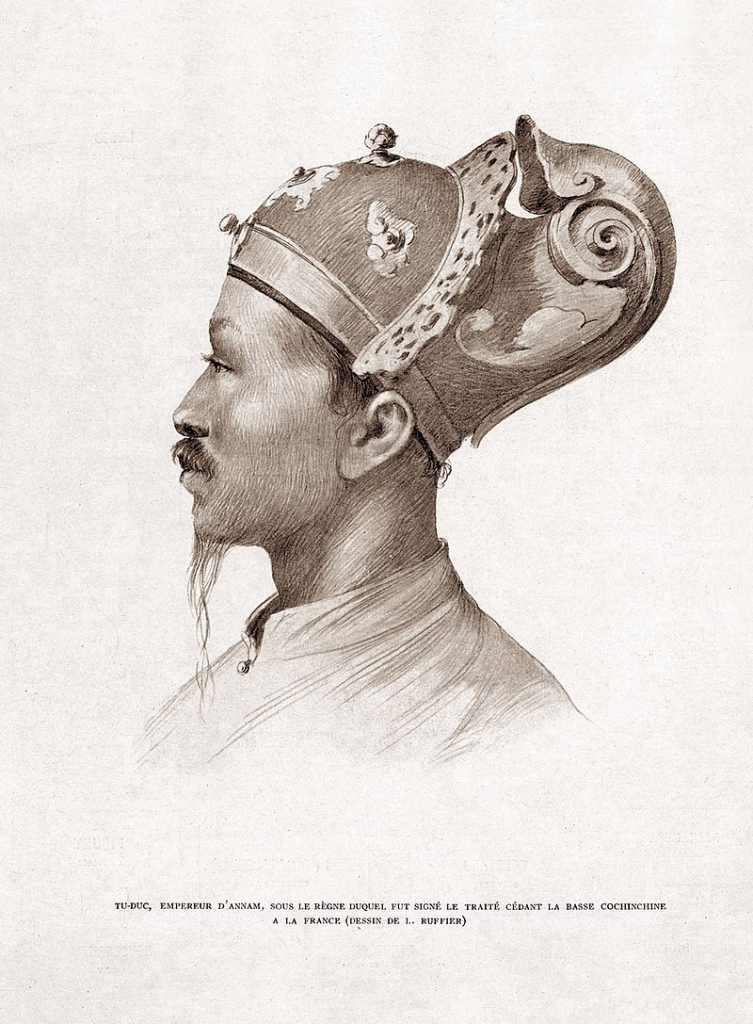
Above: Emperor Tu Duc (1829 – 1883)
Five years later, French forces annexed the remaining southern provinces to create the colony of Cochinchina.
France became embroiled in domestic troubles and the French government was divided on whether to continue the enterprise, but their administrators in Cochinchina had their eyes on the north.
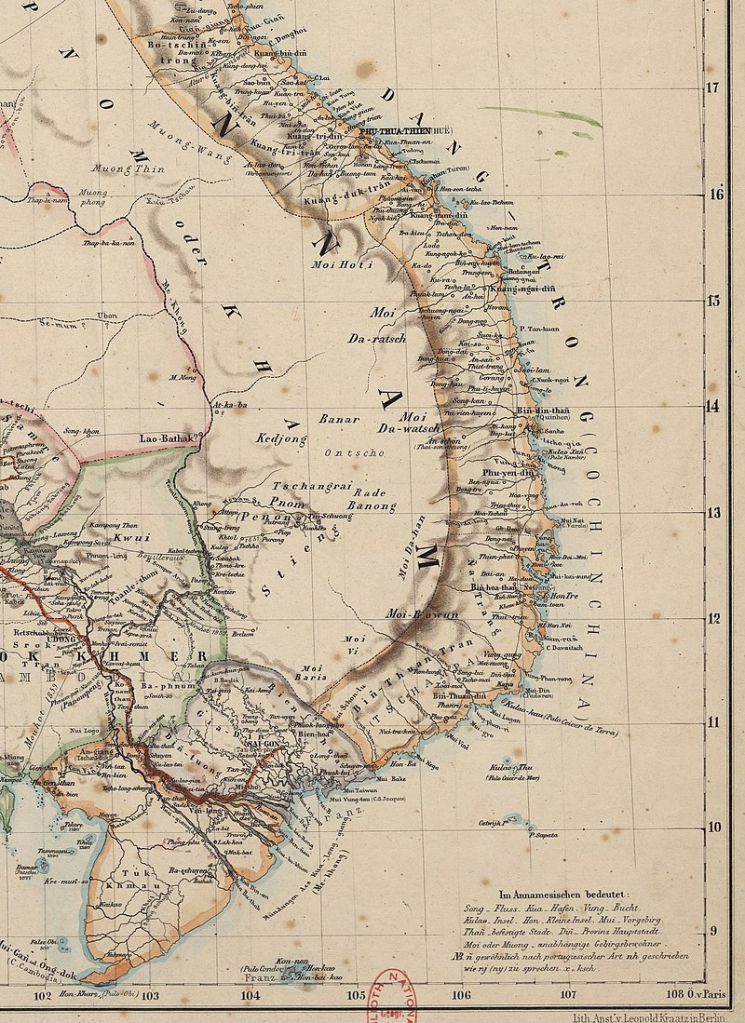
Above: Cochinchina, 1867
The first attempt to take Hanoi and open up the Red River into China failed in 1873.
A larger force was dispatched in 1882 and within a few months, France was in control of Hanoi and the lower reaches of the Red River Delta.

Spurned on by this success, the French Parliament financed the first contingents of the French Expeditionary Force just as the Nguyen were floundering in a succession crisis following the death of Tu Duc.
In August 1883, when the French fleet sailed into the mouth of the Perfume River, near Hué, the new emperor was compelled to meet their demands.

Above: French Far East Expeditionary Force badge
Annam (central Vietnam) and Tonkin (the north) became protectorates of France, to be combined with Cochinchina, Cambodia and, later, Laos to form the Union of Indochina after 1887.


Above: Flag of Cambodia

Above: Flag of Laos
For a population brought up on legends of heroic victories over superior forces, the ease with which France had occupied was a deep psychological blow.
The earliest resistance movements focused on the restoration of the monarchy, such as the Can Vuong (save the king) movement of the 1890s, but any emperor showing signs of patriotism was swiftly removed by the French administration.

Up until the mid-1920s, Vietnam’s fragmented anticolonial movements were easily controlled by the Sûreté, the formidable French secret police.
On the whole, the nationalists’ aims were political rather than social or economic.
Most failed to appeal to the majority of Vietnamese.
Gradually, however, the nationalists saw that a more radical approach was called for.
An influential leader named Phan Boi Chau finally called for the violent overthrow of the colonial regime.

Above: Phan Boi Chau (1867 – 1940)
Meanwhile, over the border in southern China, the Revolutionary Youth League was founded in 1925.

Above: Flag of China
Vietnam’s first Marxist-Leninist organization, its founding father was a certain Ho Chi Minh.

Above: German philosopher Karl Marx (1818 – 1883)

Above: Russian revolutionary Vladimir Lenin (1870 – 1924)
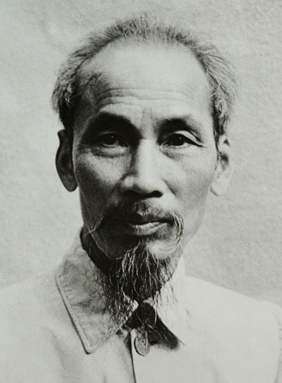
Above: Vietnamese revolutionary Ho Chi Minh (1890 – 1969)
Born in 1890, the son of a patriotic minor official, Ho was already in trouble with the French authorities in his teens.
He left Vietnam in 1911, spending several years wandering the world.

Above: (in green) Location of Vietnam
He worked in the dockyards of Brooklyn and as a pastry chef in London’s Carlton Hotel, then turned up in Paris after World War One under one of his pseudonyms, Nguyen Ai Quoc (Nguyen the Patriot).

Above: Brooklyn Navy Yard, Brooklyn, New York City, New York, USA (1918)

Above: 1905 postcard of The Carlton Hotel (1899 – 1940), London, England

Above: Paris, France
In France, Ho became increasingly active among other exiled dissidents exploring new ways to bring an end to colonial rule.
At this time one of the few political groups actively supporting anticolonial movements were the Communists.

Above: Hammer and sickle symbol of Communism
In 1920, Ho became a founding member of the French Communist Party.
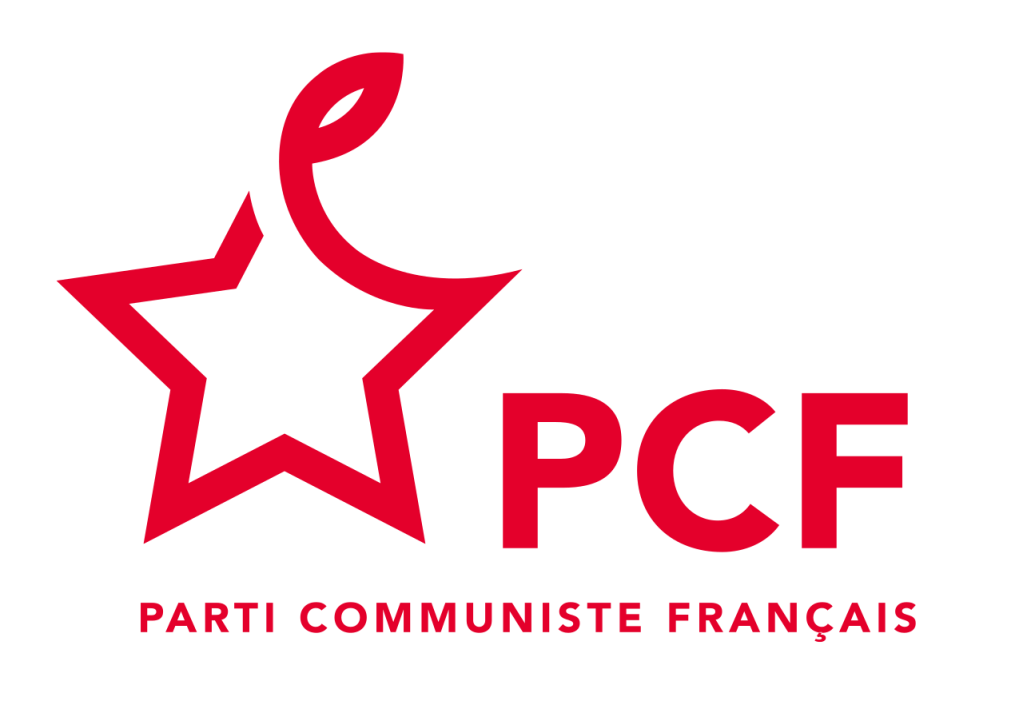
By 1923, he was in Moscow, training as a Communist agent.

Above: Red Square, Moscow, Russia
A year later, he went to southern China, where he later set up Vietnam’s first Marxist-Leninist organization, the Revolutionary Youth League, which attracted a band of impassioned young Vietnamese.

Above: Flag of the Communist Party of Vietnam
Although many other subsequently famous revolutionaries worked with Ho, it was largely his fierce dedication, single-mindedness and tremendous charisma that held the nationalist movement together and finally propelled the country to independence.
The first test of Ho’s leadership came in 1929 when, in his absence, the League split into three separate Communist parties.
In Hong Kong a year later, Ho persuaded the rival groups into one Indochinese Communist Party whose main goal was an independent Vietnam governed by workers, peasants and soldiers.
In preparation for the revolution, cadres were sent into rural areas and among urban workers to set up party cells.

Above: Hong Kong, China
The timing could not have been better:
Unemployment and poverty were on the increase as the Great Depression took hold, while France became less willing to commit resources to its colonies.

Above: Florence Thompson (1903 – 1983) with several of her children in a photograph known as “Migrant Mother“.
The Library of Congress caption reads:
“Destitute pea pickers in California. Mother of seven children. Age thirty-two. Nipomo, California”
In the 1930s, the Federal Security Agency (FSA) (1939 – 1953) employed several photographers to document the effects of the Great Depression on the population of America.
Many of the photographs can also be seen as propaganda images to support the U.S. government’s policy distributing support to the worst affected, poorer areas of the country.
Dorothea Lange’s (1895 – 1965) image of migrant pea picker, Florence Owens Thompson, and her family has become an icon of resilience in the face of adversity.
The child to the viewer’s right was Thompson’s daughter, Katherine (later Katherine McIntosh), 4 years old.
For his efforts, the French authorities placed a death sentence on Ho’s head.
He was arrested and imprisoned in the British Colony of Hong Kong.
His release was later arranged by his counsel, who circulated confusion about his identity and rumours that he had died of tuberculosis.
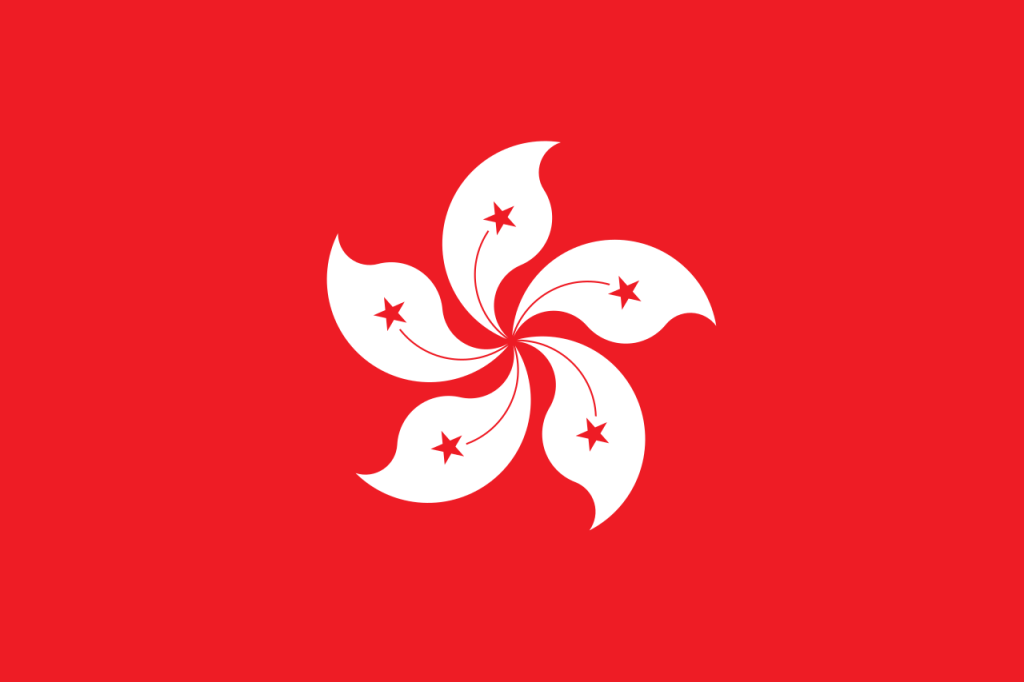
Above: Flag of Hong Kong
Throughout the 1930s Vietnam was plagued with strikes and labour unrest, of which the most important was the Nghe Tinh uprising in the summer of 1930.
French planes bombed a crowd of 20,000 demonstrators marching on Vinh.
Within days, villagers had seized control of much of the surrounding countryside, some setting up revolutionary councils to evict wealthy landlords and redistribute land to the peasants.
The uprising demonstrated the power of socialist organizations, but proved disastrous in the short term:
Thousands of peasants were killed or imprisoned, the leaders were executed and the Communist Party structure was badly mauled.

Most of the ringleaders ended up in the notorious penal colony of Poulo Condore, which came to be known as the “University of the Revolution“.
It is estimated that the French held some 10,000 activists in prison by the late 1930s.

Above: Con Dao Prison, Poulo Condore Island, Vietnam
Despite much talk of the “civilizing mission” of imperial rule, the French were more interested in the economic potential of their new possession.
Governor-General Paul Doumer launched a massive programme of infrastructural development, constructing railways, bridges and roads, and draining vast areas of the Mekong Delta swamp, all funded under punitive taxes, with state monopolies on opium, alcohol and salt accounting for 70% of government revenues.

Above: Paul Doumer (1857 – 1932)(French President: 1931 – 1932)
During the Great Depression of the 1930s, markets collapsed, peasants were forced off the land to work as indentured labour in the new rubber, tea and coffee estates or in the mines, often under brutal conditions.
Heavy taxes exacerbated rural poverty.
Any commercial or industrial enterprises were kept firmly in French hands or were controlled by the small minority of Vietnamese and Chinese who actually benefitted under the new regime.
On the positive side, mass vaccination and health programmes did bring the frequent epidemics of cholera, smallpox and plague under control.
Education was a thornier issue:
Overall, education levels deteriorated during French rule, particularly among unskilled labourers, but a small elite from the emerging urban middle class received a broader, French-based education and a few went to universities in Europe.
Not that it got them very far:
Vietnamese were barred from all but the most menial jobs in the colonial administration.
Ironically, it was this frustrated and alienated group, imbued with the ideas of Western liberals and Chinese reformers, who began to challenge French.

Above: Flag Tower, Hanoi, Vietnam
The German occupation of France in 1940 suddenly changed the whole political landscape:
Not only did it demonstrate to the Vietnamese the vulnerability of their colonial masters, but it also overturned the established order in Vietnam and provided Ho Chi Minh with the opportunity he had been waiting for.

Above: Flag of Nazi Germany (1935 – 1945)
The immediate repercussion was the Japanese occupation of Indochina after Vichy France signed allowing Japan to station troops in the colony, while leaving the French colonization in place.

Above: Emblem of Vichy France (l’État Français)(1940 – 1944)
By mid-1941 the region’s coalmines, rice fields and military installations were all under Japanese control.
Some Vietnamese nationalist groups welcomed this turn of events as the Japanese made encouraging notices about autonomy and “Asia for Asians“.
Others, mostly Communist groups, declared their opposition to all foreign intervention and continued to operate from secret bases in the mountainous region that flakes the border between China and Vietnam.

Above: The Empire of Japan at its greatest extent (1942)
By this time, Ho Chi Minh had reappeared in southern China, from where he walked over the border into Vietnam, wearing a Chinese-style tunic and rubber-tyre sandals, carrying his rattan trunk and trusty Hermes typewriter.

The date was February 1941.
Ho had been in exile for 30 years.
In Pac Bo Cave, near Cao Bang, Ho met with other resistance leaders, including Vo Nguyen Giap and Pham Van Dong, to start the next phase in the fight for national liberation.

Above: Pac Bo Cave, Cao Bang Province, Vietnam – The cave, in which Ho Chi Minh lived for seven weeks, during February and March 1941, when he returned after 30 years of exile

Above: General Võ Nguyên Giáp (1911 – 2013)

Above: Phạm Văn Đồng (1906 – 2000) (Prime Minister of Vietnam: 1955 – 1987)
The League for the Independence of Vietnam, better known as the Viet Minh, was founded in May 1941.
Over the next few years Viet Minh recruits received military training in southern China.
Gradually the Viet Minh established liberated zones in the northern mountains to provide bases for future guerilla operations.

Above: Viet Minh flag, later the flag of North Vietnam, later the flag of Vietnam
With Japanese defeat looking ever more likely, Ho Chi Minh set off once again into China to seek military and financial support from the Chinese and from the Allied forces operating out of Kunming.

Above: Kunming, Yunan Province, China
Ho also made contact with the American Office of Strategic Services (OSS)(forerunner of the CIA), which promised him limited arms, much to the anger of the Free French who were already planning their return to Indochina.
In return for American aid the Viet Minh provided information about Japanese forces and rescued Allied pilots shot down over Vietnam.

Above: OSS Insignia

Above: Hồ Chí Minh (third from left, standing) with the OSS in 1945
Later, in 1945, an American team arrived in Ho’s Cao Bang base, where they found him suffering from malaria, dysentery and dengue fever:
It is said they saved his life.

Above: Cao Bang City, Cao Bang Province, Vietnam
Meanwhile, suspecting a belated French counterattack, Japanese forces seized full control of the country in March 1945.
They declared a nominally independent state under the leadership of Bao Dai, the last Nguyen emperor, and imprisoned most of the French army.
The Viet Minh quickly moved onto the offensive, helped to some extent by a massive famine that ravaged northern Vietnam that summer.
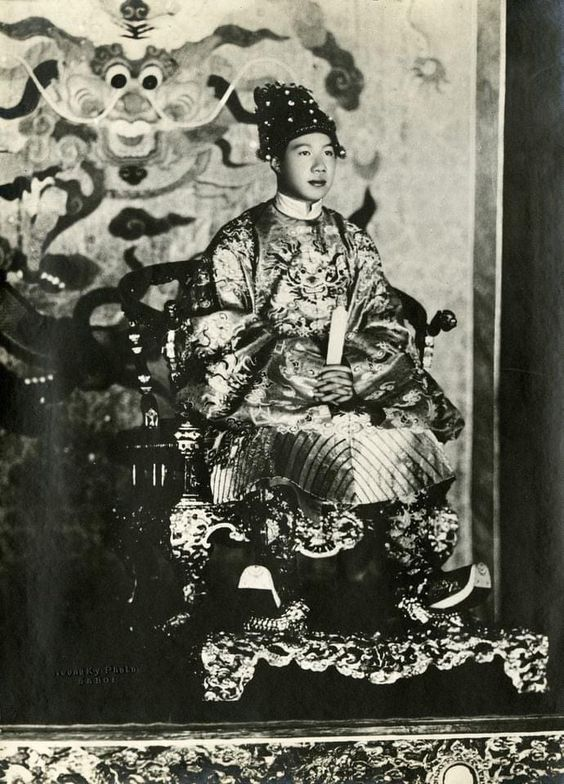
Above: Emperor Bao Dai (1913 – 1997)
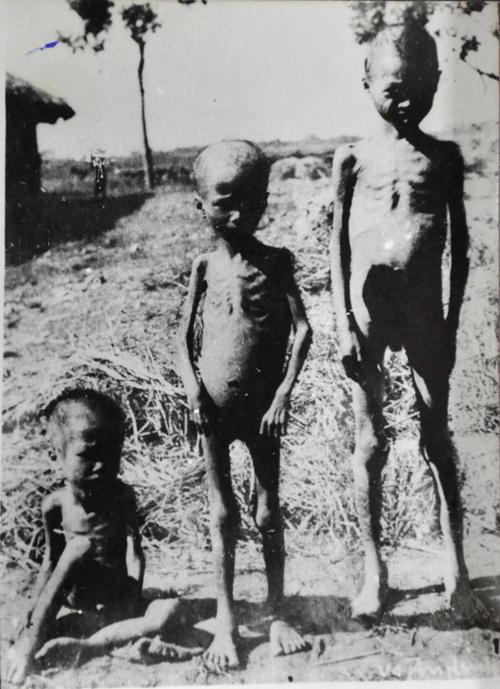
Above: Famine in Vietnam, 1945
One to two million Vietnamese starved to death in the Red River Delta of northern Vietnam due to the Japanese, as the Japanese seized Vietnamese rice and didn’t pay.
In Phat Diem, Vietnamese farmer Di Ho was one of the few survivors who saw the Japanese steal grain.
The North Vietnamese government accused both France and Japan of the famine.
Võ An Ninh took photographs of dead and dying Vietnamese during the Great Famine.
Starving Vietnamese were dying throughout northern Vietnam in 1945 due to the Japanese seizure of their crops by the time the Chinese came to disarm the Japanese and Vietnamese corpses were all throughout the streets of Hanoi and had to be cleaned up by students.
Then, in early August, US forces dropped the first atom bomb on Hiroshima, precipitating the Japanese surrender on 14 August.

Left picture : At the time this photo was made, smoke billowed 20,000 feet above Hiroshima while smoke from the burst of the first atomic bomb had spread over 10,000 feet on the target at the base of the rising column.
Six planes of the 509th Composite Group participated in this mission: one to carry the bomb (Enola Gay), one to take scientific measurements of the blast (The Great Artiste), the third to take photographs (Necessary Evil), while the others flew approximately an hour ahead to act as weather scouts (6 August 1945).
Bad weather would disqualify a target as the scientists insisted on a visual delivery.
The primary target was Hiroshima, the secondary was Kokura and the tertiary was Nagasaki.
Right picture : Atomic bombing of Nagasaki on 9 August 1945
The Japanese surrender left a power vacuum that Ho Chi Minh was quick to exploit.
On 15 August, Ho called for a national uprising, which later came to be known as the August Revolution.
Within four days, Hanoi was seething with pro-Viet Minh demonstrations.
In two weeks most of Vietnam came under their control.
Emperor Bao Dai handed over his imperial sword to Ho’s provisional government at the end of August.

Above: Occupation of Tonkin Palace, Hanoi, Vietnam, 19 August 1945
On 2 September 1945, Ho Chi Minh proclaimed the establishment of the Democratic Republic of Vietnam, cheered by a massive crowd in Hanoi’s Ba Dinh Square.
For the first time in 80 years, Vietnam was an independent country.
Famously, Ho’s Declaration of Independence quoted from the American Declaration:
“All men are created equal.
They are endowed by their Creator with certain inalienable rights, among these are life, liberty and the pursuit of happiness.“
But this, and subsequent appeals for American help against the looming threat of recolonization, fell on deaf ears as America became increasingly concerned at Communist expansion.

Above: Ho Chi Minh declaring independence at Ba Dinh Square, Hanoi, Vietnam on 2 September 1945

Above: A copy of the original proclamation of Independence of the Democratic Republic of Vietnam

Above: Telegram from Hồ Chí Minh to US President Harry S. Truman requesting support for independence (Hanoi, 28 February 1946)
The Potsdam Agreement, which marked the end of World War Two, failed to recognize the new Republic of Vietnam.

Above: The Big Three of the Potsdam Agreement, 1 August 1945
Left to right: British Prime Minister Clement Attlee (1945 – 1951), US President Harry S. Truman (1884 – 1972) and Soviet leader Joseph Stalin (1878 – 1953)
Instead, Japanese troops south of the 16th Parallel were to surrender to British authority, while those in the north would defer to the Chinese Kuomintang.

Above: Emblem of the Kuomintang (Chinese Nationalist Party)
Nevertheless, by the time these forces arrived, the Viet Minh were already in control, having relieved the Japanese of most of their weapons.
In the south, rival nationalist groups were battling it out in Saigon, where French troops had also joined in the fray.

Above: A Japanese naval warrant officer surrenders his sword to British Sub Lieutenant Anthony Martin in a ceremony in Saigon, 13 September 1945
The situation was so chaotic that the British commander proclaimed martial law and, amazingly, even deployed Japanese soldiers to help restore calm.
Against orders, he also rearmed the 6,000 liberated French troops.

Above: British General Gracey Douglas David (1894 – 1964)
Saigon was soon back in French hands.
A few days later, General Leclerc arrived with the first units of the French Expeditionary Force, charged with reimposing colonial rule in Indochina.

Above: General Philippe François Marie Leclerc de Hauteclocque (1902 – 1947)
Things were going more smoothly in the north, though the 200,000 Chinese soldiers stationed there acted increasingly like an army of occupation.
The Viet Minh could muster a mere 5,000 ill-equipped troops in reply.
Forced to choose between the two to survive, Ho Chi Minh finally rated French rule the lesser of the two evils, reputedly commentating:
“I prefer to smell French s–t for five years rather than Chinese s–t for the rest of my life.”
In March 1946, Ho’s government signed a treaty allowing a limited French force to replace Kuomintang soldiers in the north.
In return, France recognized the Democratic Republic as a “free state” within the proposed French Union.
The terms were left deliberately vague.
The treaty provided for a referendum to determine whether Cochinchina would join the new state or remain separate.

Above: Võ Nguyên Giáp (left) with Hồ Chí Minh (right) in Hanoi in 1945
While further negotiations dragged on during the summer of 1946, both sides were busily rearming as it became apparent that the French were not going to abide by the treaty.
By late April, the Expeditionary Force had already exceeded agreed levels.
There was no sign of the promised referendum.
In September 1946, the talks effectively broke down.
Skirmishes between Vietnamese and French troops in the northern delta boiled over in a dispute over customs control in Haiphong.
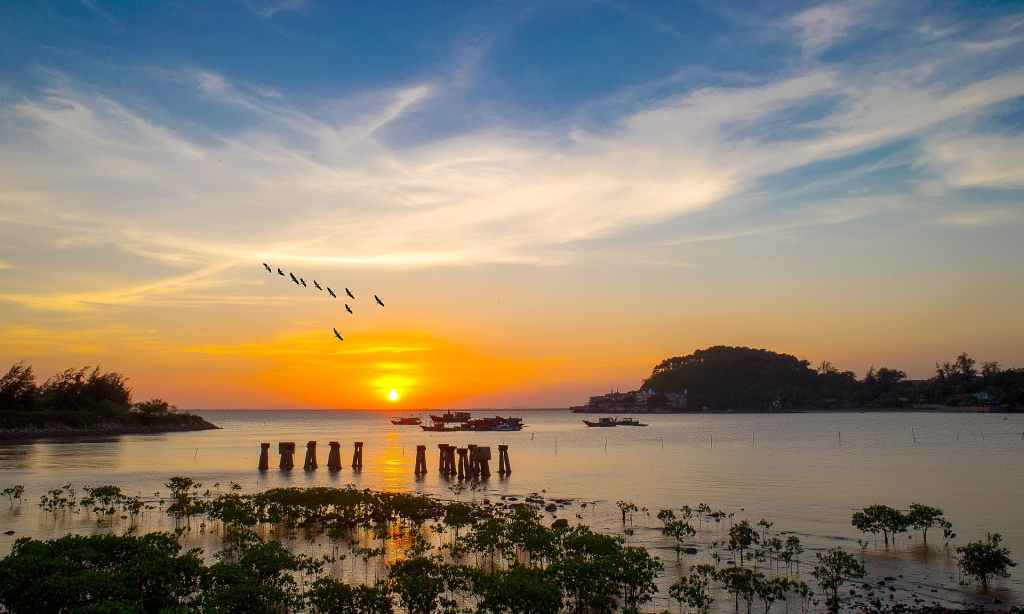
Above: Haiphong, Vietnam
From 1954 to 1975, Haiphong served as the most important maritime city of North Vietnam.
On the morning of 20 November 1946, a French patrol ship seized a Chinese junk attempting to bring contraband into Haiphong.
While seemingly routine, the seizure of the ship was the beginning of a chain of unfortunate events.

Above: Chinese junks
Vietnamese soldiers reacted to the seizure by firing on the French ship from the shore, killing 23 soldiers.
Armed clashes immediately broke out on land between French and Vietnamese nationalists, with a French burial party being ambushed, losing six more men.
The French immediately worked to dissipate the conflict and stopped the outbreak by agreeing to respect Vietnamese sovereignty in Haiphong on 22 November 1946.
This, however, was only the beginning of the incident.

Once the news of the skirmish came to Admiral d’Argenlieu in Paris, he sent a cable to Jean Étienne Valluy, commander of French forces in Indochina, ordering him to use force against the Vietnamese in Haiphong.

Above: Georges Thierry d’Argenlieu (1889 – 1964)
Valluy, in turn, sent an order to Colonel Debès, commander of the French troops at Haiphong, stating:
“It appears clear that we are up against premeditated aggressions carefully staged by the Vietnamese regular army.
The moment has come to give a severe lesson to those who have treacherously attacked you.
Use all the means at your disposal to make yourself complete master of Haiphong.“

Above: Jean Étienne Valluy (1899 – 1970)
Debès then issued an ultimatum to the Vietnamese in Haiphong demanding a withdrawal from the French section and Chinese sections of the city, including the port.
In the order, Debès invoked the Franco-Chinese agreement of 28 February 1946 as justification for demanding the Vietnamese evacuation of parts of the city.
Debès argued that the treaty gave France protective rights over the Chinese in Vietnam and thus gave them jurisdiction to engage in combat.
After the Vietnamese failed to evacuate in time, the French began a bombardment of the Vietnamese sections of the city, using three French avisos (dispatch boats):
- Chevreuil (a Chamois class minesweeping sloop)

Above: A Chamois class minesweeping sloop
- Savorgnan de Brazza, sloop

Above: The Savorgnan de Brazza
- dispatch ship Dumont d’Urville
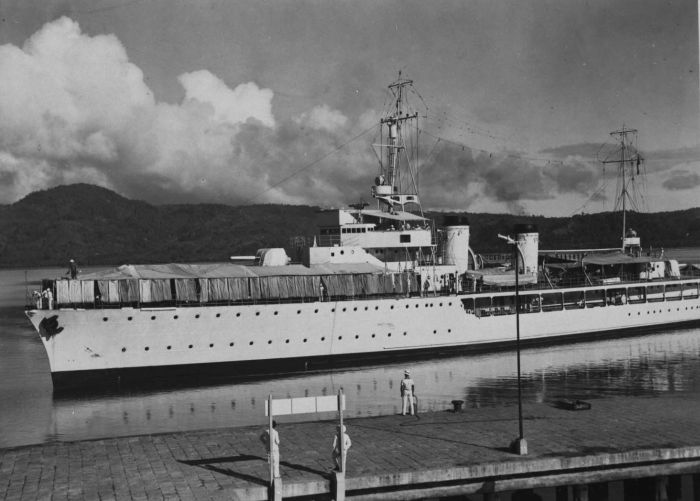
Above: The Dumont d’Urville
The role of the heavy cruiser Suffren in the bombardment is controversial, as some versions of events suggest the ship participated in the shelling and others claim it arrived after the action had already been carried out.

Above: The Suffren
By 28 November 1946, Colonel Debès had taken complete control over the town.
While reports about the total number of casualties from the bombardment range widely from upwards of 20,000 to less than 100.
Today it is widely agreed that the number of casualties is very close to 6,000 as reported by the French sociologist Paul Mus.

Above: Paul Mus (1902 – 1969)
In return, French forces lost 20 to 29 men killed in Hai Phong from 20 to 23 November.
To quell the rioting, the French navy bombed the town on 25 November, killing thousands of civilians.

This was followed by the announcement that French troops would assume responsibility for law and order in the north.
By way of reply, Viet Minh units attacked French installations in Hanoi on 19 December.
Then, while resistance forces held the capital for a few days, Ho Chi Minh and the regular army slipped away into the northern mountains.

Above: Main entrance of the Temple of Literature in Hanoi, Vietnam
For the first years of the war against the French (also known as the First Indochina War or the Franco-Viet Minh War) the Viet Minh kept largely to their mountain bases in northern and central Vietnam.
While the Viet Minh were building up and training an army, the Expeditionary Force was consolidating its control over the Red River Delta and establishing a string of highly vulnerable outposts around guerrilla-held territory.
In October 1947 the French attempted an ambitious all-out attack against enemy headquarters, but it soon became obvious that this was the an unconventional “war without fronts” where Viet Minh troops could simply melt away into the jungle when threatened.
In addition, the French suffered from hit-and-run attacks deep within the Delta, unprotected by a local population who either actively supported or at least tolerated the Viet Minh.

Above: Emblem of the French Union (1946 – 1958)
Although the French persuaded Bao Dai to return as head of the Associated State of Vietnam in March 1949, most Vietnamese regarded him as a mere puppet.
His government won little support.

Above: Flag of the State of Vietnam (1949 – 1955), later South Vietnam (1955 – 1975)
The War entered a new phase after the Communist victory in China in 1949.

Above: Chairman of the Chinese Communist Party Mao Zedong (1893 – 1976)
America was drawn in and funded the French military to the tune of at least $3 billion by 1954.
The Viet Minh, under the command of General Giap, recorded their first major victory, forcing the French to abandon their outposts along the Chinese border and gaining unhindered access to sanctuary to China.
Early in 1951, equipped with Chinese weapons and confident of success, the Viet Minh launched an assault on Hanoi itself, but in this first pitched battle of the War, suffered a massive defeat, losing over 6,000 in a battle that saw napalm deployed for the first time in Vietnam.
But Giap had learnt his lesson.
For the next two years, the French sought in vain to repeat their success.

Above: Võ Nguyên Giáp and Phạm Văn Đồng, Hanoi, 1945
By now, France was tiring of the War and in 1953 made contact with Ho Chi Minh to find some way of resolving the conflict.
The Americans were growing increasingly impatient with French progress.
The Russians and the Chinese were also applying pressure to end the fighting.
Eventually, the two sides agreed to discussions at the Geneva Conference, due to take place in May the next year to discuss Korean peace.
Meanwhile in Vietnam, a crucial battle was unfolding in an isolated valley on the Lao border, near the town of Dien Bien Phu.

Above: Dien Bien Phu, Dien Bien Province, Vietnam
Early in 1954, French battalions established a massive camp here, deliberately trying to tempt the enemy into the open.
Instead the Viet Minh surrounded the Valley, cut off reinforcements and slowly closed in.
After 59 days of bitter fighting, the French were forced to surrender on 7 May 1954, the eve of the Geneva Conference.
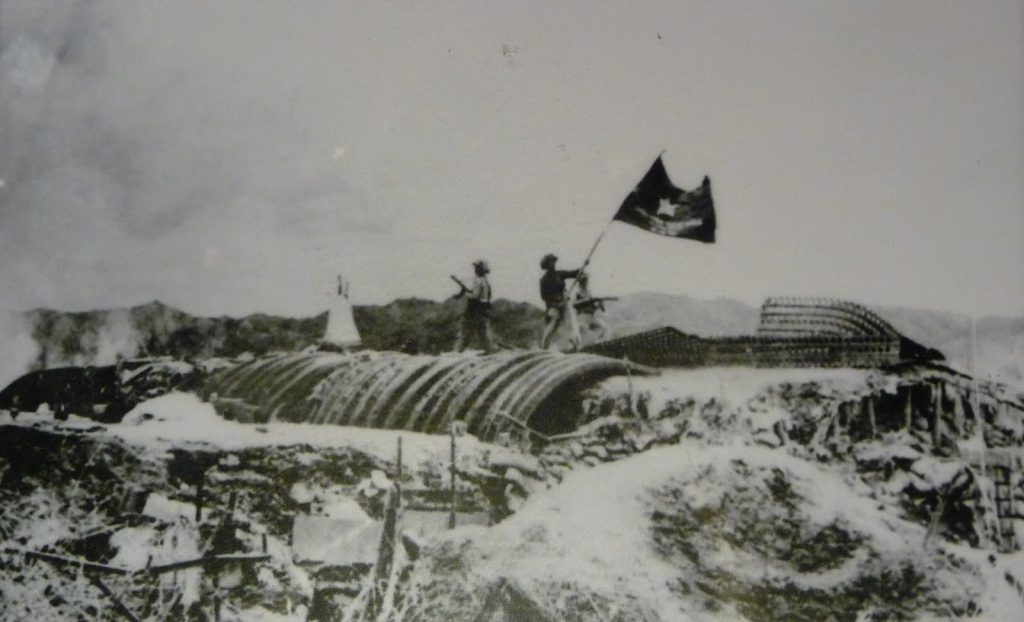
Above: Battle of Dien Bien Phu (13 March – 7 May 1954) – Viet Minh troops plant their flag over the captured French headquarters
The eight years of war proved costly to both sides:
Total losses on the French side stood at 93,000, while an estimated 200,000 Viet Minh soldiers had been killed.

Above: The Geneva Conference, Geneva, Switzerland, 1954
On 8 May, a day after the French capitulation at Dien Bien Phu, the nine delegations attending the Geneva Conference trained their focus upon Indochina:
Hampered by distrust, the Conference succeeded only in reaching a necessarily ambiguous compromise which, however, allowed the French to withdraw with some honour and recognized Vietnamese sovereignty at least in part.
Keen to have a weak and fractured nation on their southern border, the Chinese delegation spurred the Viet Minh into agreeing to a division of the country.
Reliant on Chinese arms, the Viet Minh were forced to comply.
Under the terms of the 1954 Geneva Accords, Vietnam was split in two, along the 17th Parallel, pending elections to be held by July 1956 intended to reunite the country.
The Demarcation Line ran along the Ben Hai River and was sealed by a strip of no man’s land 5 km wide on each side known as the Demilitarized Zone (DMZ).
France and the Viet Minh, who were still fighting in the central highlands even as delegates machinated, agreed to an immediate ceasefire and consented to a withdrawal of all troops to their respective territories – Communists to the north, non-Communists plus supporters of the French to the south.
China, the USSR, Britain, France and the Viet Minh agreed on the Accords, but crucially neither the US nor Bao Dai’s government endorsed them, fearing that they heralded a reunited Communist-ruled Vietnam.
In the long term, the Geneva Accords served to cause a deep polarization within the country and to widen the conflict into an ideological battle between the superpowers, fought out on Vietnamese soil.

The immediate consequence, however, was a massive exodus from the north during the stipulated 300-day period of “free movement“.
Almost a million (mostly Catholic) refugees headed south, their flight aided by the US, and to some extent engineered by the CIA, whose distribution of scaremongering, anti-Communist leaflets was designed to create a base of support for the puppet government it was concocting in Saigon.
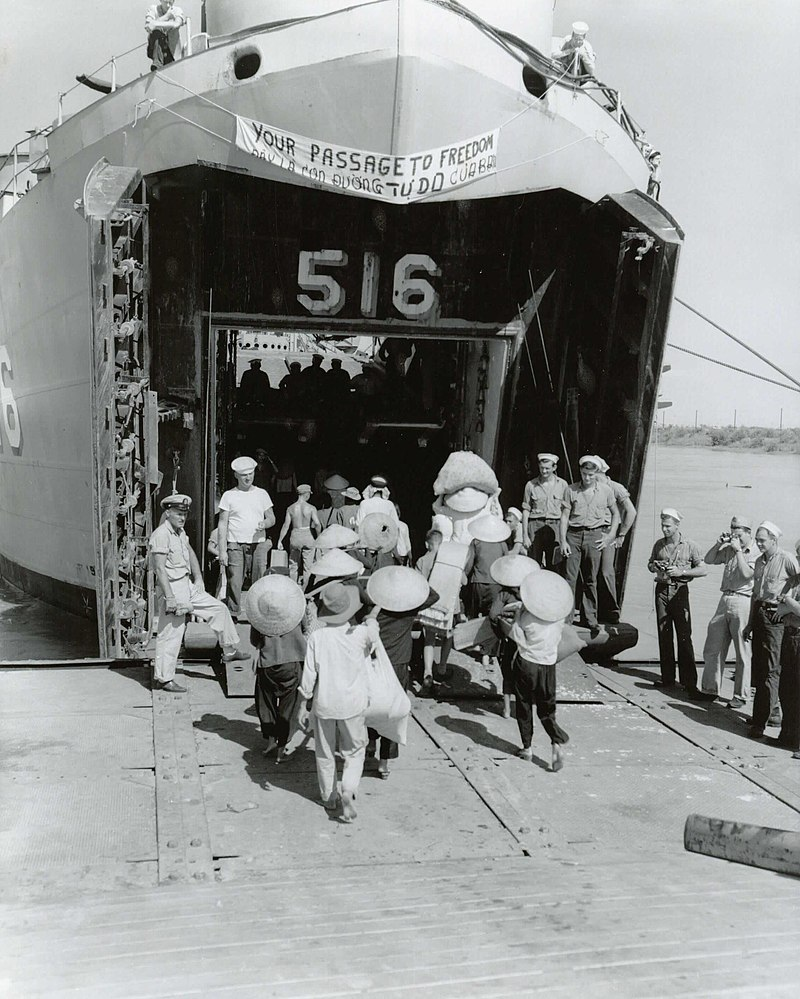
Above: Vietnamese refugees board LST 516 for their journey from Haiphong, North Vietnam, to Saigon, South Vietnam during Operation Passage to Freedom, October 1954.
This operation evacuated thousands of Vietnamese refugees from the then newly created Communist North Vietnam to the Democratic South Vietnam.
By the end of the operation, the Navy had carried to freedom more than 293,000 immigrants, vehicles, and other cargo.
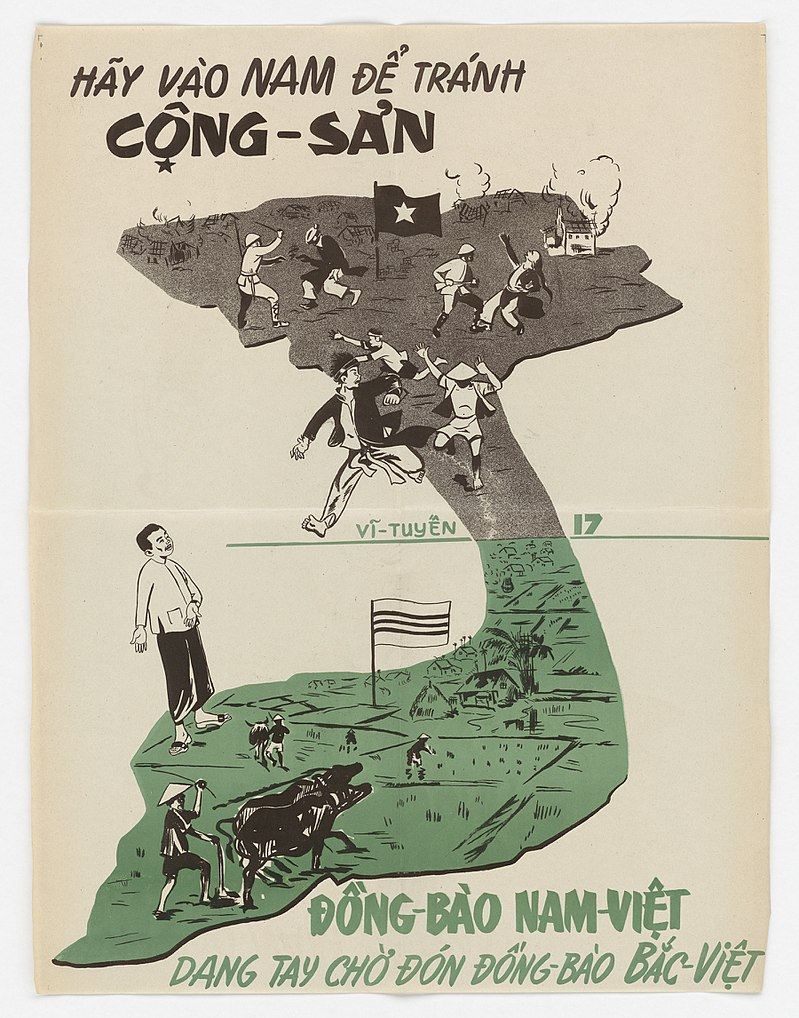
Above: Propaganda poster exhorting Northern Vietnamese to move South during Operation Passage to Freedom:
The text reads “Move to the South to avoid Communism” and “The southern compatriots welcome their northern compatriots with open arms.”
Approaching 100,000 anti-French guerillas and sympathizers moved in the opposite direction to regroup, though, as a precautionary measure, between five and ten thousand Viet Minh cadres remained in the south, awaiting orders from Hanoi.
These dormant operatives, known to the CIA as “stay-behinds” and to the Communists as “winter cadres“, were joined by spies who infiltrated the Catholic move south.

In line with the terms of the ceasefire, Ho Chi Minh’s army marched into Hanoi on 9 October 1954, even as the last French forces were still trooping out.

Above: Hanoi Liberation Day, 9 October 1954
The Geneva Accords were still being thrashed out as Emperor Bao Dai named himself President and Ngo Dinh Diem Prime Minister of South Vietnam on 7 July.
A Catholic, and vehemently anti-Communist, Diem knew that Ho Chi Minh would would win the lion’s share of votes in the proposed elections and therefore steadfastly refused to countenance them.
His mandate “strengthened” by an October 1955 referendum.
The Prime Minister’s garnering of 98.2% of votes cast was more indicative of the blatancy of his vote-rigging than of any popular support.
Diem promptly ousted Bao Dai from the chain of command.
He declared himself President of the Republic of Vietnam.

Above: Ngo Dinh Diem (1901 – 1963)
Diem’s heavy-handed approach on Viet Minh dissidents still in the South was hopelessly misguided:
Although the subsequent witch hunt decimated Viet Minh numbers, the brutal and indiscriminate nature of the operation caused widespread discontent:
All dissenters were targeted – Viet Minh, Communist, or otherwise.
As the supposed “free world democracy” of the South mutated into a police state, over 50,000 citizens died in Diem’s pogrom.

Above: Presidential Standard of South Vietnam (1955 – 1963)
In Hanoi, meanwhile, Ho Chi Minh’s government was finding it had problems of its own, as aided by droves of Chinese advisers, it set about constructing a socialist society.
Years of warring with France had profoundly damaged the country’s infrastructure.
Now it found itself deprived of the South’s plentiful rice stocks.
Worse still, the land reforms of the mid-1950s, vaunted as a Robin Hood-style redistribution of land, saw thousands of innocents “tried” as landlords by ad hoc People’s Agricultural Reform Tribunals, tortured and then executed or set to work in labour camps.
“Reactionaries” were also denounced and punished, often for such imperialist “crimes” as possessing works of the great French poets and novelists.
The Rectification of Errors Campaign of 1956 at least released many victims of the reforms from imprisonment, but as Ho Chi Minh himself said:
“One cannot wake the dead.“

Between 1953 and 1956, the North Vietnamese government instituted various agrarian reforms, including “rent reduction” and “land reform“, which resulted in significant political oppression.
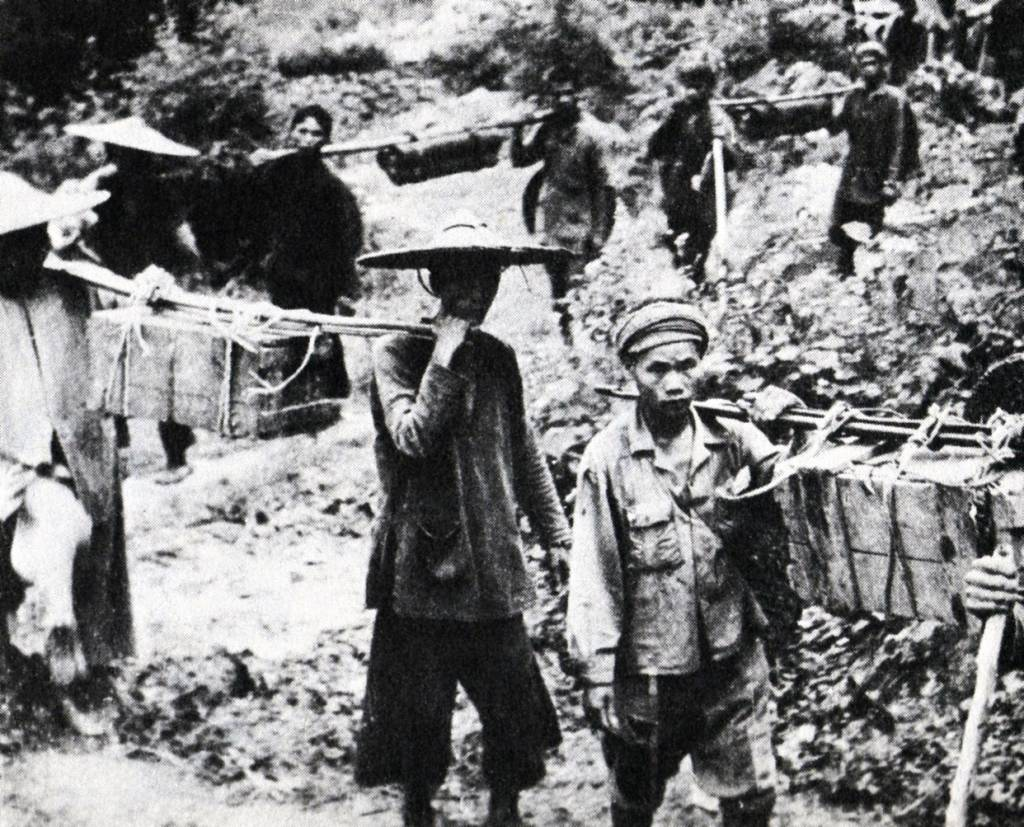
During the land reform, testimony from North Vietnamese witnesses suggested a ratio of one execution for every 160 village residents, which extrapolated nationwide would indicate nearly 100,000 executions.
Because the campaign was concentrated mainly in the Red River Delta area, a lower estimate of 50,000 executions became widely accepted by scholars at the time.
However, declassified documents from the Vietnamese and Hungarian archives indicate that the number of executions was much lower than reported at the time, although likely greater than 13,500.

Above: Flag of Hungary
A Northern democratic literary movement called Nhân vân-Giai phâm (from the names of the two magazines which started the movement, based in Hanoi) developed, which attempted to encourage the democratization of the North and the free expression of thought.
Intellectuals were thus lured into criticizing the leadership so they could be arrested later.
Many were sent to hard labor camps (Gulags), following the model of Mao Tse-tung’s Hundred Flowers campaign in China.

Above: National Emblem of the People’s Republic of China
Freedom of speech, freedom of assembly and other basic civilian freedoms were soon revoked after the government’s attempt of destroying the literary movement.
A puritan personality cult was also established around Ho Chi Minh, later extended nationwide after the Communist reunification of the Vietnam.

Above: Ho Chi Minh pictured with children
With Hanoi so preoccupied with getting its own house in order, Viet Minh guerrillas south of the 17th Parallel were for several years left to fend for themselves.
For the most part, they sat tight in the face of Diem’s reprisals, although guerrilla strikes became increasingly common towards the end of the 1950s, often taking the form of assassinations of government officials.
Only in 1959 did the erosion of their ranks prompt Hanoi to shift up a gear and endorse a more overtly military stance.
Conscription was introduced in April 1960, cadres and hardware began to creep down the Ho Chi Minh Trail.

At the end of the year, Hanoi orchestrated the creation of the National Liberation Front (NLF), which drew together all opposition forces in the South.
Diem dubbed its guerrilla fighters Viet Cong (VC / Vietnamese Communists) – a name which stuck, though in reality the NLF represented a united front of Catholic, Buddhist, Communist and non-Communist nationalists.

Above: Flag of the National Liberation Front (NLF) / Viet Cong
American dollars had been supporting the French war effort in Indochina since 1950.

In early 1955, the White House began to bankroll Diem’s government and the training of his army, the ARVN (Army of the Republic of Vietnam).

Above: Flag of the Army of the Republic of (South) Vietnam (ARVN)
Behind these policies lay the fear of the chain reaction that could follow in Southeast Asia, were South Vietnam to be overrun by Communism – the Domino Effect.
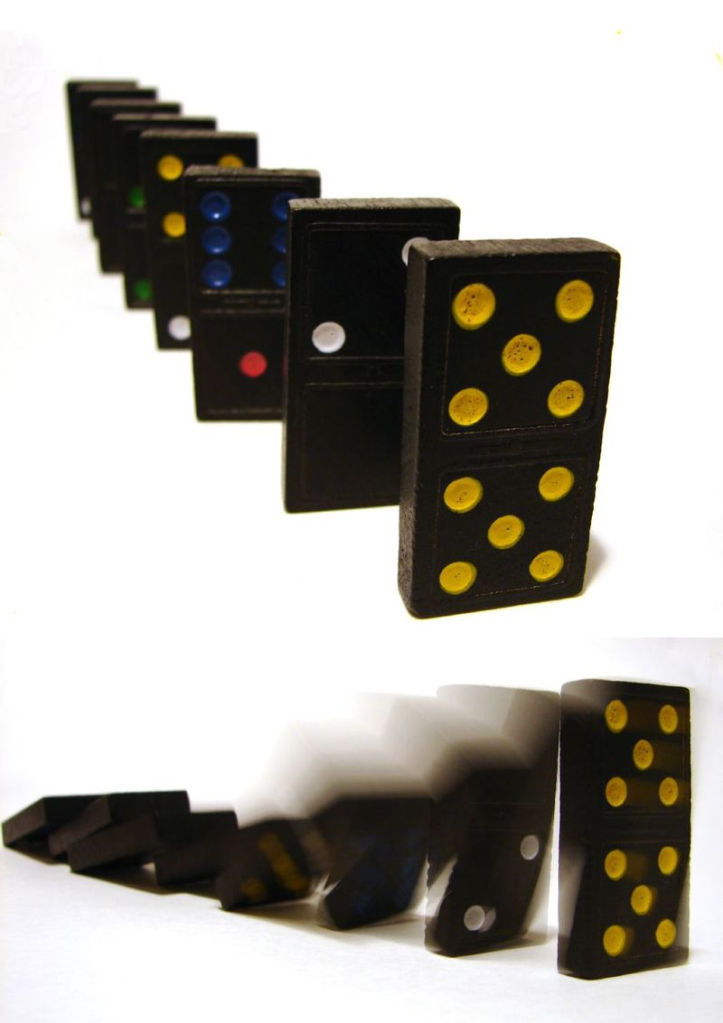
More cynically, what this would mean for the US access to raw materials, trade routes and markets.

Though US President John F. Kennedy baulked at the prospect of large scale intervention, by the summer of 1962 there were 12,000 American advisers in South Vietnam.

Above: John Fitzgerald Kennedy (1917 – 1963) (US President: 1961 – 1963)
Despite all these injunctions of money, Diem’s incompetent and unpopular government was losing ground to the Viet Cong in the battle for the hearts and minds of the population.
Particularly damaging to the government was its Strategic Hamlets Programme.
Formulated in 1962 and based on British methods used during the Malayan Emergency, the Programme forcibly relocated entire villages into fortified stockades, with the aim of keeping the Viet Cong at bay.
Ill-concerned, insensitive and open to exploitation by corrupt officials, the Programme had the opposite effect, driving many disgruntled villagers into the arms of the resistance.

Above: South Vietnamese “Strategic Hamlet“
Militarily, things were little better.
If America needed proof that Diem’s government was struggling to subdue the guerrillas, it came in January 1963, at the Battle of Ap Bac, where incompetent ARVN soldiers in Hué suffered heavy losses against a greatly outnumbered Viet Cong force.

Above: Stamp commemorating the Battle of Ấp Bắc, 2 January 1963
In a country where surveys of the religious composition at the time estimated the Buddhist majority to be 90%, President Diêm was a member of the Catholic minority, and pursued discriminatory policies favoring Catholics for public service and military promotions, as well as in the allocation of land, business arrangements and tax concessions.
Diệm once told a high-ranking officer, forgetting that the officer was from a Buddhist family:
“Put your Catholic officers in sensitive places.
They can be trusted.“
Many officers in the Army of the Republic of Vietnam (ARVN) converted to Roman Catholicism as their military prospects depended on it.
Additionally, the distribution of firearms to village self-defense militias saw weapons given only to Roman Catholics, with some Buddhists in the army being denied promotion if they refused to convert to Roman Catholicism.
Some Catholic priests ran their own private armies.
There were forced conversions, looting, shelling, and demolition of pagodas in some areas, to which the government turned a blind eye.
Some Buddhist villages converted en masse to receive aid or avoid being forcibly resettled by Diệm’s regime.
The “private” status that was imposed on Buddhism by the French, which required official permission to be obtained by those wishing to conduct public Buddhist activities, was not repealed by Diệm.
Catholics were also de facto exempt from corvée (indentured) labour, which the government obliged all citizens to perform.
US aid was distributed disproportionately to Catholic majority villages by Diệm’s regime.
The Catholic Church was the largest landowner in the country and enjoyed special exemptions in property acquisition, and land owned by the Catholic Church was exempt from land reform.
The white and gold Vatican flag was regularly flown at all major public events in South Vietnam.

Above: Flag of the Vatican City
Diệm dedicated his country to the Virgin Mary in 1959.

Above: The Madonna in Sorrow, Giovanni Battista Salvi da Sassoferrato
Buddhist discontent erupted following a ban in early May on flying the Buddhist flag in Hué on Vesak, the birthday of Gautama Buddha.

Just days before, Catholics had been encouraged to fly the Vatican flag at a celebration for Archbishop Ngô Dinh Thuc of Huế, Diệm’s elder brother.

Above: Flag of Buddhism

Above: Pierre Martin Ngô Đình Thục (1897 – 1984)
A large crowd of Buddhists protested the ban, defying the government by flying Buddhist flags on the Buddhist holy day of Vesak and marching on the government broadcasting station.

Above: Vesak Day celebrations
Government forces fired into the crowd of protesters, killing nine people.
Diệm’s refusal to take responsibility — he blamed the Viet Cong for the deaths — led to further Buddhist protests and calls for religious equality.
As Diem remained unwilling to comply with Buddhist demands, the frequency of protests increased.
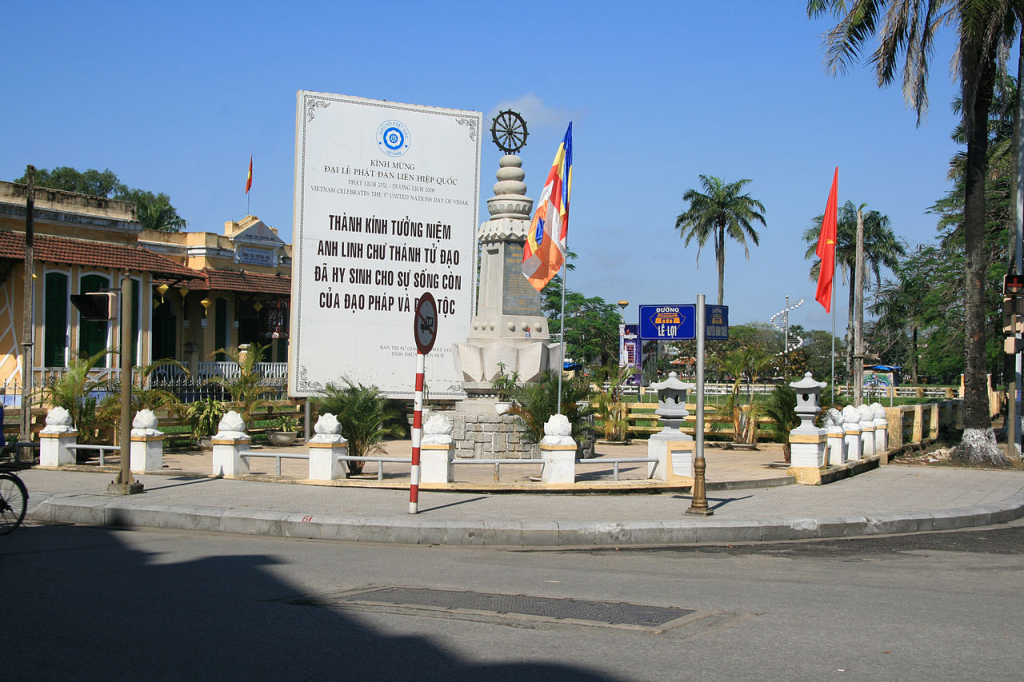
Above: Monument to the Huế Phật Đản shootings, 8 May 1963

Above: Memorial to the Buddhists killed in the demonstrations during the Phat Dan of 1963 in Hue, Vietnam
On 10 June 1963, US correspondents were informed that “something important” would happen the following morning on the road outside the Cambodian embassy in Saigon.
Most of the reporters disregarded the message, since the Buddhist crisis had at that point been going on for more than a month.
(The Buddhist crisis (Biến cố Phật giáo) was a period of political and religious tension in South Vietnam between May and November 1963, characterized by a series of repressive acts by the South Vietnamese government and a campaign of civil resistance, led mainly by Buddhist monks.)
The next day only a few journalists turned up, including David Halberstam of the New York Times and Malcolm Browne, the Saigon bureau chief for the Associated Press (AP).



Above: Malcolm Browne (1931 – 2012)
Quảng Đức arrived as part of a procession that had begun at a nearby pagoda.
Around 350 monks and nuns marched in two phalanxes, preceded by an Austin Westminster sedan, carrying banners printed in both English and Vietnamese.
They denounced the Diệm government and its policy towards Buddhists, demanding that it fulfill its promises of religious equality.
Another monk offered himself, but Quảng Đức’s seniority prevailed.
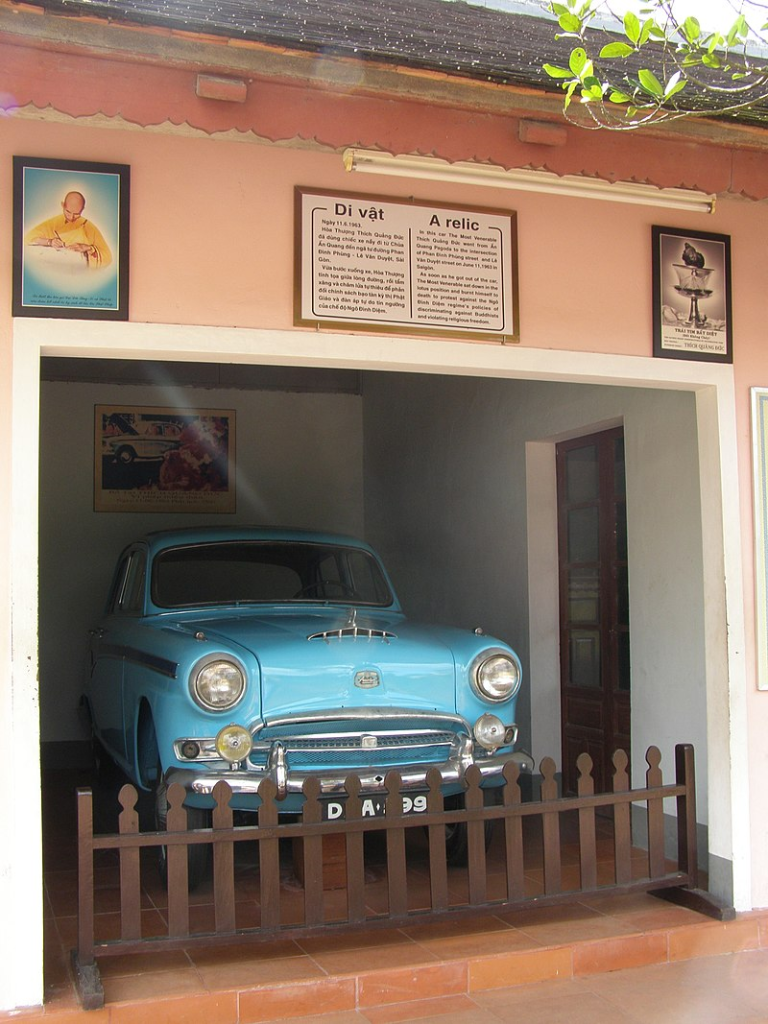
Above: The car in which Quảng Đức travelled to his self-immolation
The act occurred at the intersection of Phan Đình Phùng Boulevard (now Nguyễn Đình Chiểu Street) and Lê Văn Duyệt Street (now Cách Mạng Tháng Tám Street), a few blocks southwest of the Presidential Palace (now the Reunification Palace).

Above: Independence Palace (Reunification Palace), Hoi Chi Minh City (Saigon), Vietnam

Above: A memorial to Quảng Đức located on the site of his death, Ho Chi Minh City (Saigon), Vietnam
Quảng Đức emerged from the car along with two other monks.
One placed a cushion on the road while the second opened the trunk and took out a five-gallon petrol can.
As the marchers formed a circle around him, Quảng Đức calmly sat down in the traditional Buddhist meditative lotus position on the cushion.
A colleague emptied the contents of the petrol container over Quảng Đức’s head.
Quảng Đức rotated a string of wooden prayer beads and recited the “Homage to Amitabha Buddha” before striking a match and dropping it on himself.
Flames consumed his robes and flesh, and black oily smoke emanated from his burning body.
Quảng Đức’s last words before his self-immolation were documented in a letter he had left:
“Before closing my eyes and moving towards the vision of the Buddha, I respectfully plead to President Ngô Đình Diệm to take a mind of compassion towards the people of the nation and implement religious equality to maintain the strength of the homeland eternally.
I call the venerables, reverends, members of the sangha (community) and the lay Buddhists to organize in solidarity to make sacrifices to protect Buddhism.“

Above: Thích Quảng Đức (1897 – 1963) (né Lâm Văn Túc)
David Halberstam wrote:
“I was to see that sight again, but once was enough.
Flames were coming from a human being; his body was slowly withering and shriveling up, his head blackening and charring.
In the air was the smell of burning human flesh.
Human beings burn surprisingly quickly.
Behind me I could hear the sobbing of the Vietnamese who were now gathering.
I was too shocked to cry, too confused to take notes or ask questions, too bewildered to even think.
As he burned he never moved a muscle, never uttered a sound, his outward composure in sharp contrast to the wailing people around him.“

Above: David Halberstam (1934 – 2007)
The spectators were mostly stunned into silence, but some wailed and several began praying.
Many of the monks and nuns, as well as some shocked passersby, prostrated themselves before the burning monk.
Even some of the policemen, who had orders to control the gathered crowd, prostrated before him.
In English and Vietnamese, a monk repeated into a microphone:
“A Buddhist priest burns himself to death.
A Buddhist priest becomes a martyr.”
After approximately 10 minutes, Quảng Đức’s body was fully immolated and it eventually toppled backwards onto its back.
Once the fire subsided, a group of monks covered the smoking corpse with yellow robes, picked it up and tried to fit it into a coffin, but the limbs could not be straightened and one of the arms protruded from the wooden box as he was carried to the nearby Xá Lợi Pagoda in central Saigon.
Outside the pagoda, students unfurled bilingual banners which read:
“A Buddhist priest burns himself for our five requests.”
By 1330 hours, around 1,000 monks had congregated inside to hold a meeting, while outside a large crowd of pro-Buddhist students had formed a human barrier around it.
The meeting soon ended and all but 100 monks slowly left the compound.
Nearly 1,000 monks, accompanied by lay people, returned to the cremation site.
The police lingered nearby. At around 1800 hours, thirty nuns and six monks were arrested for holding a prayer meeting on the street outside Xá Lợi.
The police encircled the pagoda, blocking public passage and giving observers the impression that an armed siege was imminent by donning riot gear.

Above: Buddhist monk Thich Quang Duc burning himself to death in Saigon in protest of persecution of Buddhists by the South Vietnam government.
This photograph won the World Press Photo of the Year for 1963.
US President John F. Kennedy said that:
“No news picture in history has generated so much emotion around the world as that one.“
In response to Buddhist self-immolation as a form of protest, Madame Nhu — the de facto First Lady of South Vietnam at the time (and the wife of Ngô Dinh Nhu, who was the brother and chief advisor to Diệm) — said:
“Let them burn and we shall clap our hands.”
“If the Buddhists wish to have another barbecue, I will be glad to supply the gasoline and a match.”

Above: Madame Nhu (1924 – 2011)
After the self-immolation, the US put more pressure on Diệm to re-open negotiations on the faltering agreement.
Diệm had scheduled an emergency cabinet meeting at 11:30 on 11 June to discuss the Buddhist crisis which he believed to be winding down.
Following Quảng Đức’s death, Diệm cancelled the meeting and met individually with his ministers.
Acting US Ambassador to South Vietnam William Trueheart warned Nguyen Dinh Thuân, Diệm’s Secretary of State, of the desperate need for an agreement, saying that the situation was “dangerously near breaking point” and expected Diệm would meet the Buddhists’ five-point manifesto.
Trueheart recommended that the Interministerial Committee accept the Buddhist’s position in a “spirit of amity” and then clarify the details at a later point.
During the negotiations, Thích Tịnh Khiết issued a nationwide plea to urge Buddhists to avoid any actions that could endanger the talks while Diệm ordered government officials to remove all barriers around the temples.

Above:
Sitting room in the Vietnamese Presidential Palace. Seated men are identified as (l to r) Thanh, Fowler Hamilton, Khanh, President Ngo Dinh Diem, William C. Trueheart, Arthur Z. Gardiner, and Koren – 16 January 1962
US Secretary of State Dean Rusk warned the Saigon embassy that the White House would publicly announce that it would no longer “associate itself” with the regime if this did not occur.
The Joint Communiqué and concessions to the Buddhists were signed on 16 June.

Above: Dean Rusk (1909 – 1994) (US Secretary of State: 1961 – 1969)
15 June was set as the date for the funeral.
On that day 4,000 people gathered outside the Xá Lợi Pagoda, only for the ceremony to be postponed.

Above: Xa Loi pagoda bell tower, Ho Chi Minh City (Saigon), Vietnam
On 19 June, his remains were carried out of Xá Lợi to a cemetery 16 kilometers (9.9 mi) south of the city for a re-cremation and funeral ceremony.
The body was re-cremated during the funeral, but Quảng Đức’s heart remained intact and did not burn.
It was considered to be holy and placed in a glass chalice at Xá Loi Pagoda.
The intact heart relic is regarded as a symbol of compassion.

Above: The heart relic of Quảng Đức
Quảng Đức has subsequently been revered by Vietnamese Buddhists as a bodhisattva (Bồ Tát), and accordingly is often referred to in Vietnamese as Bồ Tát Thích Quảng Đức.
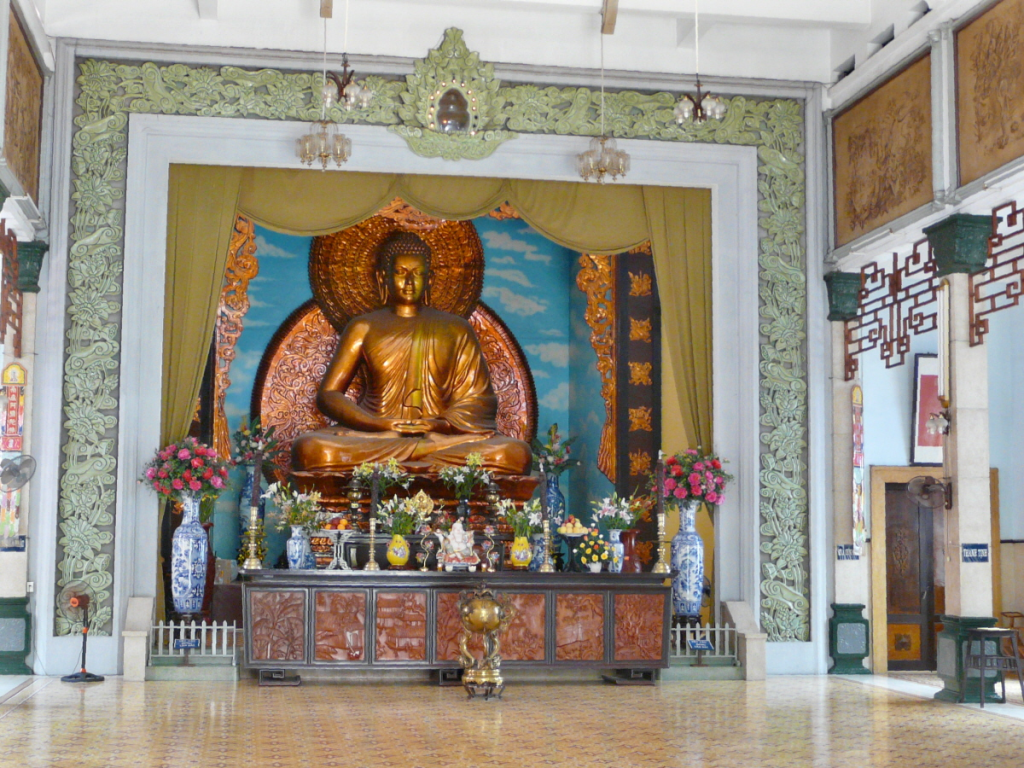
Above: The gilded statue of Gautama Buddha dominates the shrine of Xa Loi Pagoda, Ho Chi Minh City (Saigon), Vietnam
On 21 August, the ARVN Special Forces of Nhu attacked Xá Lợi and other Buddhist pagodas across Vietnam.
The secret police intended to confiscate Quảng Đức’s ashes, but two monks had escaped with the urn, jumping over the back fence and finding safety at the U.S. Operations Mission next door.
Nhu’s men managed to confiscate Đức’s charred heart.
The location chosen for the self-immolation, in front of the Cambodian Embassy, raised questions as to whether it was coincidence or a symbolic choice.

Above: Logo of the Army of the Republic of Vietnam Special Forces
Trueheart and embassy official Charles Flowerree felt that the location was selected to show solidarity with the Cambodian government of Prince Norodom Sihanouk.
South Vietnam and Cambodia had strained relations:
In a speech on 22 May, Sihanouk had accused Diệm of mistreating Vietnamese and ethnic minority Khmer Buddhists.

Above: Norodom Sihanouk (1922 – 2012) (King of Cambodia: 1941 – 1955 / 1993 – 2004)
The pro-Diệm Times of Vietnam published an article on 9 June which claimed that Cambodian monks had been encouraging the Buddhist crisis, asserting it was part of a Cambodian plot to extend its neutralist foreign policy into South Vietnam.
Flowerree noted that Diệm was “ready and eager to see a fine Cambodian hand in all the organized Buddhist actions“.

Buddhist leader Thich Tri Quang, who had travelled throughout the country protesting against religious inequality and the flag ban, began rallying Buddhists in central Vietnam.
He called them to attend a public mass funeral for the Huế victims scheduled for 10 May.
As a result, Buddhist protests were held across the country and steadily grew in size, asking for the signing of a Joint Communique to end religious inequality.
The pagodas were major organizing points for the Buddhist movement and often the location of hunger strikes, barricades and protests.
Thích Trí Quang proclaimed a five-point “manifesto of the monks” that demanded:
- freedom to fly the Buddhist flag
- religious equality between Buddhists and Catholics
- compensation for the victims’ families
- an end to arbitrary arrests
- punishment for the officials responsible

Above: Thích Trí Quang (1924 – 2019)
Diệm agreed to meet with a Buddhist delegation, but increased tension further by demeaning them.
Initially, Diệm refused to pay compensation, believing it was a sign of weakness.
He claimed there was no discrimination in South Vietnam and that all religions had been treated equally with respect to the flag issue.
In regard to the classification of Buddhism as an “association” under Decree 10, Diệm claimed it was an “administrative oversight” that would be fixed (although no action was taken on the matter during his final six months of office).
Diệm labelled the Buddhists “damn fools” for demanding something that according to him, they already enjoyed.
The government press release detailing the meeting also used the expression “damn fools“.

Above: Ngô Đình Diệm
Following the signing of the Joint Communiqué, attendance was limited by agreement between Buddhist leaders and police to approximately 500 monks.
The Joint Communiqué was presented to the press on 16 June.
Thích Tịnh Khiết thanked Diệm and exhorted the Buddhist community to work with the government.
He expressed his “conviction that the Joint Communiqué will inaugurate a new era and that no erroneous action from whatever quarter will occur again.”
He declared that the protest movement was over, and called on Buddhists to return to their normal lives and pray for the success of the agreement.
However, some younger monks were disappointed with the result of the negotiations feeling that Diem’s regime had not been made accountable.
Trueheart was skeptical about its implementation, privately reporting that if Diệm did not follow through, the US should look for alternative leadership options.
The troubles had become a public relations issue for Diem beyond his country, with speculation about a US-Diệm rift being discussed in American newspapers following the self-immolation.

Above: Ngô Đình Diệm
The New York Times ran a front page headline on 14 June, citing leaked government information that diplomats had privately attacked Diem.
It also reported that General Paul Harkins, the head of the US advisory mission in South Vietnam, ordered his men not to assist ARVN units that were taking action against demonstrators.

Above: Paul D. Harkins (1904 – 1984)
The US at the time considered telling Vice President Tho that they would support him replacing Diem as President.

Above: Nguyễn Hữu Thọ (1910 – 1996) (Vice President of Vietnam: 1981 – 1992)
This occurred at the same time as the surfacing of rumours that Republic of Vietnam Air Force Chief of Staff Lieutenant Colonel Đỗ Khắc Mai had begun gauging support among his colleagues for a coup.

Above: Do Khac Mai
The agreement was put in doubt by an incident outside Xá Loi Pagoda the following day.
A crowd of around 2,000 people were confronted by police who persisted in ringing the pagoda despite the agreement.
A riot eventually broke out and police attacked the crowd with tear gas, fire hoses, clubs and gunfire.
One protester was killed and scores more injured.
Moderates from both sides urged calm while some government officials blamed “extremist elements“.
An AP story described the riot as “the most violent anti-Government outburst in South Vietnam in years“.
Furthermore, many protesters remained in jail contrary to the terms of the Joint Communique.

Above: Crowds in front of Xa Loi Pagoda in Ho Chi Minh City (Saigon), Vietnam
The crisis deepened as more Buddhists began calling for a change of government and younger monks such as Thích Trí Quang came to the forefront, blaming Diệm for the ongoing impasse.
Due to the failure of the agreement to produce the desired results, older and more senior monks, who were more moderate, saw their prestige diminished, and the younger, more assertive monks began to take on a more prominent role in Buddhist politics.
Thich Tinh Khiet sent Diệm a letter after the funeral of Thích Quảng Đức, noting the government was not observing the agreement and that the condition of Buddhists in South Vietnam had deteriorated.
Tho denied the allegation.

Above: Thich Tinh Khiet (1891 – 1973)
Ngô Đình Nhu told a reporter:
“If anyone is oppressed in this affair, it is the government which has been constantly attacked and whose mouth has been shut with Scotch tape.”
He criticized the agreements through his Republican Youth organization, calling on the population to “resist the indirections of superstition and fanaticism” and warned against “communists who may abuse the Joint Communique“.
At the same time, Nhu issued a secret memorandum to the Republican Youth, calling on them to lobby the government to reject the agreement, and calling the Buddhists “rebels” and “Communists“.
Nhu continued to disparage the Buddhists through his English-language mouthpiece, the Times of Vietnam, whose editorial bent was usually taken to be the Ngô family’s own personal opinions.

Above: Vietnamese activist Ngo Dink Nhu (1910 – 1963)
A US State Department report concluded that the religious disquiet was not fomented by Communist elements.
In the meantime, the government had quietly informed local officials that the agreements were a “tactical retreat” to buy time before decisive putting down the Buddhist movement.
Diệm’s regime stalled on implementing the release of Buddhists who had been imprisoned for protesting against it.
This led to a discussion within the US government to push for the removal of the Nhus, who were regarded as the extremist influence over Diệm, from power.
The Buddhists were becoming increasingly skeptical of government intentions.
They had received information that suggested that the agreement was just a governmental tactic to buy time and wait for the popular anger to die down, before Diệm would arrest the leading Buddhist monks.
They began to step up the production of critical pamphlets and began translating articles critical of Diệm in the Western media to distribute to the public.
As promises continued to fail to materialise, the demonstrations at Xá Lợi and elsewhere continued to grow.

Diem’s heavy-handed responses at Xa Loi – some 400 monks and nuns were arrested and others cast from the top of a tower – led to mass popular demonstrations against the government.
Diem, it was clear, had become a liability.

Above: Ngo Dinh Diem
Fearing that the Communists would gain further by Diem’s unpopularity, America tacitly sanctioned his ousting in a coup on 1 November 1963.
Diem escaped with his brother Ngo Dinh Nhu to Saigon’s Chinese ghetto of Cho Lon.

Above: Cho Lon, Ho Chi Minh City (Saigon), Vietnam
In the early morning of 2 November, Diem phoned the leaders of the coup and surrendered.
They had taken refuge inside Cho Lon’s unprepossessing little Cha Tam Church, with its Oriental outer gate and cheery yellow walls.
An M-113 armoured car duly picked them up, but they were shot dead by ARVN soldiers before the vehicle reached central Saigon.
Diệm was buried in an unmarked grave in a cemetery next to the house of the US Ambassador.

Above: The undignified death of Ngo Dinh Diem
With clearance from the church janitor, visitors can clamber up into the belfry and under the bells, Quasimodo-style, to stand beside the statue of St. Francis Xavier for the fine views the janitor enjoys of Cho Lon.
He can also point out the pew where Diem and Ngo sat praying as they awaited their fate.

Above: Cha Tam / St. Francis Xavier Catholic Church, Ho Chi Minh City (Saigon), Vietnam
The capital staggered from coup to coup, but corruption, nepotism and dependence upon American support remained constant.

Above: Official seal of Saigon / Ho Chi Minh City, Vietnam
In the countryside, meanwhile, the Viet Cong were forging a solid base of popular support.
Observing Southern instability, Hanoi in early 1964 proceeded to send battalions of NVA (North Vietnamese Army) infantrymen down the Ho Chi Minh Trail, with 10,000 Northern troops hitting the Trail in the first year.

Above: Transporting goods on the Ho Chi Minh Trail from North Vietnam to South Vietnam
For America, unwilling to see the Communists granted a say in the running of the South, yet unable to envisage Saigon’s generals fending them off, the only option seemed to be to “Americanize” the conflict.
In August 1964, a chance came to do just that, when the American destroyer USS Maddox allegedly suffered an unprovoked attack from North Vietnamese craft.
Two days afterwards, the Maddox and another ship, the C Turner Joy, reported a second attack.
Years later, it emerged that the Maddox had been taking part in a covert mission to monitor coastal installations.
The second incident almost certainly never reopened.
Nevertheless, reprisals followed in the form of 64 bombing sorties against Northern coastal bases.

Above: USS Maddox
Back in Washington, senators voted through the Tonkin Gulf Resolution, empowering Johnson to deploy regular American troops in Vietnam, “to prevent further aggression“.

Above: Lyndon Johnson (1908 – 1973) (US President: 1963 – 1969)
The Vietnam War, also called the Second Indochina War, though only officially acknowledged by the American government as a “military action” as the US never officially declared war on North Vietnam, known as the American War by the Vietnamese, was a Cold War era proxy war that occurred in Vietnam, Laos and Cambodia from approximately 1 November 1955 to the fall of Saigon on 30 April 1975.
This war was fought between North Vietnam – supported by the Soviet Union, China and other Communist allies – and South Vietnam – supported by the United States and other anti-Communist allies.
The Viet Cong (also known as the National Liberation Front / NLF), a South Vietnamese Communist common front aided by the North, fought a guerrilla war against anti-Communist forces in the South.
The People’s Army of Vietnam (also known as the North Vietnamese Army) engaged in a more conventional war, at times committing large units to battle.

General George S. Patton IV asked the NVA captain to go aboard a chopper equipped with a loudspeaker and order his men to surrender.
The prisoner refused.
Patton said to him:
“If you don’t go up in the chopper with me and ask them to surrender you have personally signed their death warrants, because I will be forced to obliterate this position.“
The NVA captain again declined.
Patton’s frustration was evident.
He glowered at the man and said:
“God damn it, who is winning this war?“
“You are.“, replied the captain.
Patton shouted:
“Then in that case, why don’t we save the lives of your soldiers and let us take them out and feed them and medicate them?“
The captain said:
“Sir, you did not ask who would win this war.”
“Well, who is going to win this war?“, Patton snorted.
The prisoner said forcefully:
“We will, because you will tire of it before we do.“

Above: George Patton IV (1923 – 2004)
The US intervention in Vietnam was not inevitable.
It evolved from the vacuum left by the collapse of Japan’s Asian empire, followed by the Communists’ victory in China, the Korean War stalemate and France’s defeat in 1954.
But it also grew out of the Cold War decisions of three US Presidents:
- Truman’s to move away from Roosevelt’s anticolonialism

Above: Harry S. Truman (1884 – 1972) (US President: 1945 – 1953)
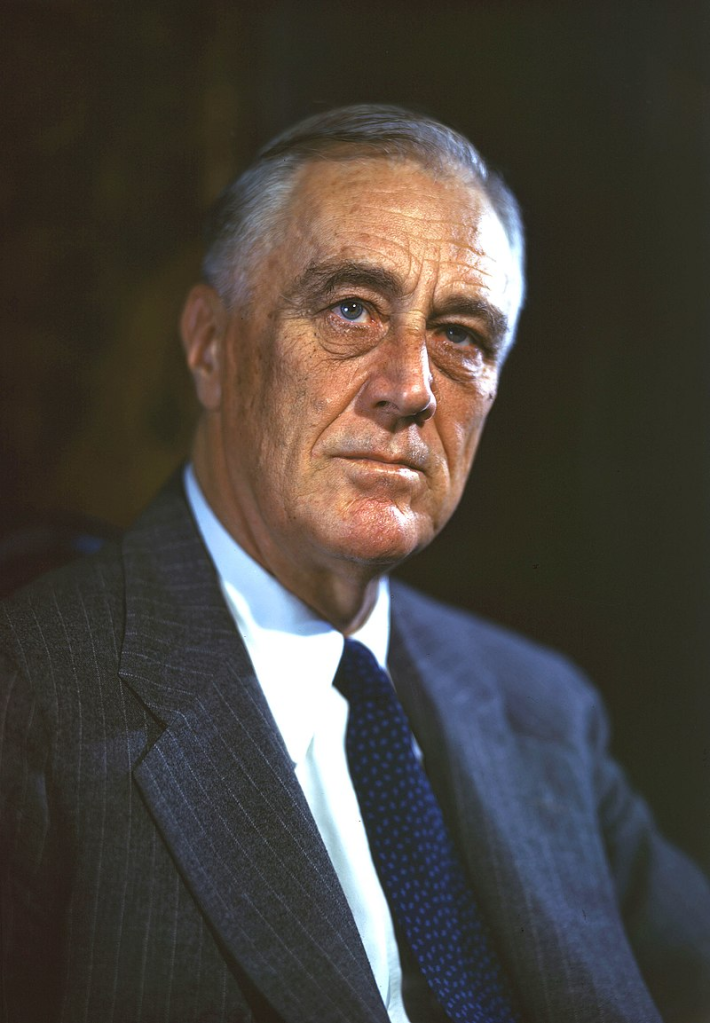
Above: Franklin Delano Roosevelt (1882 – 1945) (US President: 1933 – 1945)
- Eisenhower’s to block the Vietnamese national elections in 1956 and prop up the Diem regime.

Above: Dwight D. Eisenhower (1890 – 1969) (US President: 1953 – 1961)
Kennedy’s to increase the number of US “military advisors“, Special Forces and CIA agents in South Vietnam.
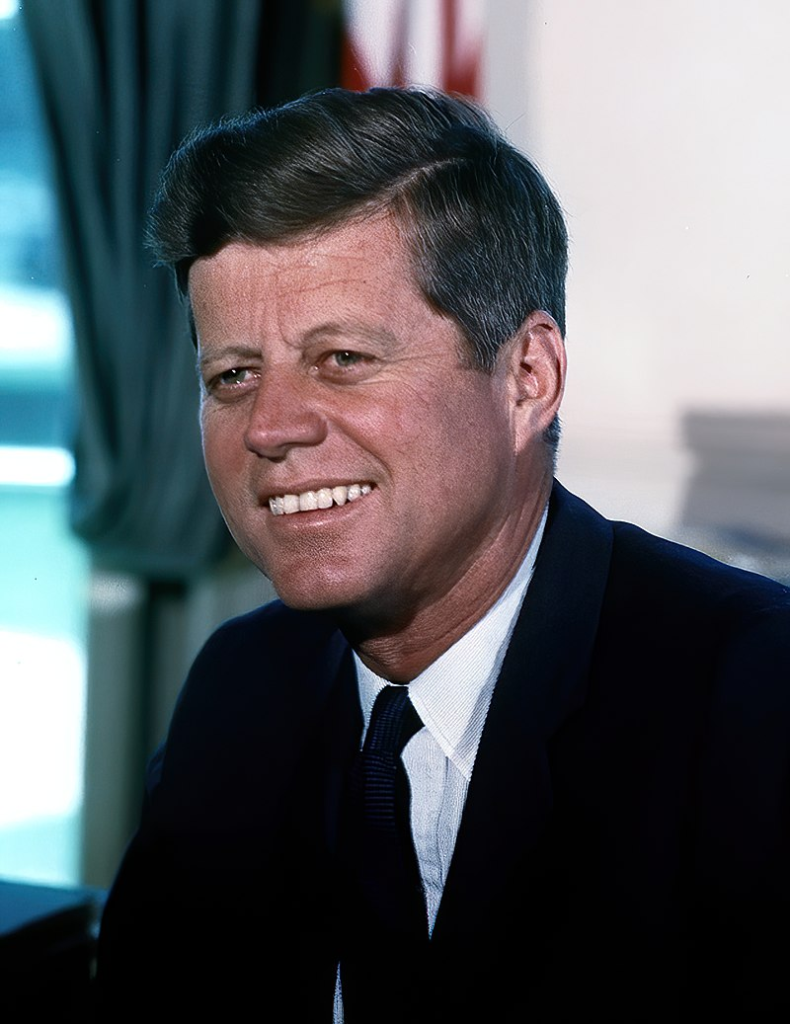
Above: John F. Kennedy (1917 – 1963) (US President: 1961 – 1963)
All three intended to transform Vietnam into a “proving ground for democracy in Asia“.

Above: (in green) Location of Vietnam
All Communist troops and supporters were supposed to have regrouped north in the Democratic Republic of Vietnam, leaving the southern Republic of Vietnam to non-Communists and various shades of opposition.
When the elections failed to take place, the Ben Hai River became the de facto border until 1975.
In reality, both sides of the DMZ were anything but demilitarized after 1965.
Anyway the border was easily circumvented – by the Ho Chi Minh Trail to the west and sea routes to the east – enabling the North Vietnamese to bypass a string of American firebases overlooking the River.

One of the more fantastical efforts to prevent Communist infiltration southwards was the US Secretary of Defense Robert McNamara’s proposal for an electronic fence from the Vietnamese coast to the Mekong River made up of seismic and acoustic sensors that would detect troop movements and pinpoint targets for bombing raids.
Though trials made in 1967 met with some initial success, the McNamara Line was soon abandoned:
Sensors were confused by animals, especially elephants, and could be triggered deliberately by the tape-recorded sound of vehicle engines or troops on the march.

Above: Robert McNamara (1916 – 2009) (US Secretary of Defense: 1961 – 1968)



Above: Images of the McNamara Line
Nor could massive, conventional bombing by artillery and aircraft contain the North Vietnamese, who finally stormed the DMZ in 1972 and pushed the border 20 km further south.
Exceptionally bitter fighting in the territory south of the Ben Hai River (I Corps Military Region) claimed more American lives in the five years leading up to 1972 than any other battle zone in Vietnam.
Figures for North Korean losses during that period are not known, though thousands more have died since the end of the War from inadvertently detonating unexploded ordinance.
So much in firepower was unleashed over this area, including napalm and herbicides, that for years nothing would grow in the impacted chemical-laden soil, but the region’s low rolling hills are almost entirely reforested with a green sea of pine, eucalyptus, coffee and acacia.
During the Vietnam / American War, Quang Tri and Quang Binh, the two provinces either side of the DMZ, were the most heavily bombed and saw the highest casualties – civilian and military, American and Vietnamese.

Above: Looking across the Bến Hải River toward North Vietnam, March 1968
Names made infamous in 1960s and 1970s America have been perpetuated in countless films and memoirs:
- Con Thien (27 February 1967 – 28 February 1969)

Above: Company E, 2/12 Marines 105mm firing in support of 1/1 Marines near Con Thien, 25 November 1967

- the Rockpile (1966 – 1973)

Above: The Rockpile

- Hamburger Hill (13 – 20 May 1969)

Above: US Army photographer and assistant climbing through the devastated landscape on Dong Ap Bia after the battle of Hamburger Hill

- Khe Sanh (21 January – 9 July 1968)

Above: A burning fuel dump after a mortar attack at Khe Sanh
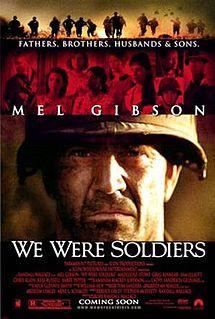
For some people the DMZ will be what draws them to Vietnam, the end of a long and difficult pilgrimage.
For others it will be a bleak, sometimes beautiful, place where there is nothing particular to see but where it is hard not to respond to the sense of enormous desolation.

North of the DMZ is one of the region’s main attractions – the Tunnels of Vinh Moc, where villages created deep underground during the American / Vietnam War have been preserved.

Above: Tunnels of Vinh Moc
South of the Hien Luong Bridge over Ben Hai River are Truong Son Cemetery and the firebases of Doc Mieu and Con Thien.

Above: Truong Son Cemetery

Above: At Doc Mieu Fire Base

Above: Con Thien Fire Base
The area’s other notable wartime locations lie west and south of Dong Ha, which is the closest town to the DMZ.

Above: Dong Ha, Quang Tri Province, Vietnam
While it is not possible to cover everything in one day, the most interesting of the places are included on organized tours from Dong Ha or Hué.

If you have limited time then the Vinh Moc Tunnels should be high on your list, along with a drive up Highway 9 to Khe Sanh, both for the scenery en route and the sobering battleground itself.

Above: Khe Sanh Victory Monument
Note that as most sites are unmarked and unremarkable to look at, a knowledgeable local guide is indispensable.
More importantly:
Guides know which paths are safe.
In the last decade, local farmers have still occasionally been killed or injured by unexploded ordinance in this area.

Although Vietnam was reunified in 1975, there still exists a palpable north-south divide, one that many tourists pick up on as they head across the DMZ.
Of course, many of the differences stem from the ideological division that followed World War II and the protracted bloody war between the two sides.
However, there have long been other factors at work.

One of these is the relative fertility of the soil – parts of the South get three rice harvests per year, while in the North it is usually one.
This leads to a difference in character between north and south – northerners are typically more frugal and southerners more laidback, partly because the latter have historically had less work to do for the same reward.

There are also notable differences in tradition.
Ho Chi Minh City flaunts its Westernization, while Hanoians are just as proud of their city’s colonial and dynastic eras’ structures.

Above: Ho Chi Minh City, Vietnam

Above: Hanoi, Vietnam
Then there are dialectical differences:
Ask a traditionally clad Hanoian girl what she is wearing and she will say it is “ao zai“.
Ask a woman from Ho Chi Minh City the same thing and it would be an “ao yai“.
Trained ears will also hear that there is another dialect at work in the centre of Vietnam.

However, for visitors, the most enjoyable aspect of the north – south divide is likely to be the food.
The quintessential northern food is pho bo – the beef noodle soup is found throughout Vietnam, but originated in Hanoi, where it is still at its best.
Other northern dishes include hotpots, rice gruels, sweet and sour soups.
Southern flavours include curries and spicy dipping sauces, often married with a touch of sugar and coconut milk to balance the heat.
However, most renowned nationwide is central cuisine – both Hoi An and Hué boast dishes of astonishing variety.

We dream of food.
We detect differences.
We ponder the past.

One cannot understand the Vietnam War without discovering the DMZ.
It has been a long road to the DMZ and what awaits beyond it.
Soon, we will explore it together….
(To be continued….)

Sources: Wikipedia / Google / The Rough Guide to Vietnam / William F. Brown, Our Vietnam Wars: As told by 100 veterans who served / Bob Greene, Homecoming: When the Soldiers Returned from Vietnam / Brian M. Sobel, The Fighting Pattons
